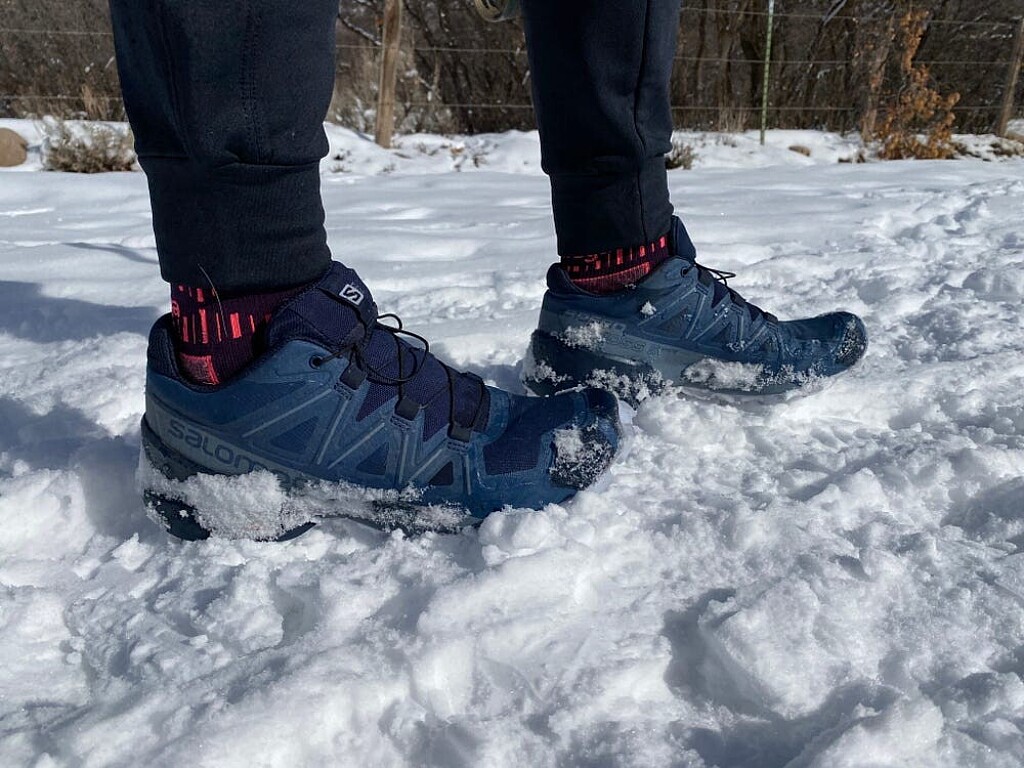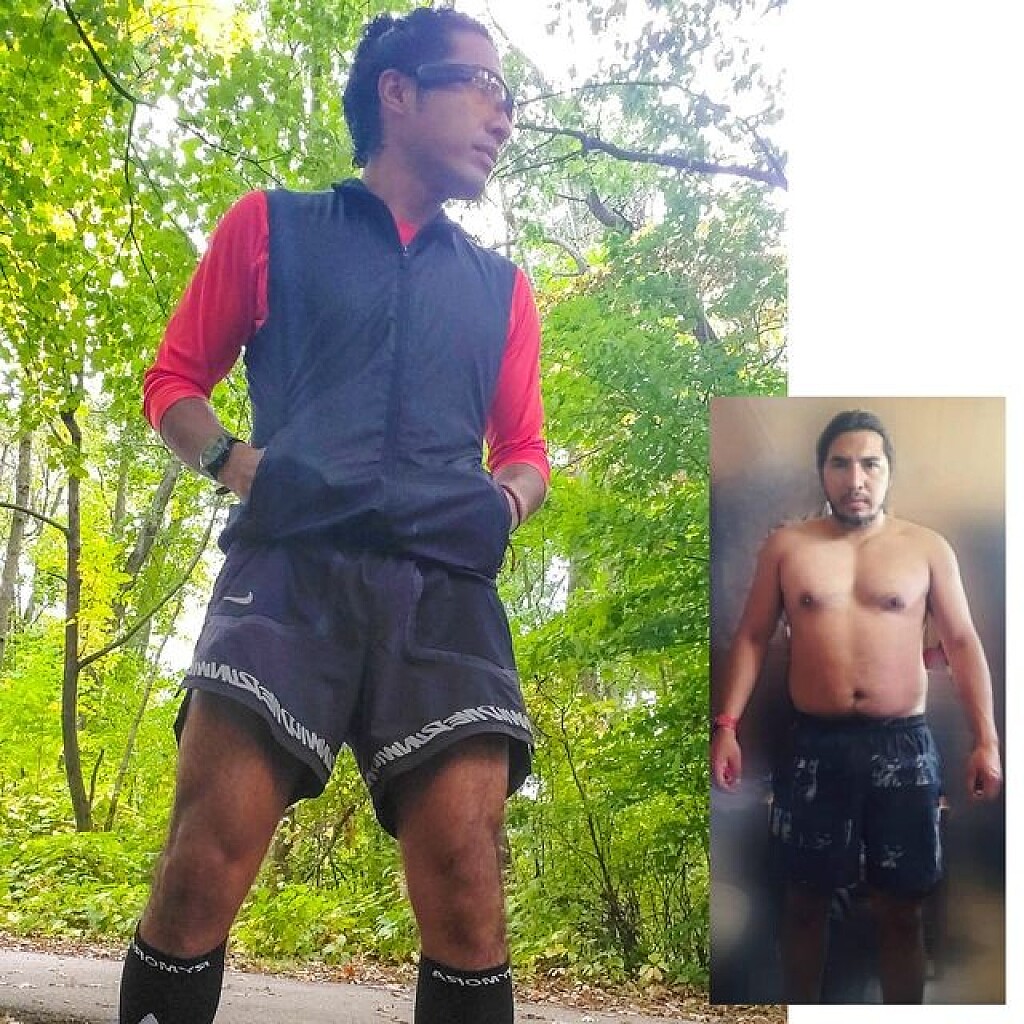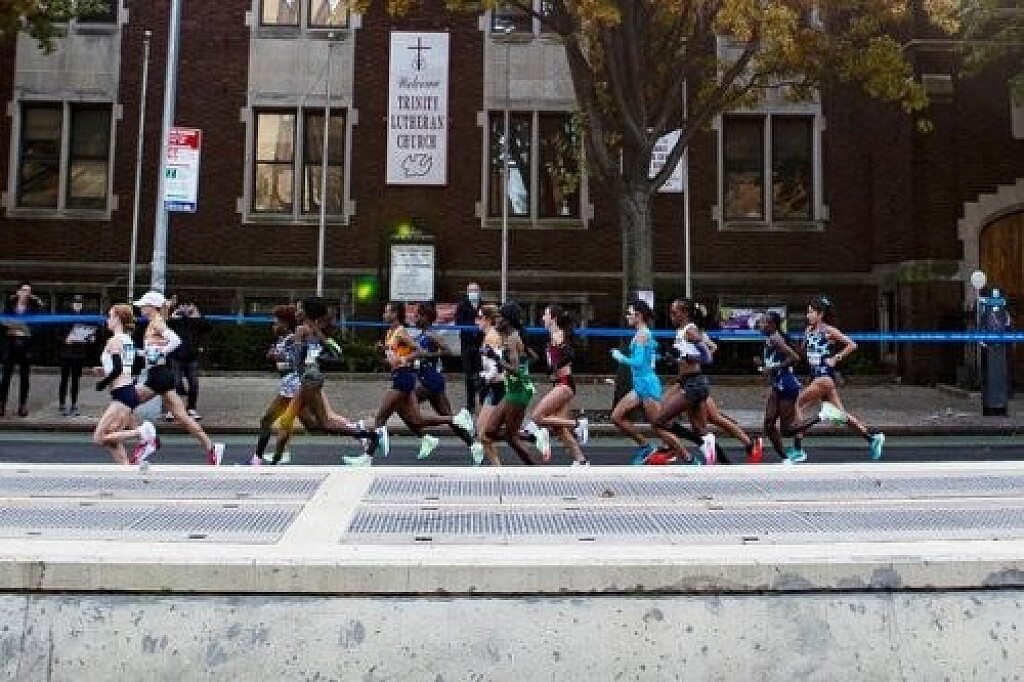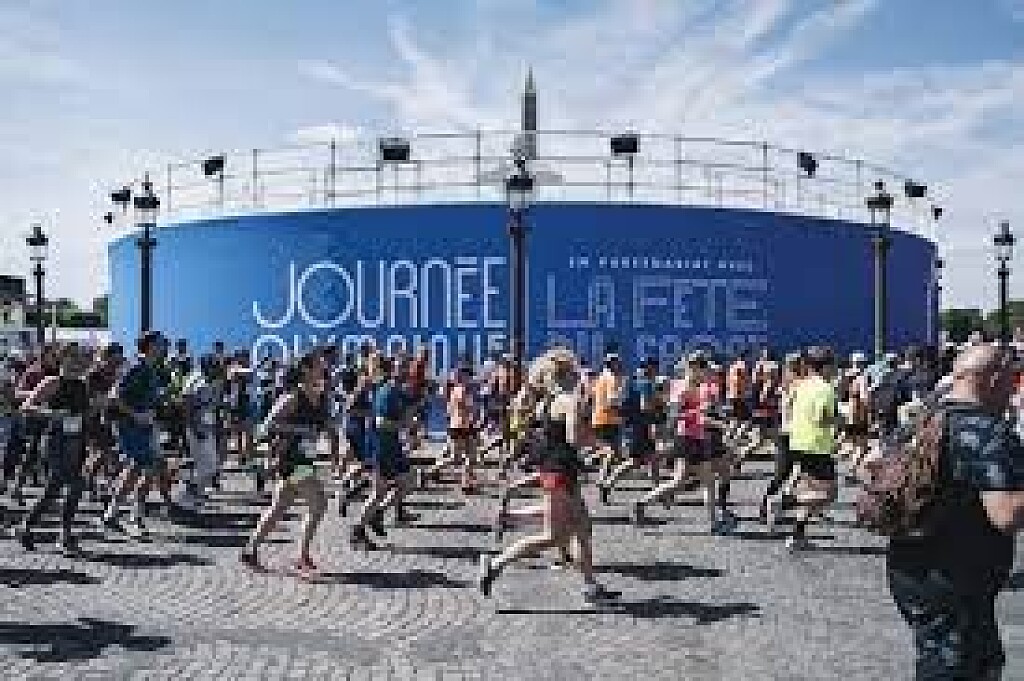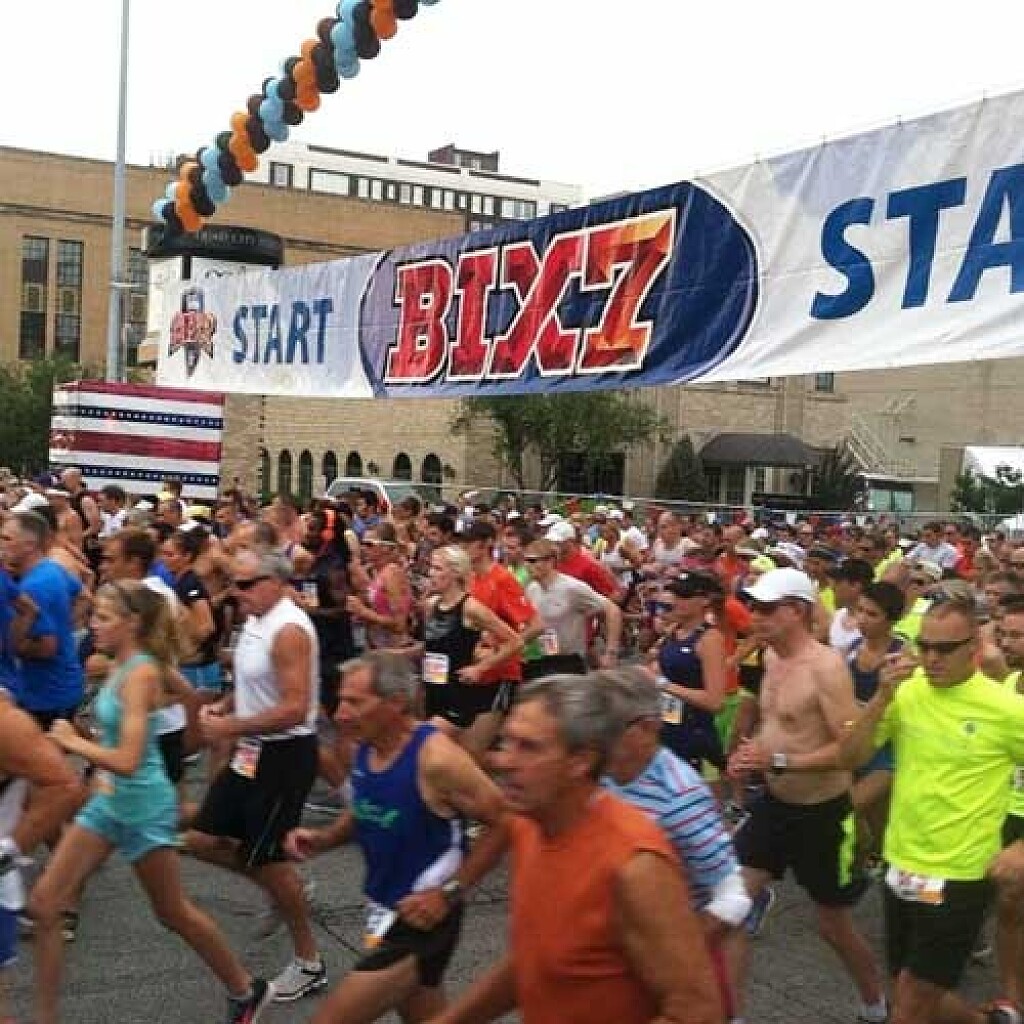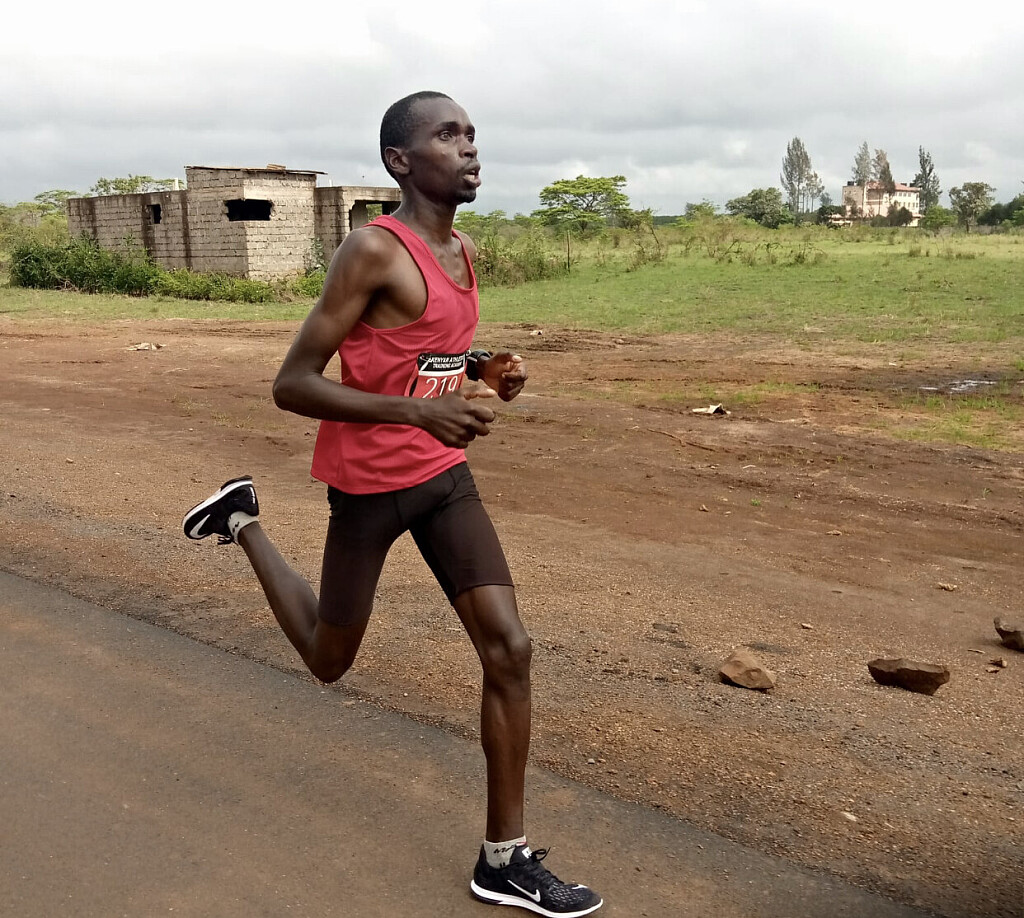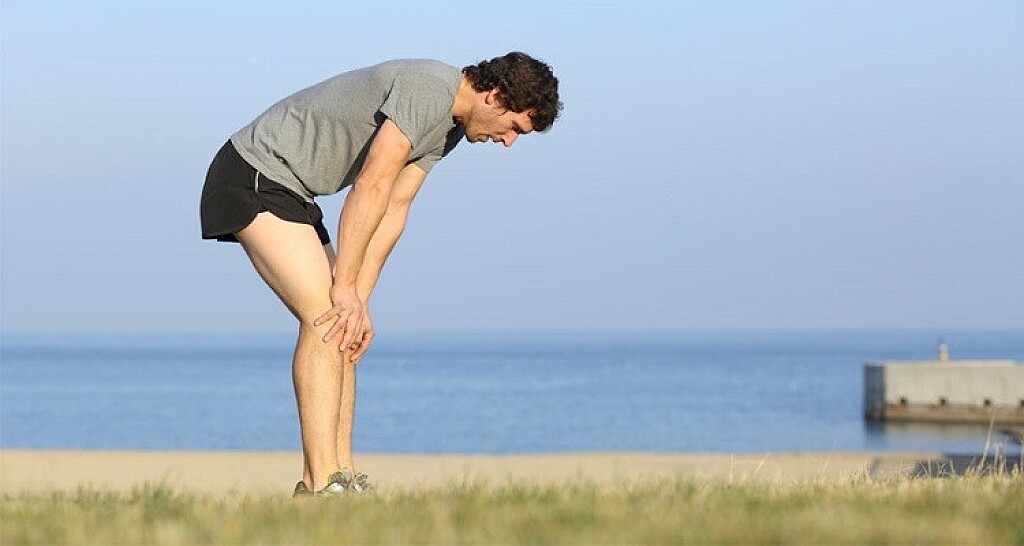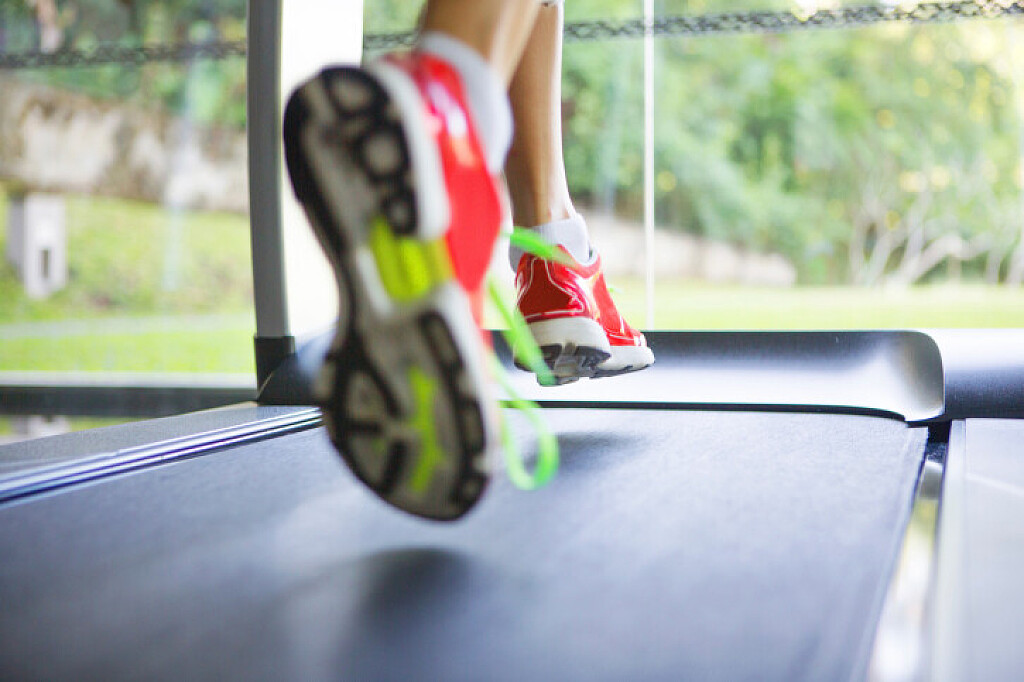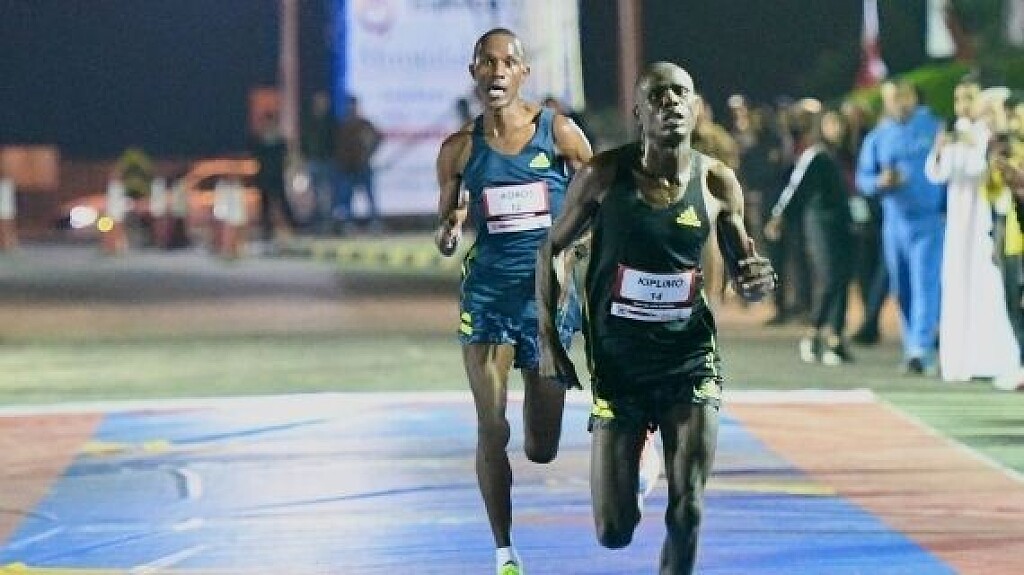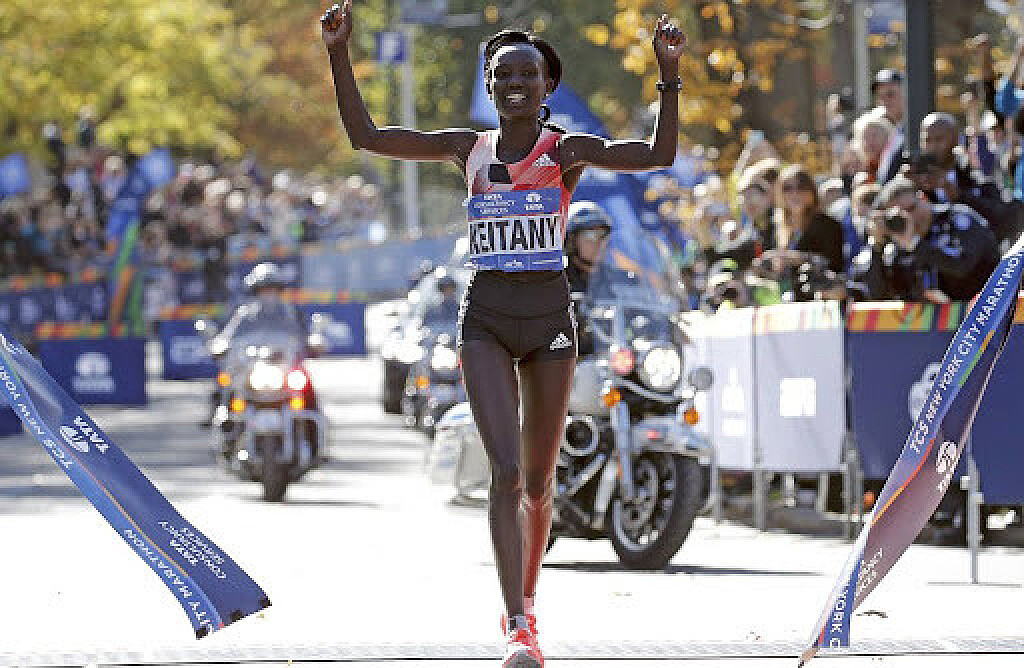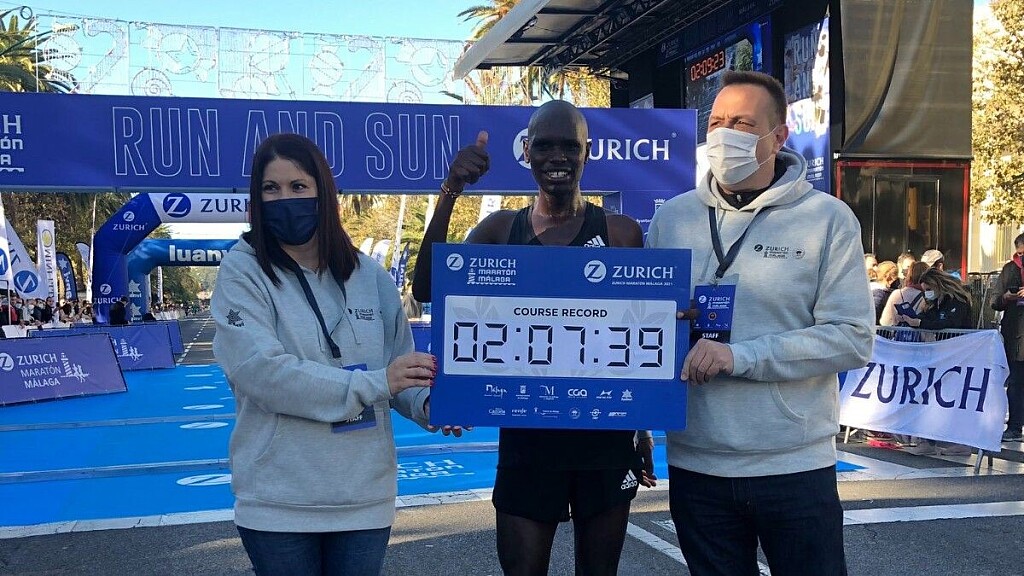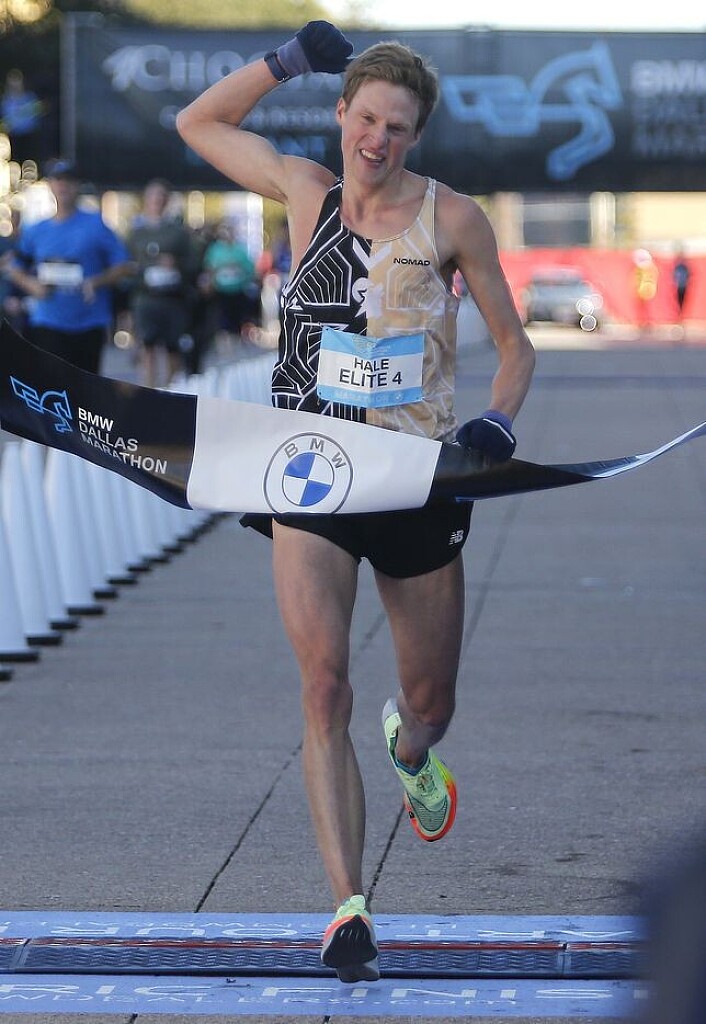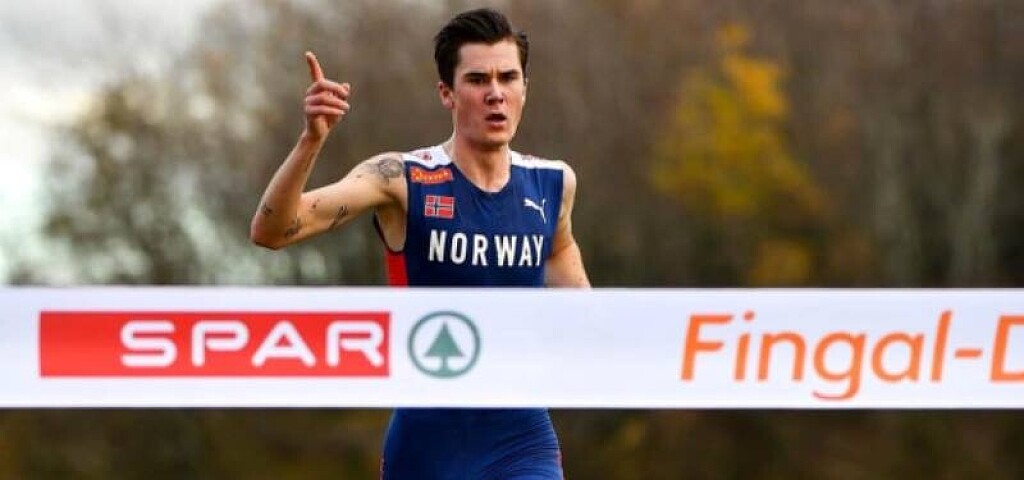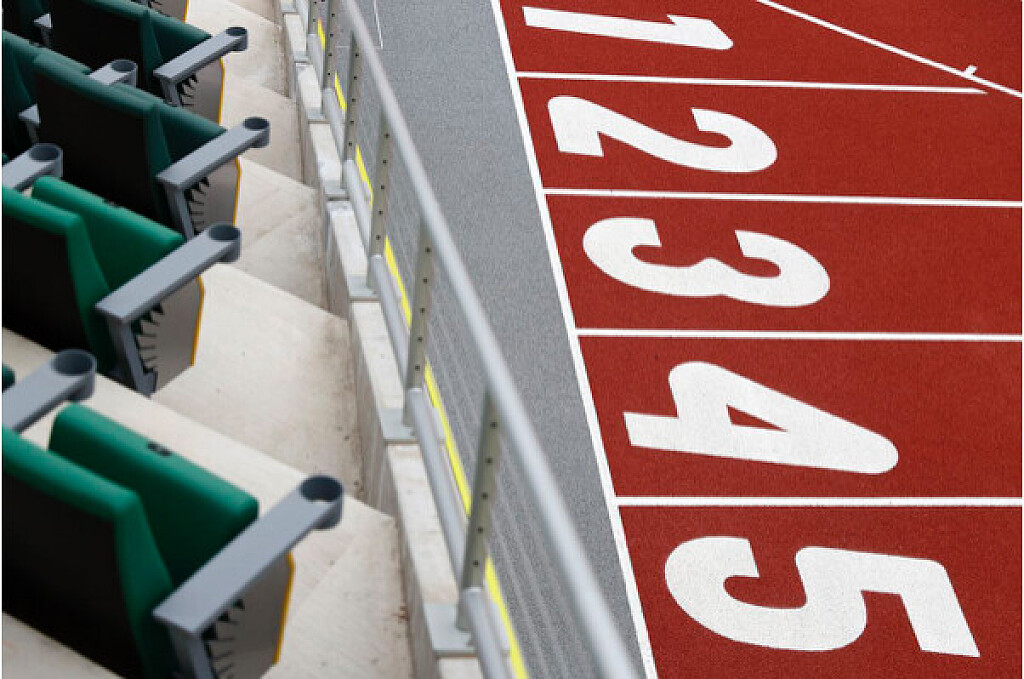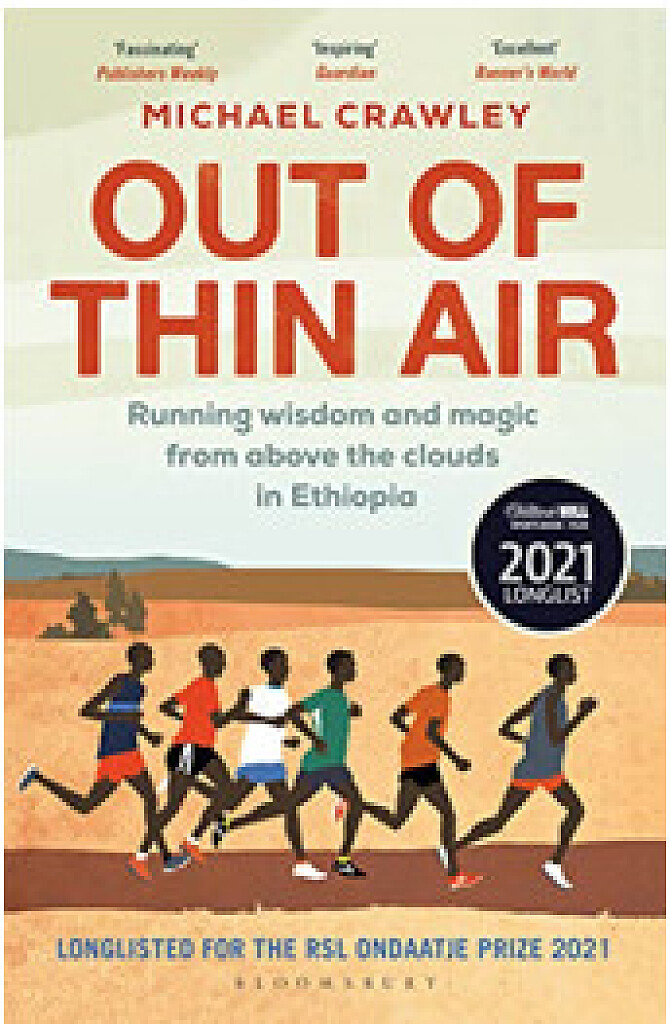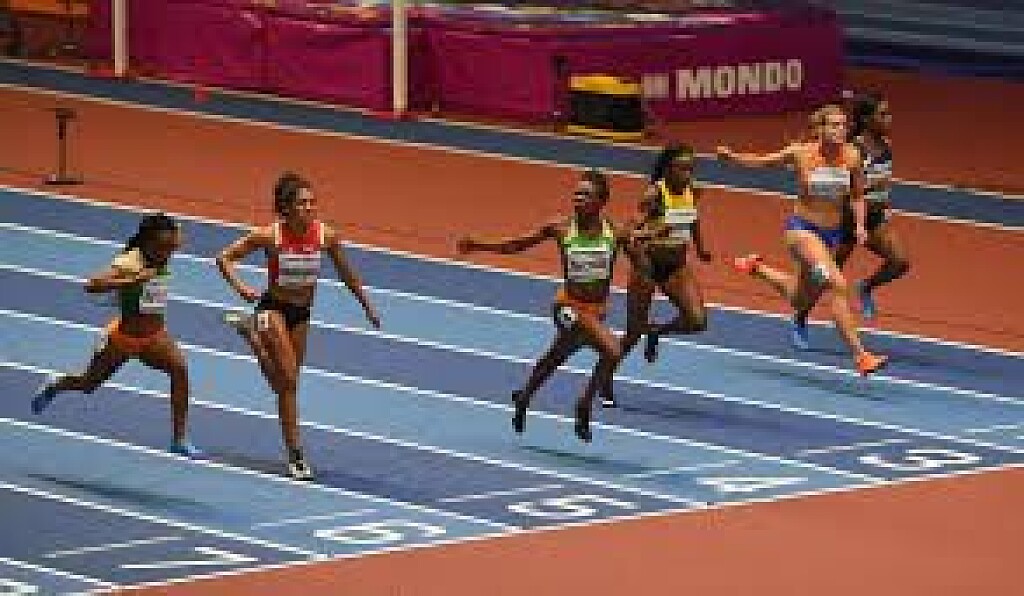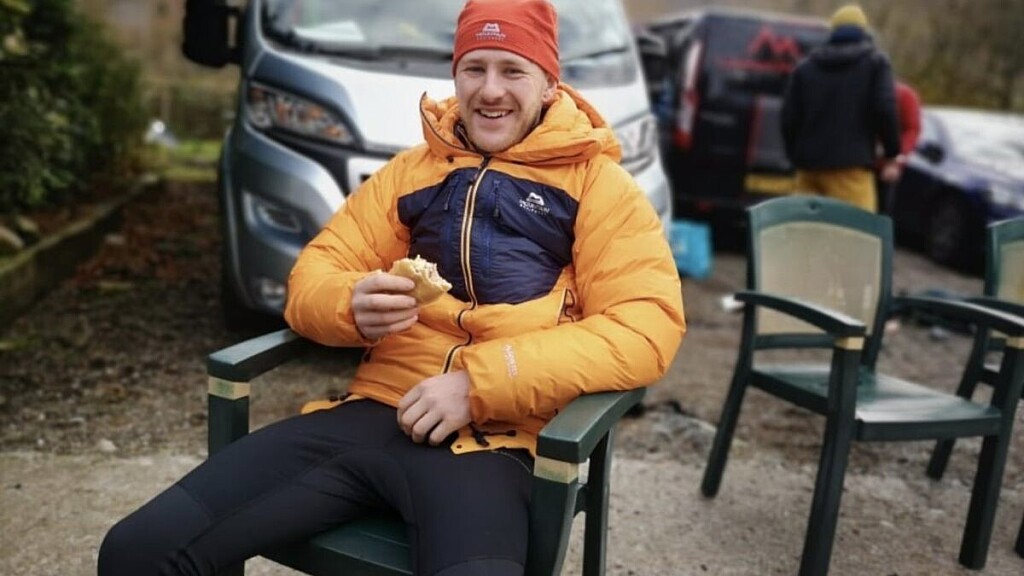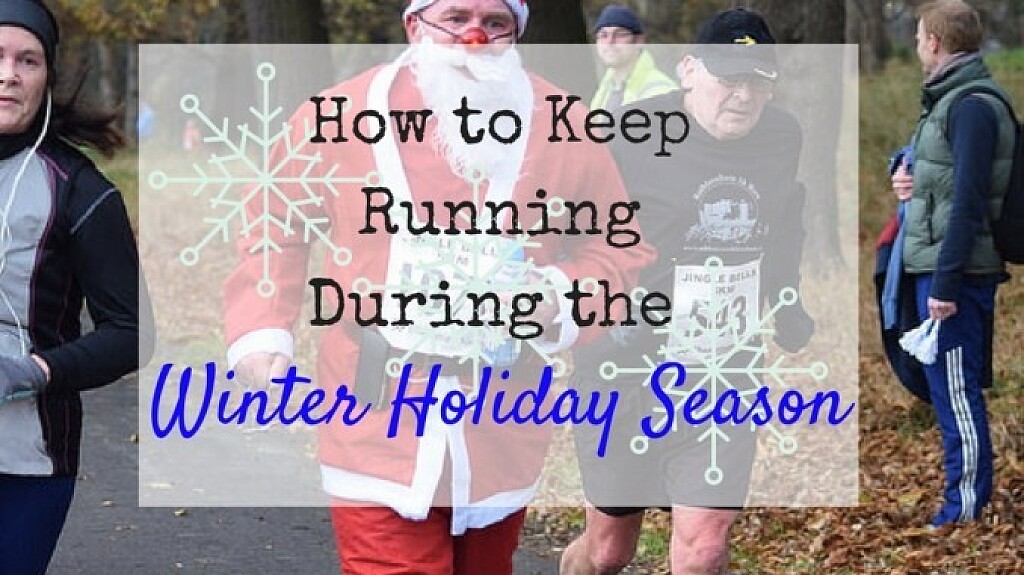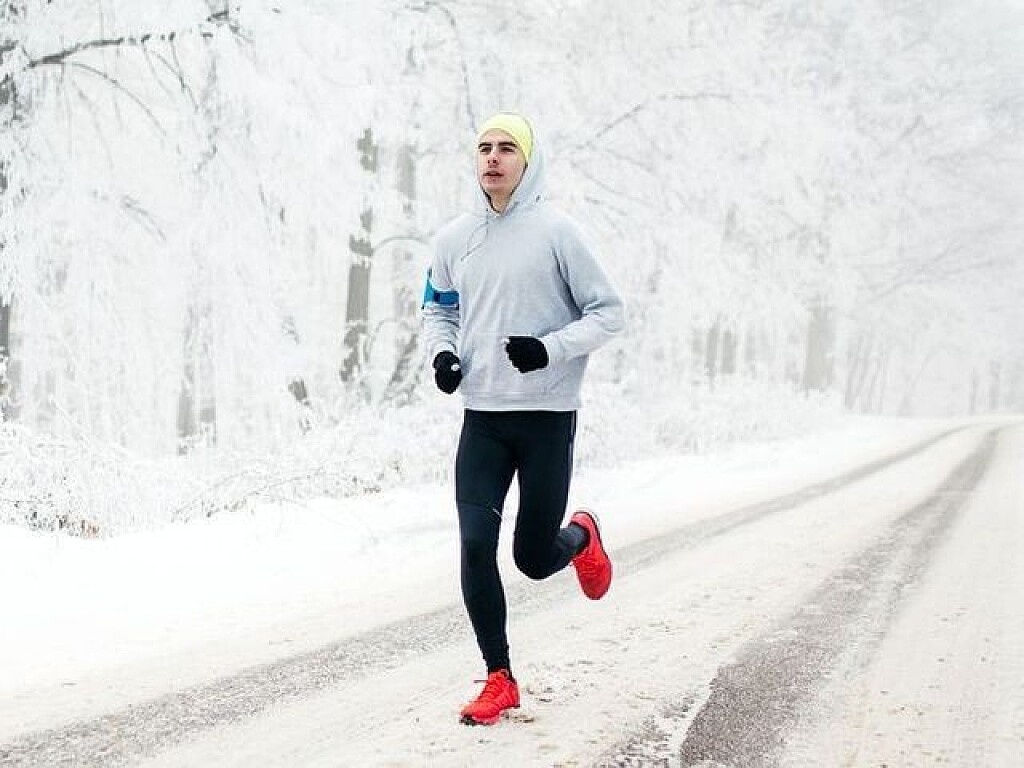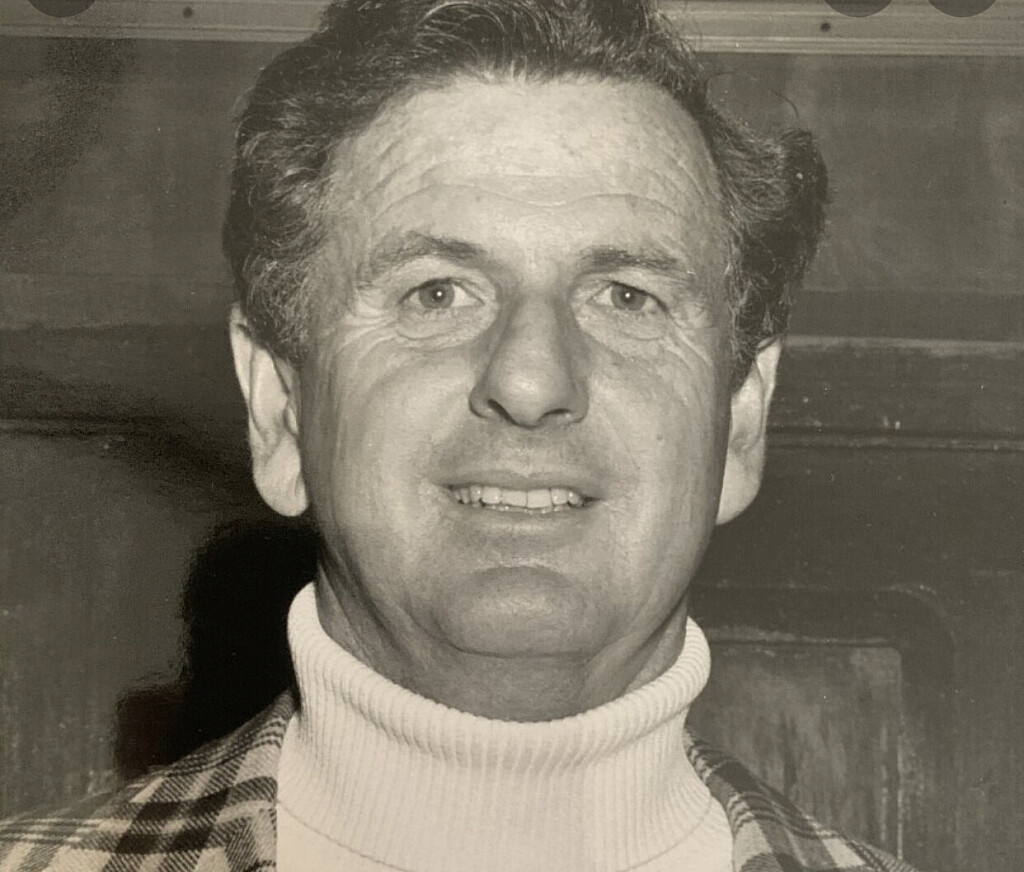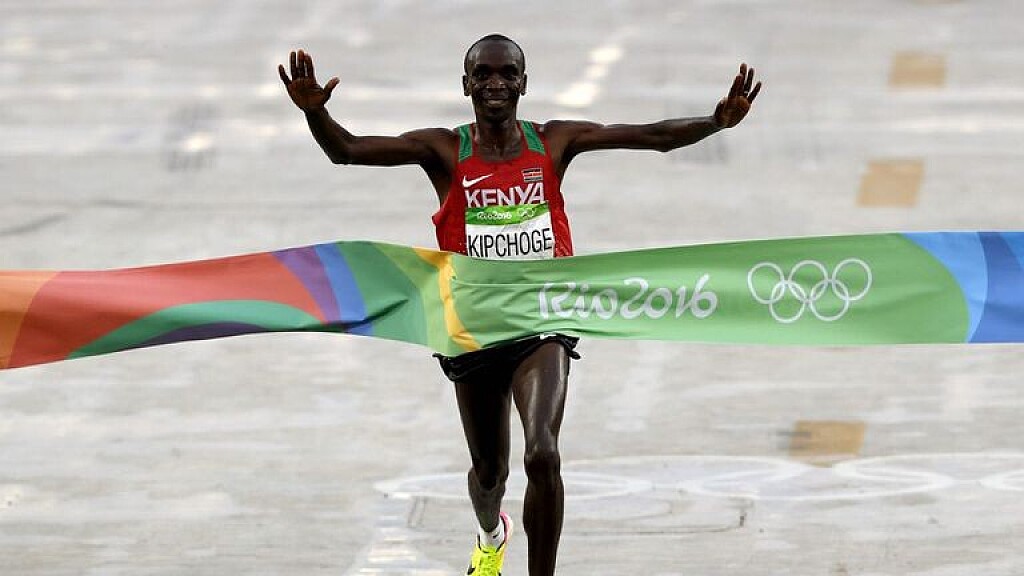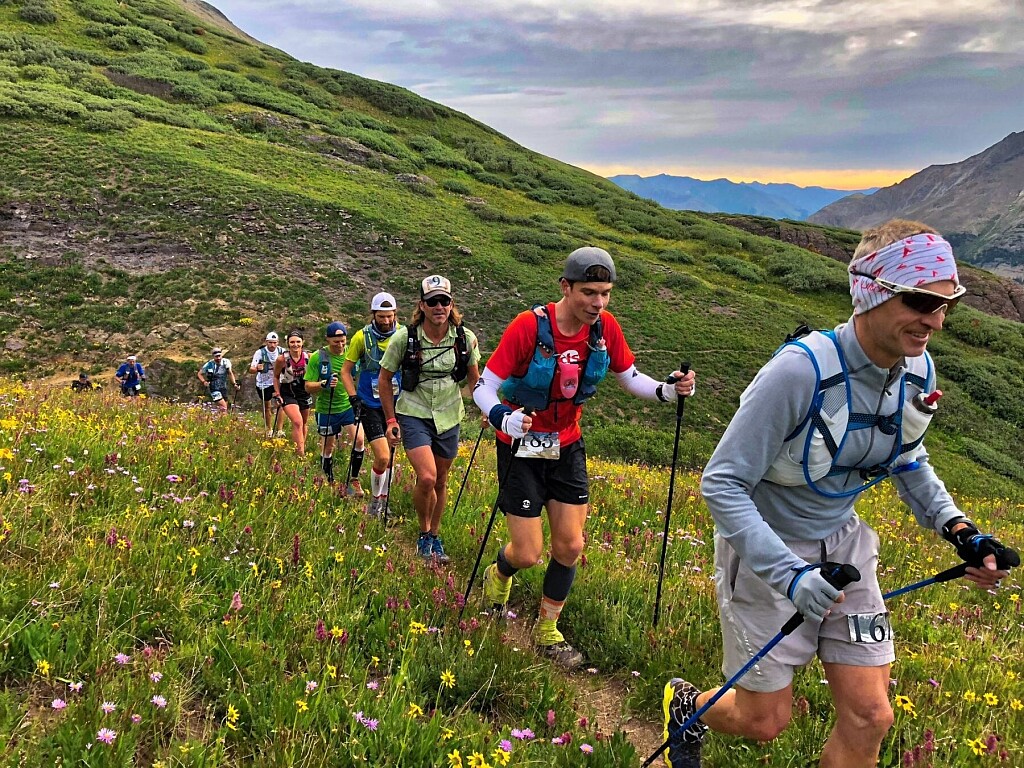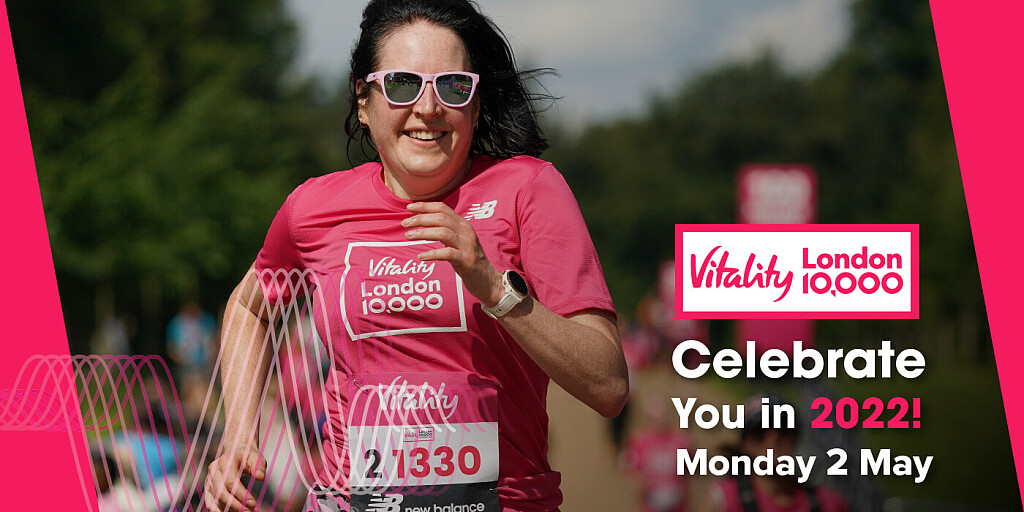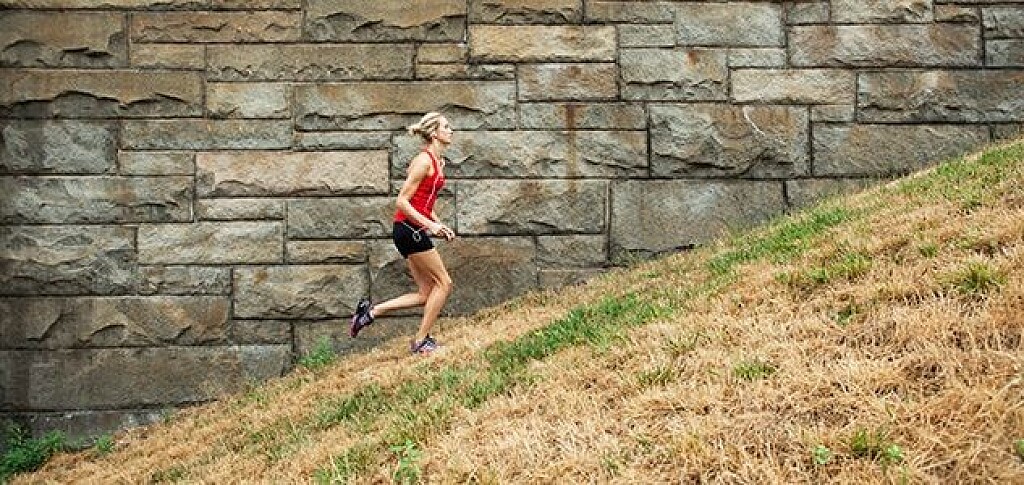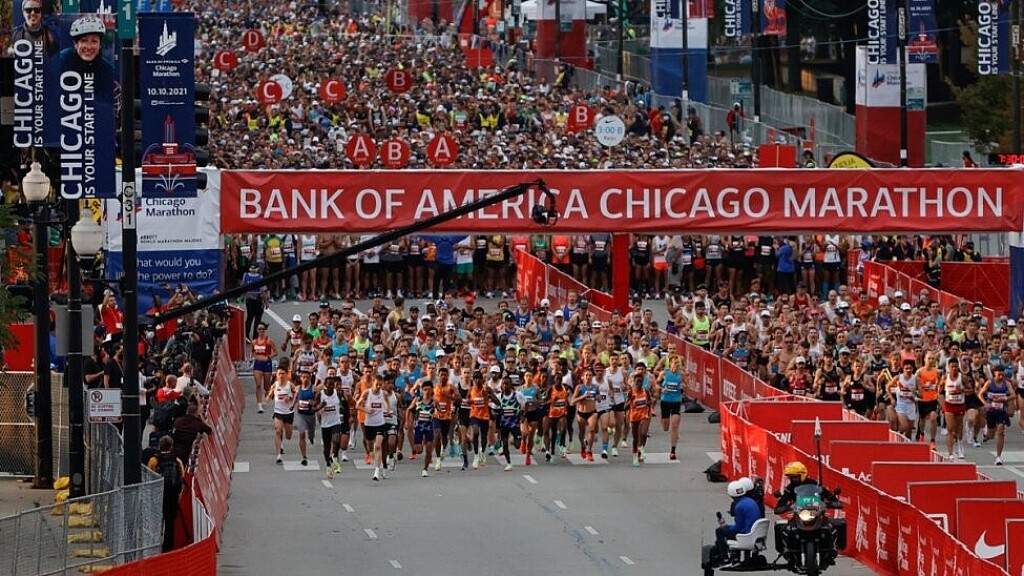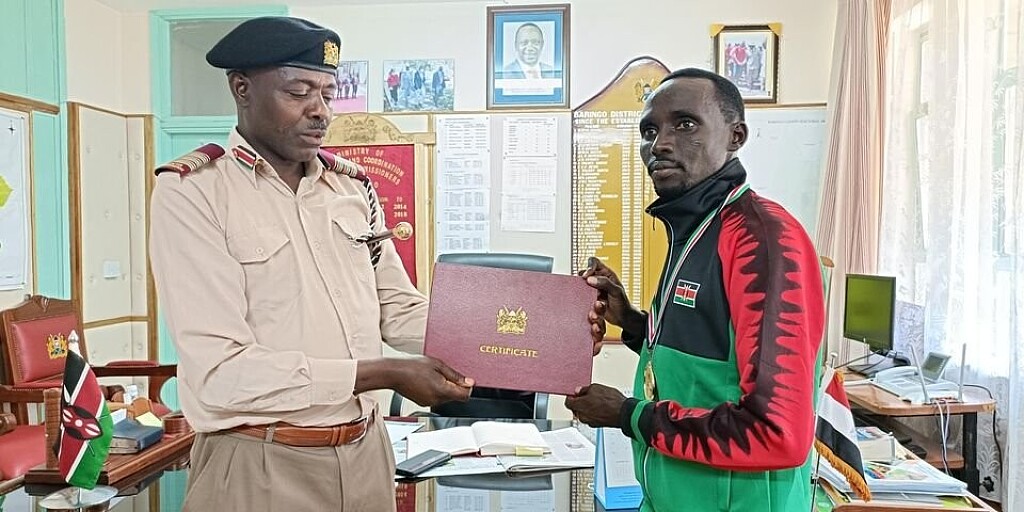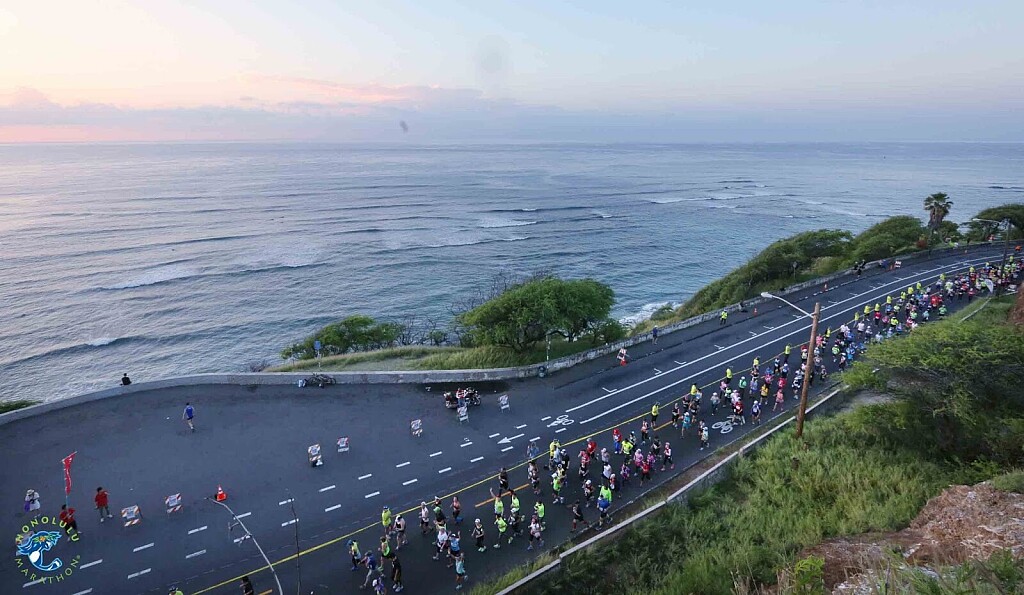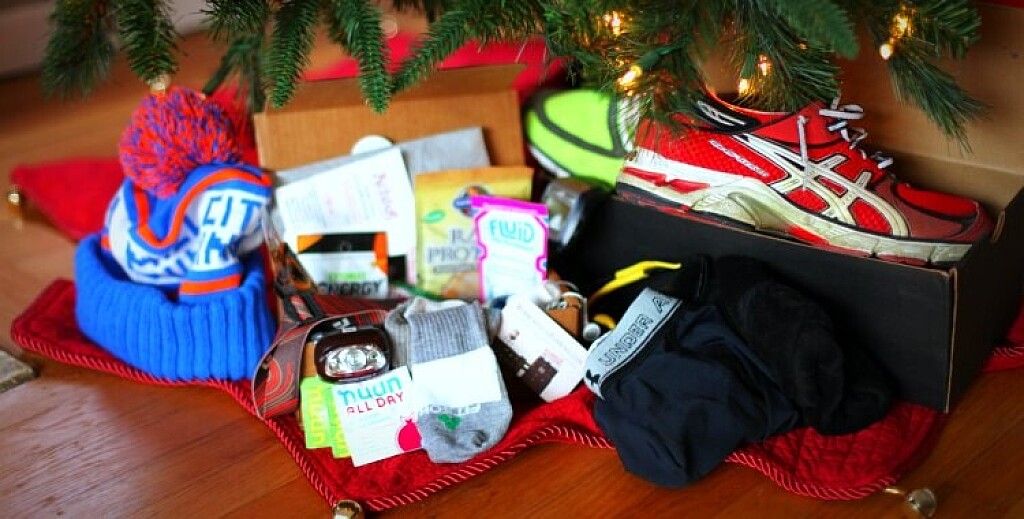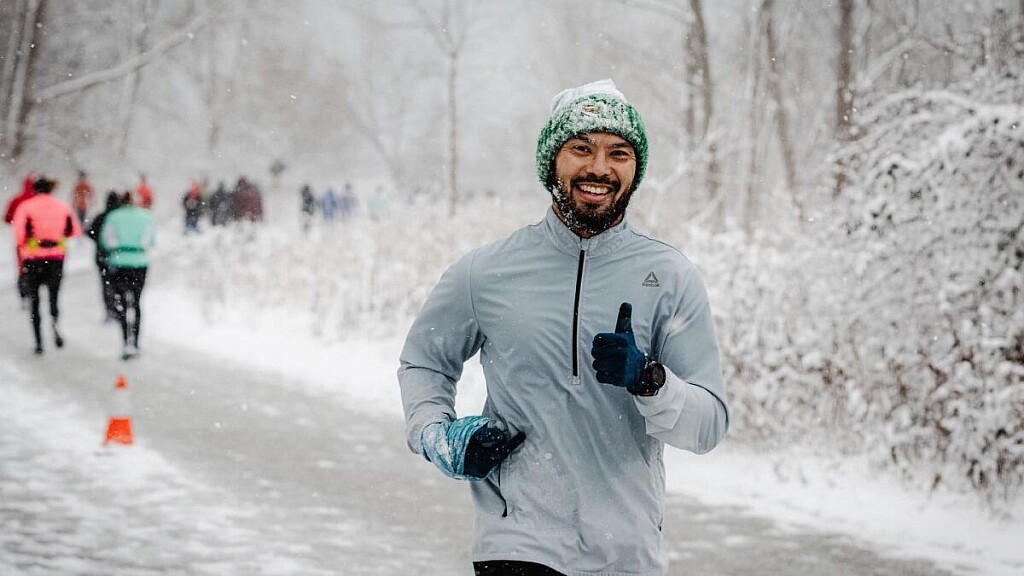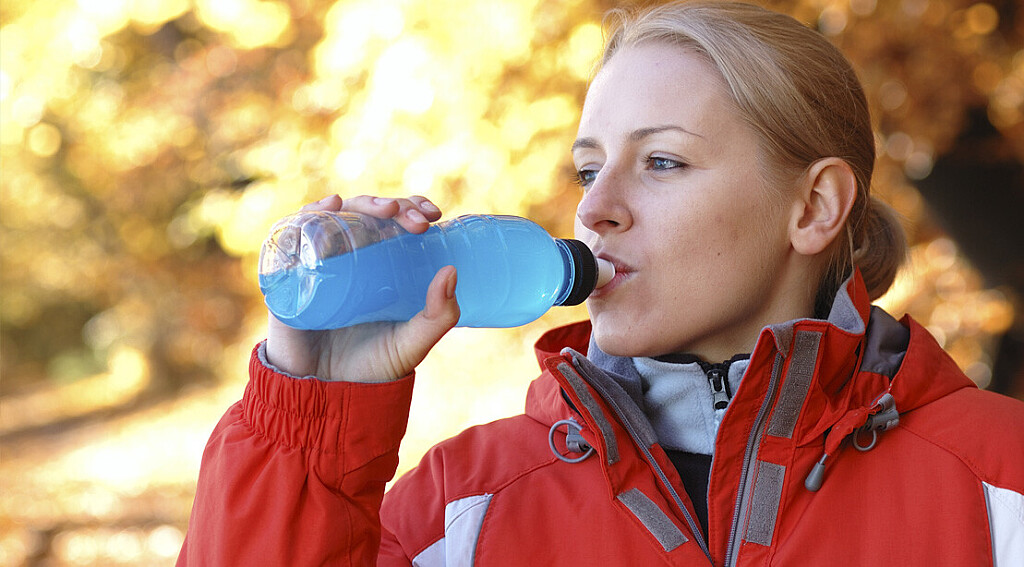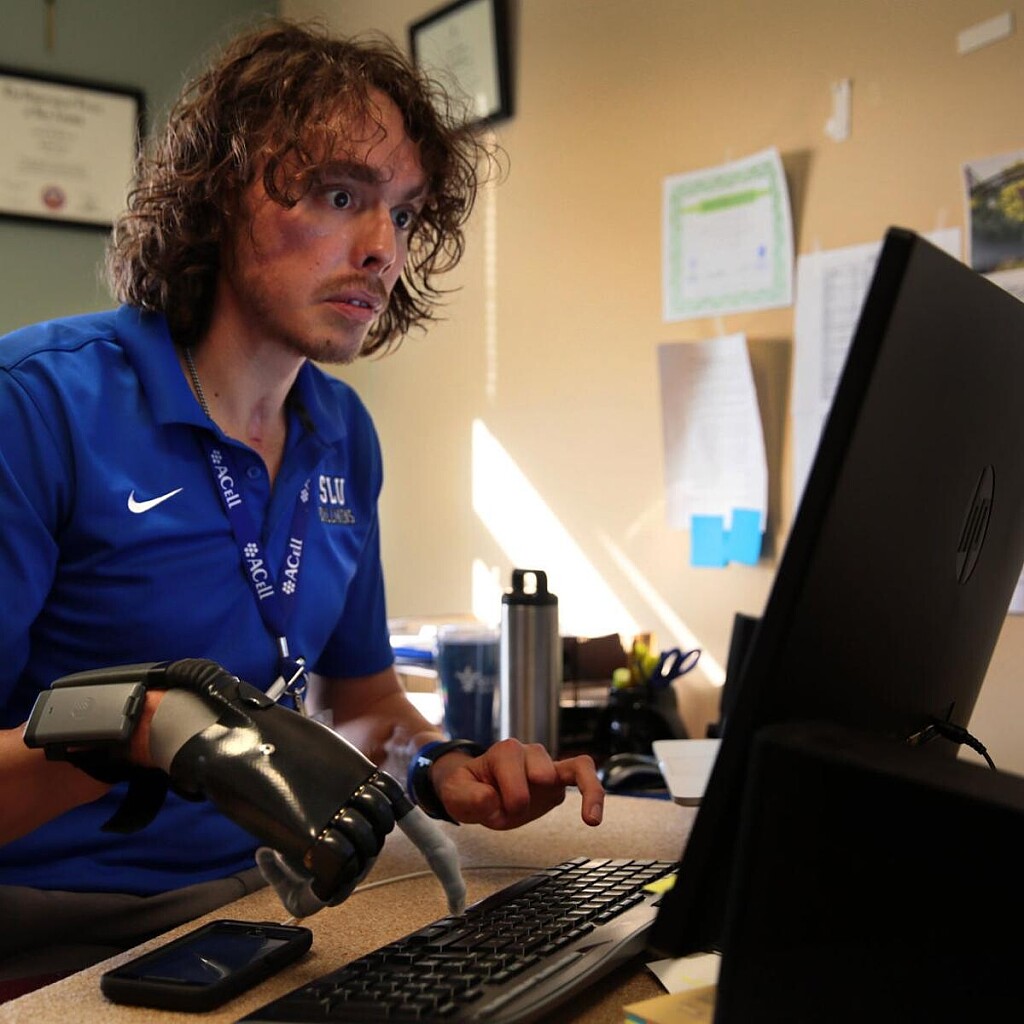Running News Daily
Running News Daily is edited by Bob Anderson in Mountain View, California USA and team in Thika Kenya, La Piedad Mexico, Bend Oregon, Chandler Arizona and Monforte da Beira Portugal. Send your news items to bob@mybestruns.com Advertising opportunities available. Over one million readers and growing. Train the Kenyan Way at KATA Running Retreat Kenya. (Kenyan Athletics Training Academy) in Thika Kenya. Opening in june 2024 KATA Running retreat Portugal. Learn more about Bob Anderson, MBR publisher and KATA director/owner, take a look at A Long Run the movie covering Bob's 50 race challenge.
Index to Daily Posts · Sign Up For Updates · Run The World Feed
The Four Pillars of Distance Running
1. Aerobic Conditioning
When the term “aerobic conditioning” is mentioned, miles and miles of running immediately come to mind—but that is only one aspect of aerobic conditioning.
I like to compare aerobic conditioning to communication—when communicating, you are attempting to get information or a message from a sender to a receiver through a medium or channel. Without any one of those aspects, the message does not travel. In aerobic conditioning, you are attempting to move oxygen from a sender to a receiver through a medium. The sending is done by your heart and lungs, and to maximize the those organs’ abilities to transmit oxygen, you need to develop more capillaries—which are built up by the body when an athlete performs an aerobic function for longer than 60 minutes (but are more effective for lengths of effort longer than 75 minutes).

That takes care of sending, but what is the receiver? And, how is the ability to receive maximized?
The receiver is the muscles, and we increase the muscles’ ability to take on oxygen by training at or close to the velocity at which the maximum volume of oxygen can be moved, or vVO2max. vVO2max training is done as repeats in bouts of 90 seconds to about five minutes with a rest interval that is approximately equal to the duration of vVO2max effort.

Last is the medium in which the oxygen travels. Well, we all know that oxygen is carried in red blood cells through arteries to the muscles, except for the veins, which carry oxygenated blood from the alveoli of the lungs back to the heart. So how is that process improved?
Being able to move in the most efficient manner possible.
Getting rid of the excess hydrogen ions in the blood that is broken down from lactic acid buildup due to burning glycogen without oxygen with higher-intensity running.
Efficient running (or running economy) is developed and improved by a combination of the next three pillars. Your body’s ability to get rid of hydrogen ions is developed by training at a velocity equal to about 80% to 90% of an athlete’s vVO2max. That is done by what is known as tempo running (which is closer to the 80% area), lactate threshold or cruise intervals (done at about 85%), and critical velocity, which is 90% to 91% and also has a vVO2max improvement component.
2. Speed or Anaerobic Condition
The next pillar of distance running is speed or anaerobic condition (which by definition means “without oxygen”). With regard to the high school cross country distance of 5k, science tells us that anaerobic use of fuel comprises about 7% of an athlete’s effort. That is where many coaches come up short in their application of anaerobic training.
That’s not to say that speed is the only thing it takes to make a distance runner. On that thought, in 1987, Bob Kennedy won the Kinney (now Footlocker) National Cross Country Championship. A year later, as a true freshman at Indiana, he won the NCAA National Cross Country Championship. He was the first native-born American to break 13 minutes in the 5,000-meter event and never ran more than 35 miles a week in high school—and, after that, about 45 miles a week as a pro with mostly speed work as a staple of his training.
High school coaches all over the U.S. got a hold of that information and created maybe the worst decade in American high school distance running in history. Running a 3200m in under nine minutes was rare in the 1990s. Where are we at now? At the last Arcadia Invitational, 14 runners finished faster than nine minutes in one meet. So, where does that leave us with speed? More than just training your body to use a fuel source without the use of oxygen, anaerobic speed training has several other functions.
First, running fast is a skill that utilizes a combination of strength, reactiveness, and coordination, all of which must work in unison to perform effectively. That skill is no different than hitting a baseball, throwing a football, or even shooting a basketball. If an athlete in any of those sports spends time not practicing those functions, they lose muscle memory for that skill. It is for that reason that speed work must be a part of a distance runner’s training, year-round.
Why does a distance runner need the skill of speed? The more comfortable a distance runner is at running fast, the easier it feels to run at an aerobic race pace and the more economical the athlete performs the function of running. Speed is an athletic movement. Endurance runners do well in distance races, but endurance athletes win distance races. Speed helps turn the endurance runner into an endurance athlete.
Several forms of speed training can be utilized to build the function of speed in the athlete. Speed training as basic as 60-yard strides at the end of a warm-up can be trained almost on a daily basis. Flys of 30-50 meters are also useful. The types of speed training utilized by most distance coaches are:
Speed
Speed endurance
Special endurance 1
Special endurance 2
Those distances go all the way up to 600 meters and build fast twitch, strength, and lactate tolerance. The variance of distances and speeds used together and sequenced properly in a macrocycle work together to prepare the athlete for the culminating event.
3. Strength and Mobility
If you wanted to build a V8 engine that can also go from 0-60 in a few seconds, you wouldn’t put that engine in the frame of a Pinto. That’s where this third pillar comes in—if you assign the work required to build a strong, aerobic, and fast athlete into a young runner without a strong athletic background, many stress-related problems will start to occur because their body just can’t handle it.
So, what type of strength does a distance runner need in order to handle the stresses of training required to improve? The basic answer is…all of it.
I like to build strength from the knee to the shoulder and all points in between. Start with the quadriceps to the hip flexors with the lunge matrix or band work, and the runner can handle the mileage required to build an aerobic engine. The abdominal and all the core muscles help the athlete hold form throughout the race; if that form breaks down, it could reduce the runner’s speed and efficiency while increasing the likelihood of injury.
The chest and shoulder strength come in at the end of the race—during the kick, extra upper-body strength is used to bring about that last bit of form and speed needed to win the sprint finish. Mobility comes into play with the reduction of stiffness of muscles and joints, which could adversely affect movement, cause reduced efficiency, and increase the risk of injury. Strength training should be performed throughout the year and macrocycle to an extent necessary to prepare the athlete to perform their best.
4. Rest
I’ve heard many coaches talk about how their athletes performed due to a specific type of training or workout, but athletes don’t actually respond to a program or workout—they perform as a result of recovering from the stresses of that program or workout. Rest is essential. The stress put on an athlete flexes the body—if they don’t recover from that stress, they cannot benefit from it. The various stresses create micro tears in the muscle and those tears need to heal. That’s where recovery comes in.
Rest in distance running comes in different forms at different times, and for different reasons. Easy running is a form of rest. The reason the athlete runs on a recovery day instead of no work at all is that the run elevates the runner’s pulse to above 120 beats per minute. That helps bring the healing blood to the damaged tissues from the hard workout and flush out the toxins created by the damage of the workout. Recovery days should be treated with as much importance as each hard workout day.
Another form of rest is sleep. The endurance runner experiences a stress that is unlike most other athletes, and most of the healing from that stress comes through sleep. An endurance athlete needs at least eight hours per night, and if that is not possible due to schoolwork or other factors, the coach should alter or reduce the training because the athlete is unable to properly recover from the workout.
The last type of rest is actual days off. During a macrocycle, a rest day can be done a few ways without reduction of performance. Once a week is the most popular among high school athletes; however, a high school athlete should not go more than 21 days without at least one rest day.
Outside of the macrocycle, the athlete needs a rest period more for psychological than physiological reasons. High school coach and physiology teacher Scott Christensen says a high school runner needs about six weeks off in a calendar year. Other coaches say that rest of longer than two weeks at a time leads to injury once the athlete starts back up. The best method is the one that works for your program and athletes, but they do need some form of a rest period following a season.
(12/18/2021) ⚡AMPby Jeremy Duplissey
Why You Should Reach for Your Trail Shoes for Winter Road Running
It's dumping snow outside my office window, and I'm watching the black pavement and gray sidewalk disappear under a blanket of winter white. Instead of plotting a treadmill run because of the weather, I'm gleefully getting amped up for a "trail" run right from my front doorstep. As a runner who likes road running and doesn't mind the occasional treadmill or track session, but thrives (heart, soul, and body) on the natural surfaces of trails, I welcome winter weather for changing up my neighborhood once in a while. Plus, I think it's just dang fun to laugh in the face of adversity and run in a snowstorm; in a short amount of time, it makes me feel like I can do anything.
Another situational bonus: In a winter snowstorm, I'd rather run out the door than clean off my car and drive through town on potentially icy roads to reach a trail.

When the roads turn to trails because of a hearty snowstorm, sure, I pull on layers and gloves and a beanie. But I also reach for one key item of cold-weather gear: trail running shoes. Here's why.
Why Trail Shoes are Your Best Cold-Weather Running Shoes
No-Slip Grip
While road shoes have smooth outsoles, the toothy lugs on the underbelly of trail shoes are there to grip loose dirt, gravel, mud, and rocks. Coincidentally, they work great on snow. Road shoes all but guarantee a slip on snow and ice, while trail shoes dig in for secure footing. Choose trail shoes with especially luggy soles, opting for toothy protrusions of rubber over more-shallow tread patterns, for winter running.
Some trail shoes come with built-in, hard metal carbide spikes for extra icy conditions-just don't forget to take them off before walking across your nice wooden porch or interior floors.
(Note: An alternative or additional option for particularly slick winter surfaces is adding traction to any shoe; still, opt for trail shoes over road because of reasons below.)
Secure Foothold
Some road running shoes do a decent job of securing feet in place. Others skew more toward a sock-like fit, and can get away with the lack of support over the top of your foot because they're meant to run on smooth, flat roads. Trail running shoes, on the other hand, are built with heartier overlays, or, reinforcements of material that keep feet in place on everything from scree fields to off-camber trails cutting across the sides of a mountain. That kind of secure hold is what you want on snowy surfaces, where you never know just how much the snow is going to give-and subsequently, your foot is going to move-with every step.
Weather Protection
If you run in particularly cold or nasty winter weather regularly, or your feet tend to get cold to the point of pain on winter runs, opting for cold-weather trail running shoes made out of Gore-Tex or other winter barrier materials, like eVent, can help keep you comfortable. While there are a handful of road running shoe models available in Gore-Tex (Brooks Ghost GTX), more winterized options exist among trail running shoes. But even non-winterized trail shoes-without Gore-Tex or eVent uppers-can keep feet warmer than road shoes; the extra overlays and heartier materials of trail shoes add insulation.
Overall Burliness
To arm runners against pokey tree roots, pointy rocks and other natural features, trail running shoes are built with burlier materials than are road running shoes. Those burly materials both protect your feet from winter cold, and help keep shoes intact under the rigors of winter weather. Also, the lightweight midsole cushioning of many road running shoes can actually harden up under freezing temperatures, turning a usually plush road shoe to feel stiff underfoot. Most trail running shoe midsoles are selected to perform consistently under temperature ranges.
Also, there's an inherent, contagiousness of a trail shoe's burliness-it rubs off on the human stepping into them. Once armored with a rugged, durable, capable pair of trail running shoes, you're ready to head out the door and charge that winter weather for an oh-so-convenient, from-home trail run.
(12/18/2021) ⚡AMPby Trail Runner Magazine
How to Fuel Properly in Cold Conditions
For those who like to train outdoors throughout the winter months, we salute you. From slippery sleet to skin-peeling wind chill, there's seemingly nothing that can keep you inside. But if you're brave enough to face the cold, then you need to understand how to properly adjust your fueling for your wintry outdoor pursuits.
The season of layers can be a time to make a few important tweaks to your sports nutrition habits. That's because exercising in cold temperatures presents some unique nutrition and hydration challenges you're not faced with during the summer months. Make a few missteps and it could suck all the remaining warmth out of your winter training.
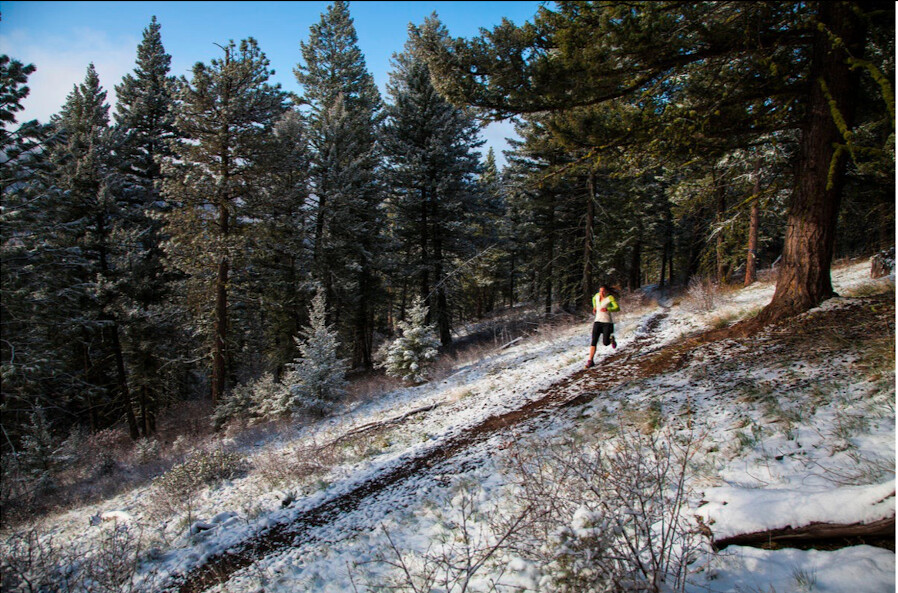
Here's everything you need to know to stay comfortable and safe while still performing at an optimal level-even when the weather outside is frightful.
You may be hungrier than usual
While you may run or ride the same route in warmer months without the urge to reach for the feed bag, that may not be the case during the deep freeze. In cold weather, it's normal for your body temperature to drop, which can stimulate appetite and drive up feelings of hunger. Hence, if you become chilled during winter exercise you'll likely find yourself searching for calories. You should permit yourself to eat-and, better yet, not get hungry in the first place.
Hunger pangs can increase the perception of effort, which may cause you to scale down the pace or prematurely call it quits. Also, eating stokes the furnace, generating heat and helping warm your body a degree or two. Food's overall warming effect is known as thermogenesis. Your body generates more heat when in a fed state than when you have an empty stomach. Think about that flushed feeling you have after polishing off a huge meal.
So eating not only provides fuel but also increases heat production (warmth). That means you should never let yourself get too "low" during exercise in the cold or you risk succumbing to hunger and a case of shivers.
There isn't much in the way of research regarding the impact that working out in chilly climates has on fuel stores. But we do know that your body is going to allow some additional energy above what is needed for muscular contraction for preserving body temperature and to warm and humidify the air you breathe when you exercise in the cold. These processes can be considered non-shivering thermogenesis and may necessitate the need to consume calories to compensate for. If you do end up getting really cold, research demonstrates that muscle glycogen is a primary fuel source to generate the heat needed in the body to combat any shivering that occurs. (Shivering is involuntary muscle tensing that generates heat.) So even if exercising at lower intensities, the onset of shivering can drain this vital energy source as the body further ramps up thermogenesis.
It's important to keep in mind that prolonged exhaustive exercise can itself lead to glycogen depletion which, in turn, could compromise your ability to maintain proper thermal balance and making it harder to continue your workout and raising the risk for hypothermia. Also, if you are wearing a lot of winter gear, you will burn a few more calories to carry the extra weight of layers of clothes, and any gear such as skis.
What this means is that for cold weather exercising lasting longer than an hour or so it is important to fuel yourself. This is due to food being used to fuel the body's increased metabolic needs in addition to providing energy for the exercise itself. You want to eat continually to replace carbohydrate stores that are being used for exercise and warming. If you don't replace this energy you will likely feel more fatigued than you would like and could become uncomfortably chilled. Plan to fuel yourself with 100-200 calories, 30 to 60 grams of carbs for every 30 to 45 minutes of activity. This can come from the usual suspects like gels, chews, bars and sports drinks.
Athletes who are not acclimated to exercising in the cold will likely tap into their glycogen stores to stay warm even more so than cold-hearty athletes. So an Alaskan triathlete will be more fuel-efficient (i.e. burning more fat, fewer carbs at a given work rate) during cold-weather workouts than a counterpart from Arizona.
And finally, winter athletes should carry an emergency food source, just in case some incident leaves you static in a cold setting. The extra food can help keep you warm.
Don't forget to drink up
One thing most athletes neglect in the winter is proper hydration, but it's not your fault-your brain's ability to detect thirst is compromised in the cold. This might be the result of less sodium loss through sweat than what occurs when working out in a hot environment. That means an athlete needs to make a more conscious effort to consume enough fluids to maintain a better hydration balance.
Although your fluid requirements in winter aren't as high as in the middle of summer when you're sweating buckets, that doesn't mean you can or should ignore your hydration needs when training alongside Jack Frost. You lose fluids just by breathing in the cold air because your body adds humidity (i.e. moisture or condensation) to warm the air in your lungs. You can see this vapor ("steam") when you breathe. When we exhale at a faster rate during exercise, a significant amount of water is lost into the air.
Add this to the perspiration that can still occur during cold exercise, especially if you are overdressed, and you can end up dehydrated, which will put a ding in your training pace or ability to continue with exercise. We may not realize how much we're sweating in the winter as the additional clothing absorbs much of our sweat. It does appear, however, that being in a hypohydrated state in cold environments does not negatively impact performance to the same degree or place as much of a strain on the body as it does during hot, humid climates.
There is no reason to drink gallons of fluid, but do your best to take in about 4 ounces of fluid for every 15 minutes of activity, especially if exercise duration is longer than 60 minutes. Since it's not advisable to drink to thirst when your thirst mechanism is compromised in the cold, set your watch to beep every 15 minutes as a reminder. Sodium losses will be less than when working out in steamy conditions, but it's still a good idea to include some in your hydration efforts if you are training for a long period of time to make sure levels don't dip too low. Aiming for anywhere from 300 to 600 milligrams for each hour of activity should suffice. Several sports drinks formulations can help you get this amount.
Turn up the heat on your hydration
When it comes to drinking during cold-weather exercise, warmer fluids are ideal. The problem with cold water is that it can start to chill the body thus requiring the use of more energy to stay warm. In summer, this cooling effect is helpful during exercise, but not so much when the snow is flying.
Athletes who aren't opposed to training in the great outdoors when temps have plunged have all sorts of hacks for preventing their fluid from turning into an icy slurry. Wearing a hydration pack can help keep your water close to your body and warmer than if it is carried in an external water bottle.You can also try covering a water bottle filled with warm liquid with a wool sock or a neoprene insulating sleeve. The wider the mouth of your water bottle, the longer it will take for water to completely freeze over your bottle's opening. Or make use of an insulated water bottle-just be sure not to fill it with boiling water, as it will remain too hot to safely drink when pushing the pace. Skratch Labs Hot Apple Cider Hydration Drink Mix provides easily digested carbs and electrolytes and is designed to be served warm to help you feel all cozy inside when training hard.
Recover with comfort foods and drinks
The best way to warm yourself up while simultaneously kick-starting recovery is to start refueling and rehydrating on hot carbs. Hot cider, hot chocolate, steaming soup, as well as oatmeal or even chili will all work. The warm food, added with the thermogenic effect of eating, contributes to body temperature recovery.
This recovery nutrition should include both carbohydrates and protein. The purpose of the carbs at this time is to replace the muscle fuel (glycogen) utilized during the chilly workout. The protein will help stimulate the development of new muscle tissue and also raise insulin levels to help drive more recovery nutrients into your muscles. So hot chocolate made with milk and some sweetener will deliver both carbs and protein. As will a hearty bowl of chili containing sweet potato and chunks of meat. A steamy bowl of oatmeal with some protein powder mixed in is another example of this dynamic duo that can warm you up from the inside.
Don't skimp on calories
There is a reason why polar explorers aim to pack on the pounds before their expeditions-extra insulation helps keep their bodies warmer when physically exerting themselves in a frigid environment. While you certainly shouldn't stuff your silly to the point where you are greatly tipping the scale, off-season training in the cold is not the best time to lose significant body weight through inadequate fueling.
When heavy physical activity is coupled with chronic underfeeding, the resulting negative energy balance is likely to lead to loss of body mass, and the corresponding reduction in tissue insulation, in turn, compromises thermal balance by facilitating conductive transfer of body heat from the core to shell. The upshot is that negative energy balance through underfeeding can affect thermoregulation during cold exposure thereby impacting performance and also raising the risk for hypothermia.
This means for improved heat conservation and to better defend body temperature it's important to couple your training with calorie consumption.
Also, under-fueling will also likely result in subpar glycogen stores, which could impact performance since training in the cold can place added stress on this vital energy reserve. This will be particularly detrimental if you're training at higher intensities that call upon a greater use of glycogen for energy generation.
Up your iron intake
If you're someone who has a hard time staying warm during your winter outings, there is a chance that low iron levels could be part of the problem. A little-known side-effect of chronic iron deficiency is that it can impair your ability to maintain adequate body temperature by impacting thyroid functioning, which hinders heat production within the body. There is data to suggest the rates of iron deficiency are increasing in America owing to inadequate intakes. This investigation in the Clinical Journal of Sports Medicine determined that both male and female runners are at risk for iron deficiency and anemia, with higher rates appearing in elite triathletes and runners.
If you suspect you might be operating on inadequate iron levels, have your physician perform a blood test and, if necessary, take the necessary dietary measures such as those outlined here to get your levels up to where they can overturn a deficiency and help keep you feeling toasty while braving the wind chill.
(12/18/2021) ⚡AMPby Trail Runner Magazine
If you've had COVID-19, your running kinetics may have changed
If you’ve had COVID-19, it may have changed the way you run. Recent research compared the running kinetics of people who have had (and recovered from) the virus to those who have not, and found differences that may put those who’ve experienced the virus at a greater risk for injuries.
The effects of isolation

These changes are not a result of the virus itself, but are because of the need to quarantine. The researchers note that while social isolation through quarantine is important to mitigate the spread of the virus, one of the negative side-effects of having to stay inside is a lack of physical activity. You may not think that two weeks indoors would have a significant impact on your running mechanics, but according to this research, it may affect you more than you realize.
The researchers studied forty men and women aged 20 to 30, who were divided into two groups. The first group was made up of participants with a history of COVID-19, while the second group did not. Both groups were tested for their running kinetics using a variety of methods. Results indicated that COVID-19 individuals showed greater peak vertical ground reaction forces (GRFs) when their heels contacted the ground, greater peak mediolateral GRFs during push-off and a shorter time to reach peak of vertical GRFs at heel contact. They also experienced lower activity in their vastus medialis (the small quad muscle that inserts into the upper border of your knee) during the stance phase of their stride and in their gluteus medius (the glute muscle on the side of your butt) in the final phase of their stride.
Runners who have higher GRFs are less stable, which puts them at greater risk for running-related injuries. The results of this study indicate that runners who’ve had to spend time in isolation, then, may be more at risk for injuries when they return to activity.
What should runners do post-COVID?
If you have had to stay in isolation because of COVID-19, you shouldn’t jump immediately back into your regular, pre-COVID running routine. Instead, treat your return to running the same way you would if you were coming back from injury: start small and slow, and work your way up from there.
The authors of the study also advise runners to include balance and strength training in their weekly routine to improve lower limb alignment and mediolateral control while running. If you’re not sure where to start, make an appointment with a physiotherapist who specializes in running, who can pinpoint your weak spots and give you a program to fix them.
(12/18/2021) ⚡AMPby Running Magazine
The former Nike Oregon Project changes team name to Union Athletic Club
One of the world’s best-known professional running clubs has found a new name after the Nike Oregon Project was abolished, coincident with the four-year ban of ex-head coach Alberto Salazar. The new name, Union Athletic Club, was announced on the Elevation Om YouTube page and confirmed by Chris Chavez on Twitter on Thursday.
After Salazar’s dismissal, the group remained intact through the past three years under coach Pete Julian.
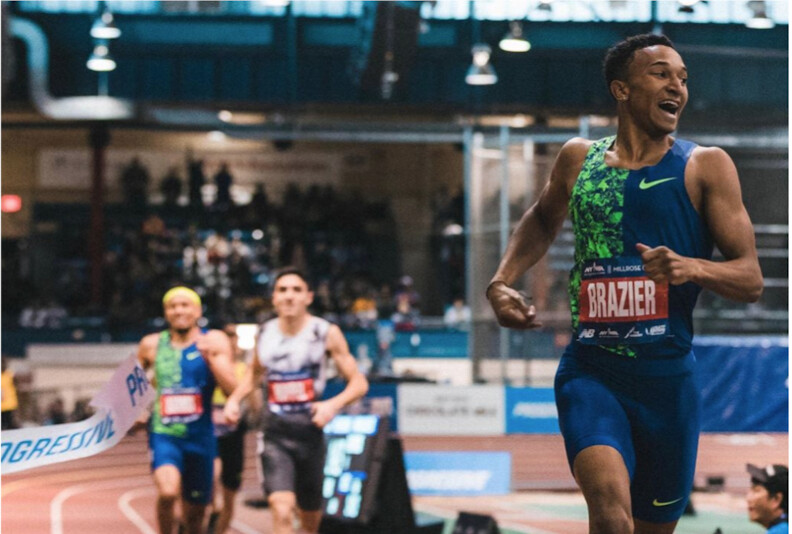
Julian is currently the coach of many of the world’s top athletes, such as Suguru Osako, Shannon Rowbury, Raevyn Rogers, Jessica Hull, Donovan Brazier and Craig Engels.
He spent three years coaching at Washington State University before moving to the Oregon Project in 2012, where he was the assistant coach to Galen Rupp, Matt Centrowitz, Mo Farah and Canadian record holder Cam Levins.
The 2021 NCAA indoor 800m champion and Australian Olympian Charlie Hunter will be the newest member of the group.
Union Athletic Club is based out of Oregon and sponsored by Nike Running.
(12/18/2021) ⚡AMPParis 2024 confirms Seine will serve as venue for city centre Olympic Opening Ceremony
Paris 2024 has announced the Seine will serve as the venue of the Olympic Games Opening Ceremony, with athletes set to travel in boats during a six-kilometre route during the spectacle.
Paris 2024 President Tony Estanguet had suggested the river was under consideration to host the city-centre Opening Ceremony back in March.
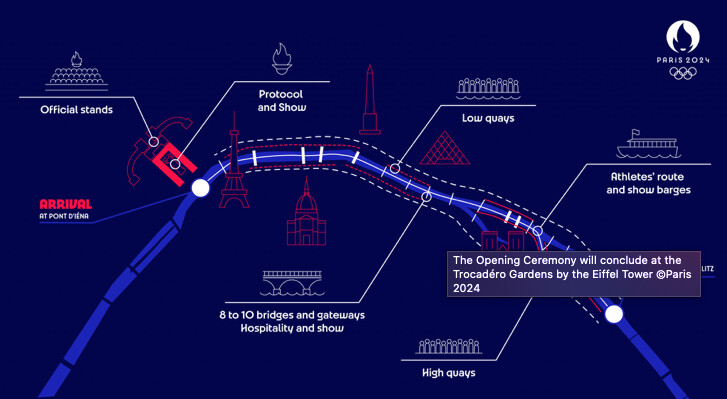
Estanguet confirmed at a press conference today that the Paris 2024 Board and the International Olympic Committee (IOC) had approved the location.
The three-time Olympian said the objective was to make the Opening Ceremony more open to everyone, with estimates predicting 10 times more spectators will be able to watch the event compared to its typical stadium setting.
Paris 2024 say thousands of spectators will be able to attend the Opening Ceremony for free, while ticketed zones will also be in operation.
Around 600,000 people are expected to be watch the Ceremony in the capital city.
Organisers say the Seine will be a “runway for athletes”, with delegations set to travel on around 170 boats down the river.
The route will begin at the Pont d'Austerlitz, the bridge located close to the French national library.
The Pont d'Iéna marks the event of the route, with the bridge located next to the Eiffel Tower.
The Trocadéro Gardens will host the finale of the Opening Ceremony, having been the location of the live site during the handover at the conclusion of the Tokyo 2020 Closing Ceremony earlier this year.
Estanguet said the six-kilometre route would allow for full immersion into Paris, with landmarks including the Notre-Dame Cathedral, the Louvre Museum and the Place de la Concorde featuring.
The Paris 2024 President said the location would allow organisers to blend the existing background of the capital with modern creations, claiming the concept provided organisers with “unlimited potential” with what they can achieve artistically.
Artistic direction of the Ceremony is expected to be defined at a later date.
Suggestions include a floating orchestra and projections, with spectators potentially watching from stands on screens located on the water.
Estanguet said Paris 2024 would look to implement ideas used during their previous Olympic Day celebrations, where sporting events have been held within the French capital.
Paris 2024 say 50 meetings have been held with security experts since the start of 2021 on the concept.
It is claimed that no security obstacles have been identified so far.
The Opening Ceremony is scheduled to take place on July 26 in 2024, with the Olympics running until August 11.
“On 26 July 2024, a truly spectacular Opening Ceremony will mean the eyes of the world are on the city, proudly promoting the values of Olympism," said Anne Hidalgo, Paris Mayor.
“The ambitious project, which is the result of intensive collaboration between hundreds of stakeholders, will bring joy to Parisians, Île-de-France residents and tourists alike.
“This Opening Ceremony will mark the history of the Games.
“For the first time ever, rather than being contained in the stadium, it will take place in the heart of the capital.
“Along the quays and bridges of the Seine, against this grand and unique backdrop, the athletes will be carried by a majestic flotilla of boats.
“The ceremony will be accessible to one and all.
“The choice to launch the Paris Games on the Seine is a bold one, which is part of a long-term strategy.
“Beginning with the opening of the embankments to pedestrians in 2016, the idea is to give Parisians and local residents back their river banks, to walk along, engage in sports, or simply admire the beautiful surroundings.
“The Paris 2024 Olympic and Paralympic Games will mark the beginning of a new chapter in this story, with swimming in the Seine itself.”
IOC President Thomas Bach has been a supporter of the idea of a city-centre Opening Ceremony.
This followed the Buenos Aires 2018 Youth Olympics, which saw an Opening Ceremony held on the Avenida 9 de Julio in the Argentinian capital.
Bach said Paris 2024 has recognised the opportunity and challenges of the city-centre spectacle, but expressed his confidence that organisers would be able to hold the event with the security precautions required.
"This Ceremony will be an exceptional experience for all the athletes taking part, but also, and above all, for the people of Paris, for France and for the whole world," Bach said.
"We started discussing this ‘Seine’ option with the Paris 2024 team and its President, Tony Estanguet, after the great success of the Opening Ceremony of the Buenos Aires 2018 Youth Olympic Games.
“There, over 200,000 people gathered around the iconic Obelisk monument.
“We were all inspired by this magical moment, but we also recognised the challenges it could create.
“Today, I am happy that the French authorities on all levels have carefully considered this opportunity and come to the conclusion this will happen, under the premise of all necessary security precautions.
“The IOC has full confidence in the creativity, flexibility and sense of innovation demonstrated, from the beginning, by the Paris 2024 team.
“They will ensure that the Opening Ceremony is a truly unique and emotional Olympic experience for the athletes, who will be surrounded by the public, being welcomed and celebrated by the French people.
“It will be a spectacular spectacle on the Seine.”
(12/18/2021) ⚡AMPA Year Ago, He Couldn’t Run for 20 Minutes—Now He’s Clocking Sub-3 Hour Marathons
When Victor M. Solano was diagnosed with high cholesterol, he knew he had to make a lifestyle change. Here’s how he did it.
At age 37, my weight had hit its highest of 188 pounds. I had started running in 2003, and it always made me feel good. But four years before I started my weight-loss journey, I wasn’t doing any physical activity. I was eating a lot more than what I used to eat, and that included a lot of added sugar.
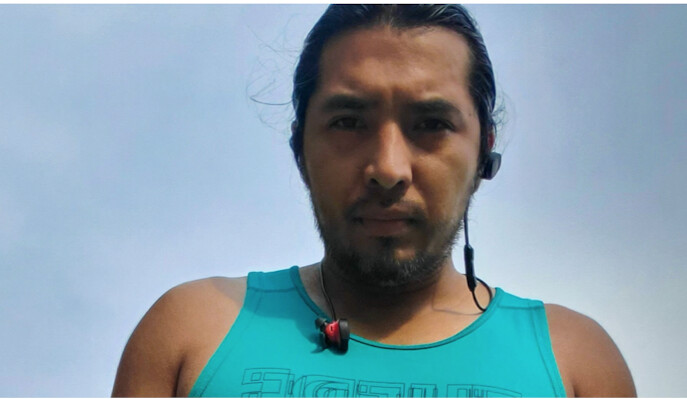
I noticed that I was having some difficulties with my breathing—at my work, they did health tests for employees, and I found out that I had high cholesterol. Besides the physical effects of my weight, I also struggled mentally—my self-esteem was really low. All of this made me want to try and get my life back again.
My “day one” was on September 14, 2020. That was the day I looked at myself in the mirror and didn’t recognize my reflection. I didn’t like the way I looked anymore. I tried running for 20 minutes, which previously had been no big deal—but this time, I wasn’t able to. Not being able to run that day really opened up my eyes to my health. So I started logging miles again, and built myself up to running four to five times a week for around an hour a day. I wasn’t using any apps or training plans until March 2021 when I started using Garmin—I started losing weight after that.
Additionally, my diet now is low in carbohydrates and added sugar—I cut out soda, refined-grain bread, and rice. Now I eat more whole grains, vegetables, and eggs. One of my favorite meals is salmon and pecans. I’ve also implemented intermittent fasting into my routine, and I’ve seen a lot of benefits.
I also decided I wanted to train for the 2021 Chicago Marathon, so I got a coach to help me with my training plan. During the summer of 2021, I decided to run a couple 5Ks, finishing in 18:20 and 18:45. I continued to train through the summer, and ran the Chicago Marathon in October with a time of 2:59:16. I qualified for the 2022 Boston Marathon, and my goal is to run it in a time of 2:55. Most recently, I ran a Dia de Los Muertos 5K, and ran a personal best of 18:12. And on Thanksgiving, I ran the Milwaukee Turkey Trot 8K, and finished in 29:50.
Victor’s Must-Have Gear
→ Salomon Pulse Belt: It’s necessary for carrying your smartphone, keys, and gels. I have even run a marathon with it.
→ GU Gels: For a long runs, these are very helpful to fuel with, so I don’t hit the wall.
→ Goodr Sunglasses: These are my favorite for those sunny days because they block out the glare.
These three tips helped make my running journey a success.
Set goals
I set goals to keep myself focused and not give up halfway. It motivates me to always keep going.
Try intermittent fasting
I normally do a 10-hour fast to help with my diet. You have to find what works best for you, but for me 10 hours has worked well and doesn’t leave me feeling hungry.
Don’t overdo it on added sugar
I used to eat so much added sugar. Now, I try to avoid sugary drinks and foods, and to keep an overall healthy diet. It has helped my body feel a lot better.
I have lost over 40 pounds in an 8-month period.
My life has changed in a lot of ways. I feel a lot better health-wise, and my running is a lot better than it was in my 20s. I am healthy again and able to run without any problems, and that makes me happy and motivates me to keep going. Now, I know that I can achieve anything I want without my health holding me back. The process of becoming healthy and able to run again wasn’t easy, but I was able to do it because I had a goal and never gave up.
(12/18/2021) ⚡AMPAll runners are faced with running in the wind from time to time, but how much does it affect your run?
Of the many extreme conditions runners face, the wind is the only weather condition that can be detrimental to your training.
Whether you’re running in a headwind or a tailwind, both can strongly influence your performance, form and energy levels. That brings into question, should you still run outside on a windy day?

A study published in the Journal of Physiology analyzed competitive middle-distance runners, running in the wind at different paces. Researchers found that oxygen consumption in the body increased at higher wind velocities while running at the same pace.
The study also found that the effects of a 15 km/h wind headwind are four times greater than that of an 8 km/h wind. The faster you run into the wind, the greater the resistance. There are ways to combat the wind by drafting off other runners, the study states a runner has 80 per cent decrease in oxygen consumption when tailing another runner.
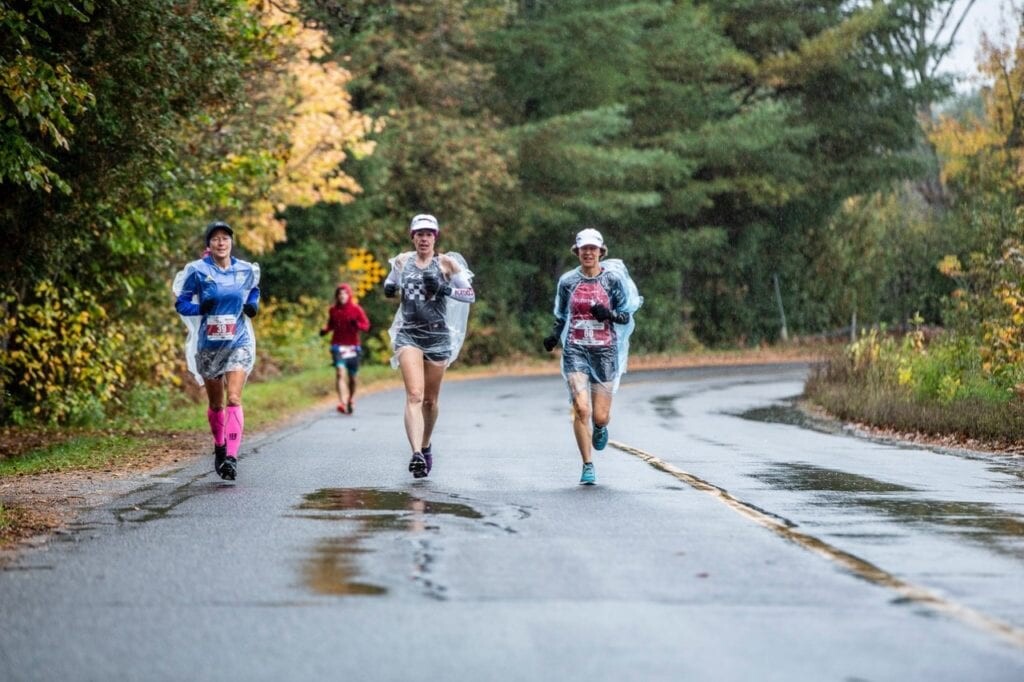
How much benefit do you get from a tailwind? It does aid performance, but runners only get half the power that they face during a headwind. A tailwind eliminates air resistance.
For example, if you are running at a six-minute mile pace with a 16 km/h tailwind, the wind would only help you by around six seconds per mile. If you were to run the same pace into a 16 km/h headwind, it would slow you down by 12 seconds.
A headwind causes you to lose more time than a tailwind allows you to gain, and a tailwind will only benefit you if you are running in one direction.
This data is useful for runners and coaches looking to adjust workout splits on windy days. If it’s very windy, you might want to push your workout to another day or run with others to draft and take advantage of any tailwind.
(12/17/2021) ⚡AMPby Marley Dickinson
World Athletics has released its 2022 Label Road Race calendar
World Athletics has today released its 2022 Label Road Race calendar, a schedule comprising almost 200 races in more than 40 countries across each of the sport's six areas.
The calendar kicks off with the 10K Valencia in the Spanish city on 9 January and concludes almost 12 months later on 31 December with the traditional New Year’s Eve races in Madrid, Spain, and Bolzano, Italy.
While the schedule remains subject to change given the ongoing uncertainty created by the global coronavirus pandemic, more races are expected to join the Label programme once it is confirmed that they will take place.
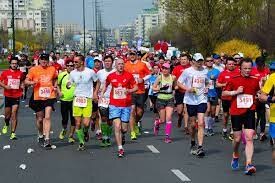
The three-tier programme, introduced in 2020, comprises three Labels: a World Athletics Label, a World Athletics Elite Label and a World Athletics Elite Platinum Label.
“Despite the continued uncertainty around global travel and on mass gatherings in some parts of the world, the number of events that have chosen to be part of the World Athletics Label Road Races programme in 2022 exceeds 200 – another all-time high – but some of the events need additional confirmation given the global pandemic,” said World Athletics Road Running Manager Alessio Punzi. “This speaks volumes of the vitality of the running industry and of the optimism of operators worldwide.
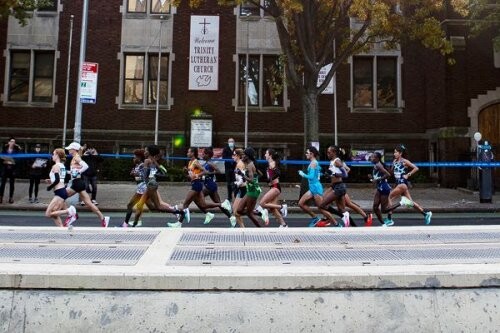
“Over the last two years alone, millions of people around the world have taken up running as a way to manage their physical and mental health – many of them will pin a race bib to their vest for the first time in 2022. We are grateful to all the race directors and their teams for their determination and tenacity. Staging marathons has never been easy, but in this day and age its complexities are mind-boggling. Now, more than ever, every race's starting line is a testament to its organisers' resilience and sheer passion for the sport and the community they serve.”
The World Athletics Label is available to all officially sanctioned road races that have taken place for at least two consecutive years prior to 2022 with an international measurement certificate in place. For first-time Labels in 2022, a World Athletics technical consultant will be appointed to ensure compliance with rules and regulations.
World Athletics Elite Label races must have a prize money structure in place that awards at least the top eight finishers, with minimum winner's prizes of US$ 15,000 (marathons) and $7500 (other distances), per gender.
The World Athletics Elite Platinum Label is only available to races that had been granted Platinum status in 2021, irrespective of whether the race took place or not.
Through choosing to have a World Athletics Label, race organizers also show a tangible commitment to clean sport by funding a dedicated road racing out-of-competition testing programme, managed by the Athletics Integrity Unit.
New Normal the key theme at 2022 Global Running Conference
The role of running events in a changed world will be the main focus at the World Athletics Global Running Conference in Bangkok on 24-25 February 2022.
All Label road race organizers are encouraged to attend, either in person or virtually, to hear insights from fellow race organizers. A series of technical workshops, including one on road race course measurement, will also be staged in cooperation with the Athletics Association of Thailand and the Asian Athletics Association, to train international and national race officials, further contributing to the development of the sport.22 Lab
(12/17/2021) ⚡AMPby World Athletics
Paris 2024 amend routes for Olympic marathon
Paris 2024’s Board has approved amended routes for the marathon and cycling events at the Olympic Games.
Paris 2024 said the adjustments will allow for better-shared use of the existing sites, as well as providing an exceptional backdrop for competitions.

The marathon will start at the Hôtel de Ville, which has been the headquarters of the municipality of Paris since 1357.
The city hall was reconstructed back in 1892.
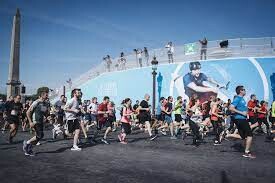
The Hôtel de Ville launched Paris 2024’s Olympic and Paralympic flag tour earlier this year and featured as part of Olympic Day celebrations.
The marathon will conclude at Les Invalides, the famous complex featuring museums and monuments.
Les Invalides is already serving as the archery venue for the Games.
Paris 2024 also confirmed the road cycling time trial will begin from Les Invalides and will conclude at Pont Alexandre III.
The bridge connects the Champs-Élysées and the Eiffel Tower.
Pont Alexandre III is also a location featured on the marathon swimming and triathlon routes.
Les Invalides, Pont Alexandre III and the forecourt of the Hôtel de Ville have been included on the route for the cycling road races.
The Pont d’Iéna and Trocadéro will also feature.
Pont d’Iéna, at the foot of the Eiffel Tower, will serve as the start and finish for the cycling road race and race walks.
The Paris 2024 Board has also changed the goalball location for the Paralympic Games.
Goalball competition had initially been scheduled to take place at the Pierre de Coubertin Stadium.
The venue will now move to Arena Paris Sud hall six at the Porte de Versailles.
Boccia and Para table tennis are also due to be held at the Porte de Versailles.
(12/17/2021) ⚡AMPby Michael Pavitt
Can undiagnosed celiac disease put you at risk for bone stress injuries?
Bone stress injuries are common among runners, particularly females. There are many possible reasons they might occur, but recent research has determined that undiagnosed celiac disease could put affected runners at a higher risk for these types of injuries. While the portion of the population with celiac disease remains very small, it may be an important consideration for some runners when evaluating their injury risk.
Prevalence of celiac disease

The study, which was published in the Clinical Journal of Sport Medicine, tested 85 runners for celiac disease using Anti-tissue transglutaminase antibody (TTG) testing. Two participants already had pre-existing celiac disease and three more were confirmed to have celiac disease following an endoscopic biopsy.
In total, approximately five per cent of the group were confirmed to have celiac disease, which is five per cent higher than Canadian population estimates, according to the Canadian Digestive Health Foundation. It’s worth noting, however, that experts believe about 90 per cent of cases go undiagnosed.

There was one thing every runner in this study had in common: they all had a bone stress injury. When left untreated, celiac disease can damage the small intestine, which leads to poor absorption of vitamins and minerals that are important for bone health, like calcium and vitamin D. This, ultimately, could put someone at an increased risk for injuries like stress fractures.
Of course, it’s difficult to definitively say that the patients with celiac disease were at greater risk because of their condition, but considering that this population had a five times greater prevalence of celiac disease than the general population, it is possible that there could be a correlation. This lead the researchers to conclude that “anti-tissue transglutaminase antibody screening for CD should be considered in all patients presenting with BSIs (bone stress injuries).”
What should runners do?
If you’re generally healthy and aren’t presenting with any of the symptoms of celiac disease (like diarrhea, fatigue, weight loss, bloating and anemia), it’s unlikely you have the condition. If you do frequently struggle with one or more of those symptoms, it’s worth looking into, not only to help prevent stress fractures, but several other health problems as well.
(12/17/2021) ⚡AMPby Brittany Hambleton
Could Potatoes be an alternative to energy Gels? Research has found potatoes have the same energy-boosting benefits as carbohydrate gels
Not a fan of energy carbohydrate gels? Struggle to stomach sweet sickly energy gels and tired of spending your hard-earned cash on them? Then, believe it or not, potatoes could be the answer! Scientists from the University of Illinois have found consuming potato puree during prolonged exercise works just as well as gels in sustaining blood glucose levels and boosting performance.
This means potato, in a puree form, could be a great savory alternative to sweet, sickly energy gels.
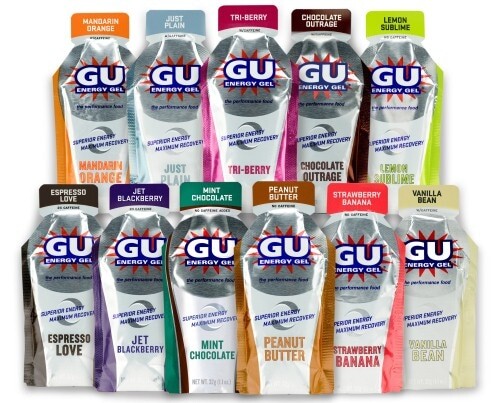
“Research has shown that ingesting concentrated carbohydrate gels during prolonged exercise promotes carbohydrate availability during exercise and improves exercise performance,” said Nicholas Burd, who led the research.
“Our study aim was to expand and diversify race-fuelling options for athletes and offset flavour fatigue.”

Potatoes are a promising alternative for athletes because they represent a cost-effective, nutrient-dense and whole-food source of carbohydrates,” the researchers reported in the Journal of Applied Physiology. “Furthermore, they serve as a savoury race fuel option when compared (with) the high sweetness of (carbohydrate) gels.”
The study monitored 12 active people who cycled an average of 165 miles a week, who either consumed just water, a commercially available carbohydrate gel or an equivalent amount of carbohydrates obtained from potatoes.
(12/16/2021) ⚡AMPby Colorado Runner
How to deal with a chronic running injury: When an injury doesn't resolve quickly, it's time to adjust your mindset around recovery
Not all running injuries are created equal, and some take what feels like forever to heal. Other injuries seem to return over and over again, no matter what you do to get rid of them. Dealing with a chronic running injury can be exhausting and frustrating, so follow this advice to help you get through the worst of it.
Change your perspective
Your mindset can have a surprising impact on your body’s ability to recover quickly. It’s OK to be sad, frustrated or angry, and it’s even fine if you need to sit down and have a good cry once in a while, but dwelling too long on those feelings will only hold you back.

One way to help keep your mindset trending toward the positive is to change your perspective from “I’m not running” to “I’m healing.” It sounds small, but it shifts your focus from something negative to something positive and productive.
This simple change will help you stick to your rehab plan, cross-training regime and whatever else you’re doing to kick this injury to the curb so you can get back to doing what you love sooner.

Shop around
For practitioners, that is. No single physiotherapist, chiropractor or osteopath is going to have all the answers, and just because one practitioner did a great job helping you with the knee pain you struggled with a couple of years ago doesn’t mean that same person will know exactly how to help you now. Don’t feel bad ditching your usual therapist for someone else if what they’re doing isn’t working for you, and don’t be afraid to keep switching until someone is able to help.
Eat well
A healthy diet can go a long way in helping your body to heal, so make sure you’re getting a wide variety of vitamins and minerals in your diet to support your progress. You also need to ensure that you’re eating enough food to fuel your recovery. Some runners have a tendency to cut back on calories when they’re not running, but this can actually make it harder for your body to repair itself, so eat well, and eat enough to support the healing process.
Do what you can do
You may not be able to run right now, but take this time to dive into whatever activity you can do. Have you been cleared to swim? Pool run? Bike? Walk? Whatever it is, commit yourself to it, and try not to compare it to running. It’s true that very few activities can actually replace running, and if all you do is think about how you’d rather be out on a run, you won’t enjoy the activity for what it is.
Focus on your other hobbies
Hopefully, you have other activities that you enjoy aside from running, and now’s the time to focus on them, rather than focusing on the one activity you can’t do. Do you enjoy painting? Playing an instrument? Reading? Spend a little extra time doing those activities to keep your mind off running, and if you don’t have a lot of other hobbies, now’s the perfect time to try something new.
Track your activities
If you’re someone who enjoys recording their runs on Strava or some other activity-tracking app, use these tools to track your cross-training activities, too. Getting regular updates on your progress will keep you motivated to do your daily stretching and rehab exercises, and give you daily goals to strive for, which can help fill the void left by running.
Know your limits
If standing on the sidelines of a race to cheer on your running buddies makes you happy and helps you feel connected to your running community, then by all means, do it. But if seeing others out running when you can’t makes you feel worse, then don’t feel bad declining the invitation to be a part of the cheer squad. If you need to, temporarily hide the “running inspo” accounts you usually follow on Instagram and avoid things that make you feel sad. You can always come back to them later.
(12/16/2021) ⚡AMPby Brittany Hambleton
2022 Arizona Rock ‘n’ Roll Marathon set to return to metro Phoenix in January
Get those running shoes ready as the Arizona Rock ‘n’ Roll Marathon returns to metro Phoenix next month.
One of the Valley’s signature events to kick off the new year, the Arizona Rock ‘n’ Roll Marathon will take place Jan. 15-16.
Distances available include the full marathon, half marathon, 10K and 5K.
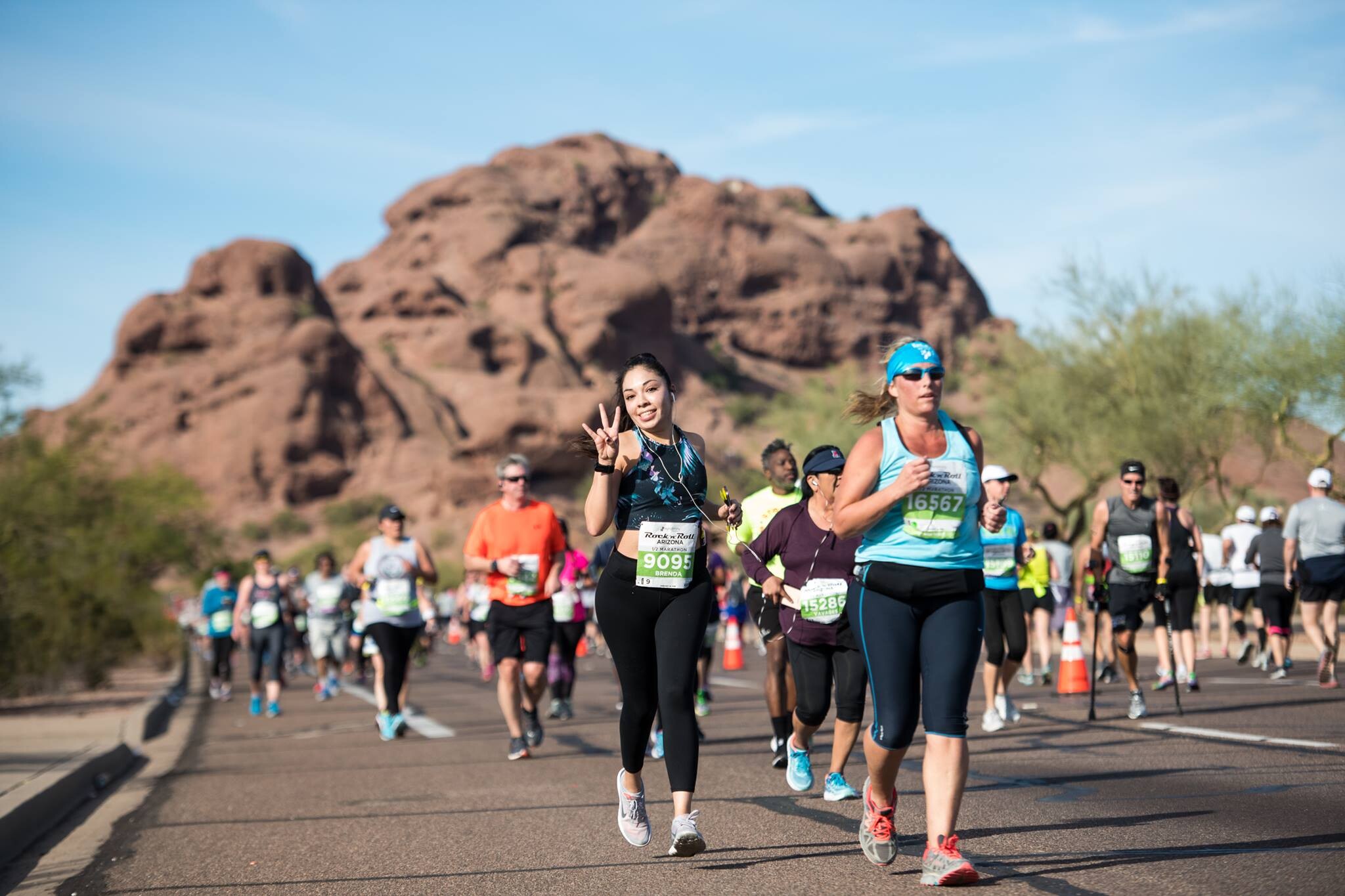
“Our Rock ‘n’ Roll Arizona ambassador team has been attending group runs and events, and we have seen the excitement our community has for the return of Rock ‘n’ Roll to the Valley,” Rock ‘n’ Roll Arizona Ambassador Jeremy Heath said in a press release.
“Runners are ready to experience everything Rock ‘n’ Roll has to offer once again, and they’re itching to get to the start line.”
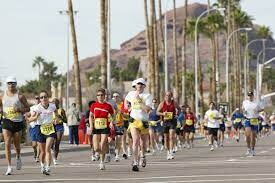
A winter sale takes place Wednesday and will last for only one day, offering discount registration prices. Regular registration prices for the event run from $49 for the 5K and up to $129 for the full marathon.
Runners enjoy scenic views of the greater metro Phoenix area, including the red rocks of Papago, along with music and entertainment.
The marathon in the past has drawn more than 25,000 runners to the area and tens of thousands of spectators.
The 2021 Arizona Rock ‘n’ Roll marathon was canceled due to the COVID-19 pandemic.
Phoenix serves as the kickoff to the Rock ‘n’ Roll Running Series, the world’s largest running series, with races also taking place in cities around the country and world including Las Vegas, Washington D.C., New Orleans, Nashville, Estado de México and Madrid.
(12/16/2021) ⚡AMPRock N Roll Arizona Marathon
The Marathon and Half-Marathon courses or the new Mini- Marathon or Bike Tour courses take you through the three host cities of Phoenix, Scottsdale and Tempe! The Marathon and Bike Tour start at CityScape in downtown Phoenix, while the Half-Marathon and Mini-Marathon are loop courses launching from downtown Tempe. All the courses end in Tempe at ASU’s Sun Devil and...
more...Quad-City Times Bix7 to Hold In-Person and Virtual Races in 2022
The Quad-City Times Bix 7 is excited to announce that registration for the 2022 race was open on Wednesday, December 15, 2021 @ 7:30 am CST. The 48th running of the Bix 7 will take place on Saturday, July 30, 2022 @ 8:00 am.
In addition to the 7-mile event, the Prairie Farms Quick Bix, Arconic Jr. Bix and Genesis Sports Medicine Brady Street Sprints will be held as usual Bix weekend, July 28-30, 2022.
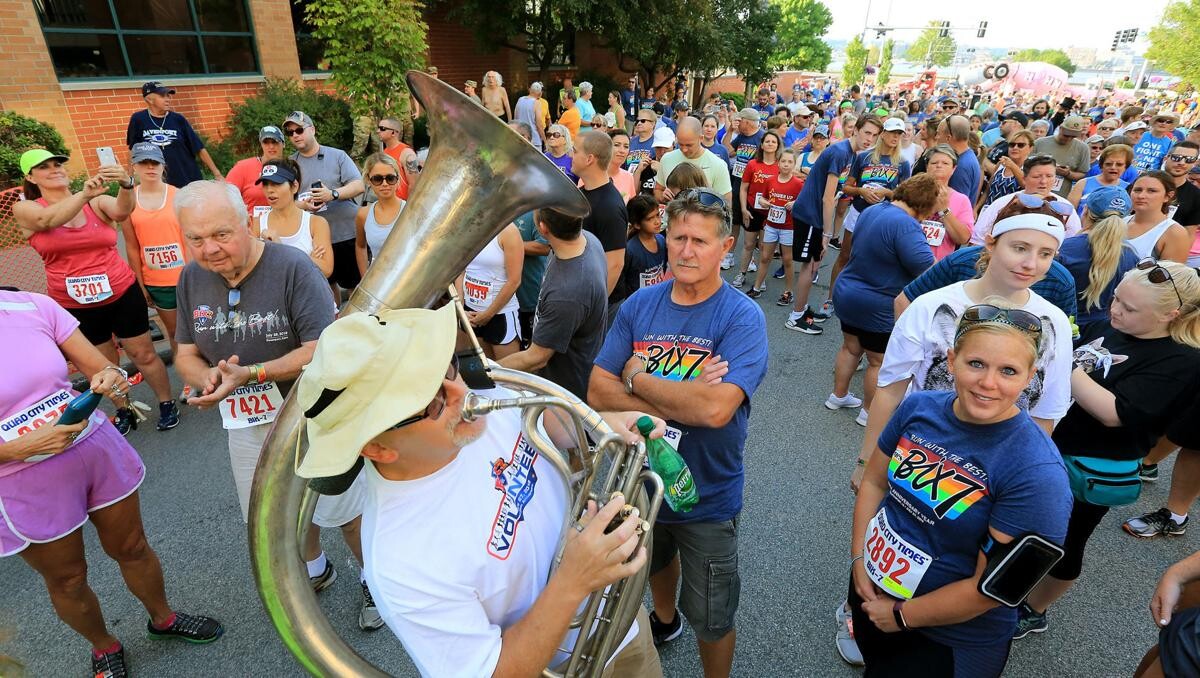
The virtual race options for Bix & Jr Bix will run July 23-30, 2022, as well as the ability to ‘switch’ Race categories between in-person and virtual events.
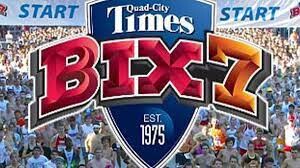
Register online at www.bix7.com.
This magnificent community event owes its continuing success to the Platinum, Gold Medal and Contributing sponsors, to the many dozens of other supporting businesses and organizations and to the thousands of individual volunteers.
The Quad-City Times, Cornbelt Running Club and the entire Quad City community deeply appreciates this dedication and generosity.
(12/16/2021) ⚡AMPby Running USA
Bix 7 miler
This race attracts the greatest long distance runners in the world competing to win thousands of dollars in prize money. It is said to be the highest purse of any non-marathon race. Tremendous spectator support, entertainment and post party. Come and try to conquer this challenging course along with over 15,000 other participants, as you "Run With The Best." In...
more...Agnes Tirop's husband to stay in jail longer
Ibrahim Rotich, the husband and chief suspect in the murder of his wife and athlete Agnes Tirop, will remain in custody for more than three months pending his bail application hearing.
The Eldoret Court Wednesday adjourned the case to March 9, 2022 due to the absence of presiding judge, Justice Reuben Nyakundi, who was is away on official duties. The hearing date was issued by Deputy Registrar Diana Milimo.
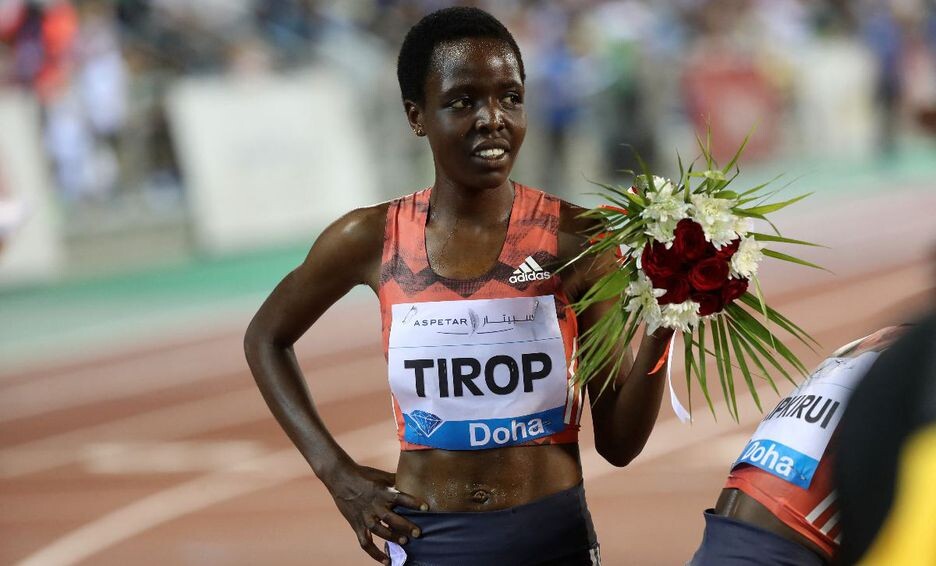
The court will also issue a hearing date for the main case on the same date. On December 3, the same court had directed the probation team to work on the pre-bail report to help in ruling whether murder Rotich could be released on bond.
During a previous bond application, Probation officer David Barasa had requested the court to allow him to compile the report for two weeks.
During the plea taking on November 16, the prosecution, through state counsel Anthony Fedha, had already filed an affidavit opposing his release on bond.
The state counsel argued that the accused might influence, frighten or interfere with witnesses if released on bond.
The prosecution has lined up more than 10 witnesses including Rotich’s brothers and cousins.
Tirop's last international race was the Tokyo Olympics, where she featured in the 5,000m finishing fourth. She was found dead in her house on October 13.
Mr Rotich, who was the last person to be seen with the deceased, was arrested at Changamwe in Mombasa County on October 15 after being trailed for two days.
Detectives suspected that he was fleeing to a neighboring country.
At the same time, the court has issued an interim order to the family of the late Tirop to have custody of all her property until the matter is heard and determined.
The court appointed Tirop’s father, Vincent Tirop as temporary administrator of her property.
(12/15/2021) ⚡AMPby Titus Ominde
Sebastian Coe optimistic of great year ahead despite Covid-19 threats
World Athletics (WA) President Seb Coe is confident the global athletics governing body is well equipped and informed to continue organising top level competitions while tackling the challenges posed by Covid-19.
Eugene, in Oregon State, will host the 2022 World Championships at the brand new Hayward Field Stadium in the heart of the University of Oregon from July 15 to 28.
“It’s absolutely vital that whenever we have a World Championships, we do everything we possibly can to have our seats absolutely full,” Lord Coe said.

“And that’s not just the work of the LOC (Local Organising Committee). That’s also the work we need to do at World Athletics to make sure that we have all the right initiatives in place to help sell tickets.”
He acknowledged the fact that with more insights on Covid-19 and with sports having developed protocols to guard against the spread of the coronavirus at competitions, it will be easier to navigate through the virus.

But he conceded that with the unpredictable nature of the virus, nothing could be cast in stone on the programme.
“We know a great deal more about the management of Covid-19, both medically and within our own stadiums.
“Our health and science teams have probably led the world in making sure that we stage events that are safe and secure to protect the athletes and crucially to protect those communities that are hosting our events.
“But the world is an uncertain place at the moment. We will have all the protocols and processes in place, but we can’t at this moment guarantee our borders remaining open if the pandemic suddenly takes a turn for the worse.
“We don’t have enough data to know if this variant (omicron) is more transmittable but not causing more illness… all that, I’m afraid, we have to wait for scientists and governments to decide on the direction forward.
“But we will do everything we possibly can to ensure that the stadium in Oregon is full and that people are able to travel, but we can’t obviously open borders that are closed by governments. That remains a challenge to us.”
The WA President said next year - and the next four seasons - will be crucial to the sport, and is excited that USA has finally come round to organising a global competition as they hold a special place as the world’s biggest sports market.
The last major global athletics events hosted by USA were the 2014 World Junior (under-20) Championships in Eugene and 1992 World Cross Country Championships in Boston along with the 2016 World Indoor Championships in Portland.
“We have four major athletics events and also the European Championships (next year).
“We have a global championship every year for the next four years and that will mean working very closely with all our organizing committees.
“The United States is very important for us, to help grow the sport. It’s the largest sports market in the world, and it’s also an opportunity for your athletes to have more competitive outlets and to grow their profile in a very important market."
“But the world is an uncertain place at the moment. We will have all the protocols and processes in place, but we can’t at this moment guarantee our borders remaining open if the pandemic suddenly takes a turn for the worse.
“We don’t have enough data to know if this variant (omicron) is more transmittable but not causing more illness… all that, I’m afraid, we have to wait for scientists and governments to decide on the direction forward.
“But we will do everything we possibly can to ensure that the stadium in Oregon is full and that people are able to travel, but we can’t obviously open borders that are closed by governments. That remains a challenge to us.”
The WA President said next year - and the next four seasons - will be crucial to the sport, and is excited that USA has finally come round to organising a global competition as they hold a special place as the world’s biggest sports market.
The last major global athletics events hosted by USA were the 2014 World Junior (under-20) Championships in Eugene and 1992 World Cross Country Championships in Boston along with the 2016 World Indoor Championships in Portland.
“We have four major athletics events and also the European Championships (next year).
“We have a global championship every year for the next four years and that will mean working very closely with all our organizing committees.
“The United States is very important for us, to help grow the sport. It’s the largest sports market in the world, and it’s also an opportunity for your athletes to have more competitive outlets and to grow their profile in a very important market."
“We also have Cali (Colombia) Under-20 World Championships, hot on the heels of Oregon 2022, and the following year we are back to the World Under-20 Championships in Lima, Peru."
“This is a great opportunity to make gains not just in US, but in South America too.”
Coe also highlighted the successes of athletics in 2021 saying the sport remains in really good shape, highlighted by both athletes’ performances and commercial success at the Tokyo Olympic Games.
“We leave 2021 as a sport in really good shape. We needed to stay focused in order to deliver the championships that we did, and create a platform for the athletes, which we did, and the Tokyo Olympic Games particularly for African athletes was a really important platform… and, my goodness!, they grabbed that platform in a really, really good way!”
“We also maintained, at the same time, all our competitions, and we maintained the work streams that we feel are really important in growing our sport.”
The former Olympic champion and middle distance world record holder noted that WA also revamped their competition calendar and drove further interest in the second tier Continental Tour one-day meeting series.
“I’m very grateful to the Kenyan federation particularly for their help in extending that footprint in Africa for us,” he noted, appreciating the success of the September 18 Kip Keino Classic at Kasarani which was the final stop of the 2021 WA Continental Tour circuit.
“Our strategic partnerships – and these were really important: In broadcast, we extended broadcast arrangements with NBC and, crucially for Africa, with the European Broadcast Union, not just with our broadcast arrangements with Europe, but also extends into Africa and that’s very, very important.
“Both contracts have been secured until 2029 with a healthy uplift.”
Coe mentioned the importance of the World Athletics World Plan, describing it as an important roadmap which will create the pathway for the next years.
“It sets up 19 objectives and 67 different actions. It builds on the four-year strategic plan, whose four pillars are: More people; More participation; More partnership; Broadening fan base.
"The top lines from that will help us, particularly given the global focus driven by Covid-19 around healthy communities is driving kids’ athletics, not only as a way of encouraging more young people into our sport, but also as a way of helping in that drive to make our communities fitter and healthier – as athletics is the most accessible to communities globally.”
(12/15/2021) ⚡AMPby Elias Makori
Good times at the 4th KATA 10k Time Trial Series in Thika kenya
The Kenyan Athletics Training Academy (KATA) is concluding the year strongly after athletes posted impressive times during the 4th edition of KATA monthly 10 Kilometres Time-Trial on Wednesday morning in Thika Kenya.
The time-trial, held on a new course West of the Academy, saw Solomon Gachoka, the winner of the 2nd edition in October, clocked 29:44.23, bettering his previous time of 31:22.10 during the event that attracted 23 participants.

Solomon dislodged Elisha Tarbei, the November winner while new entrants, Evans Kibet, finished 3rd. Tarbei timed 30:05.91, chopping off 1minute and 28 seconds from his previous 31:34.45. Kibet was timed at 31:02.35.
In women, Lucy Mwende Mawia regained her footing ruling in the category just a week after returning to Kenya from Europe where she dominated her races.
She clocked 34:58.24 ahead of Catherine Njihia and Monica Njeri who finished second and third timing 36:38.86 and 44:05.20.

Both the winning times for men and women are KATA 10k Time Trial best performances for the monthly series.
Kenyan Athletics Training Academy Competition Director Joseph Ngure has hailed the results and predicted better times in future from all the Athletes.
“This is our 4th edition since the Academy was opened officially on 4th of September. All our athletes have been posting impressive times and we are expecting more next year,” summed up the Director, also a senior Middle and Long Distant coach.
Three of our elite athletes- Joel Maina, Peter Mwaniki and Lucy Mawia, fresh from winning several races in Europe, also participated in the monthly time trial.
"Our 5th edition will take place on Wednesday January 19th and will act as a warm-up for those who would be competing for the Regions on 22nd," says KATA head coach Julius.
KATA manager Florence days,"Some people want it to happen,others wish it happens,and others makes it happen. Our Kenyan athletic training academy time trial is one of a kind, where you can make it happen."
For more info of our monthly time trial please get in touch with academy manager florence at 0729074388 or 0104074388 in Thika Kenya.
December 15th KATA 10k Time Trisl Results:
1. Solomon Gachoka 29:44.23 (31)
2. Elisha Tarbei 30:05.91 (32)
3. Evans Kibet 31:02.35 (31)
4. Zakaria Kirika 31:27.60 (20)
5. Peter Kimwetich 31:34.92 (32)
6. Erick Cheruiyot 31:39.29 (26)
7. Peter Mwaniki 32:00.25 (23)
8. Alex Ekesa 32:17.41 (39)
9. Eston Mugo 32:32.26 (28)
10. Fredrick Kiprotich 32:44.45 (22)
11. Paul Ng’ang’a 33:47.05 (43)
12. Collins Kibet 34:56.08 (22)
13: Lucy Mwende 34:58.24 23) F
14: Joel Maina 35:44.45 (36)
15. Alfred Kamande 35:44.47 (23)
16: Charles Ndirang’u 36:25.84 (57)
17: Catherine Njehia 36:38.86 (22) F
18. Martin Ndung’u 38:18.50 (31)
19. Levis Kuria 41:06.06 (20)
20. Lamech Cheleket 44:05.19 (23)
21. Monica Njeri 44:05.20 (23) F
(12/15/2021) ⚡AMPby Joseph Ngure
KATA Time Trial Series
The Kenyan Athletics Training Academy (KATA) in Thika Kenya stages a monthly time trial. Starting Sept 2021 this monthly event is open to anyone who would like to get an official time on a acurant course. Results will be published at My Best Runs so race directors and other interested people can see what kind of shape our participants are...
more...How long does it take to get out of running shape?
Sometimes it’s hard to take a break from running, knowing that you’ll lose all your hard-earned fitness day by day. But how quickly does your fitness disappear?
Most runners worry that if they break, all of their training will go to waste, but a 2008 study in the Journal of Physiology suggests that what changes is the body’s ability to consume and process oxygen.
“The maximum oxygen (VO2 max) he or she can uptake and utilize, can plunge in only one month of inactivity,” according to Dr. Edward Coyle, director of the Human Performance at the University of Texas.

Coyle did his research on seven endurance athletes who all had many years of running experience. He set them all up on standard training plans, then measured how each athlete’s fitness declined after 12, 21, 56, and 84 days off (for a total of 12 weeks).
Here is a timeline of running inactivity:
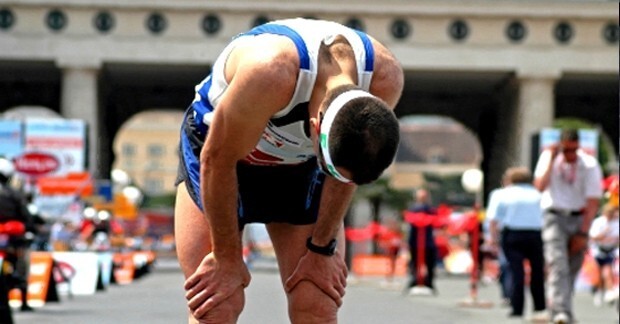
Two weeks
The two-week break in running shows signs of training regression, enzyme levels in your blood that are associated with endurance performance decline by 50 per cent and VO2 max drops by seven per cent.
One month
The good news is, the damage is already done: most of the initial declines occur in the first two to three weeks. After a month, there are measurable declines in fitness and enzyme levels associated with performance, but these declines level off after three weeks of inactivity.
Three months
For runners who have trained for a few months, your VO2 max would now completely reverse. To put it in perspective, it’s like starting from ground zero. All endurance training is gone at this point, but speed can still be present.
Since most elite athletes have a base, their fitness won’t decline to the same levels as less-trained individuals or people who have never run, even after three months of inactivity.
One to three years
Your endurance levels have been lost at this point, muscle mass and strength also begin to disappear. Highly trained runners won’t completely lose their speed, as fast-twitch muscles fibres aren’t lost due to inactivity. You will have to rely on speedwork and sprint training to regain muscle strength.
In short, runners often notice that endurance goes first after two weeks, but it can be possible to hang on to some speed for a few years. Since endurance athletes do not regress to the levels displayed by those who have never trained, it is easier for them to gain fitness when coming off a break.
(12/15/2021) ⚡AMPby Marley Dickinson
Does footwear matter when running on a treadmill?
When running outdoors, some runners prefer to have higher cushioned shoes to embrace the impact of the pavement on their body, but when running on the treadmill, what type of shoes should you wear?
Although there is no clear-cut shoe that is best for treadmill running, you will want something comfortable, lightweight and breathable. Since the surface of the treadmill is cushioned, you should not combine it with high cushioned running shoes, they can allow you to strike harder on the surface, which can ultimately lead to lots of wear and tear on your body.
If you thought about running on the treadmill barefoot or in socks, don’t. It is an accident waiting to happen. Running barefoot may lead to burning on the soles of your feet from the friction of the belt. You are also in danger of stubbing your toes against the front of the machine.
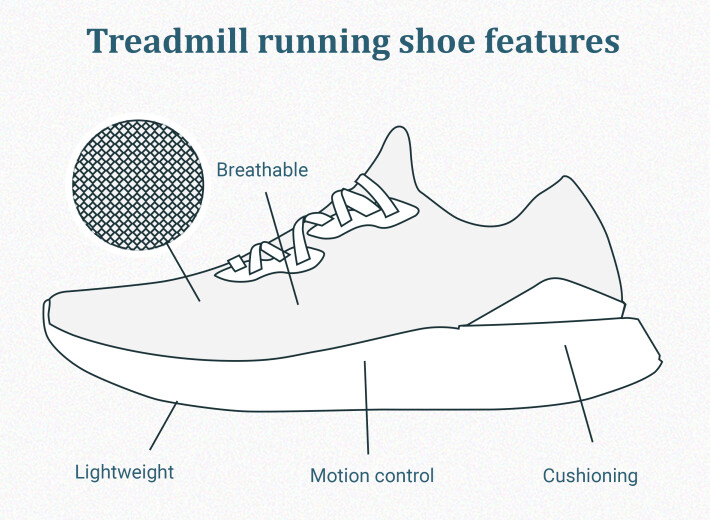
The sweat from your feet will generate moisture on the belt, which could you make you prone to slip and become an internet GIF.
There haven’t been any studies on running efficiency when wearing carbon-plated shoes on the treadmill. But most carbon plated models aren’t built for treadmill mileage and lack the support for long training runs.
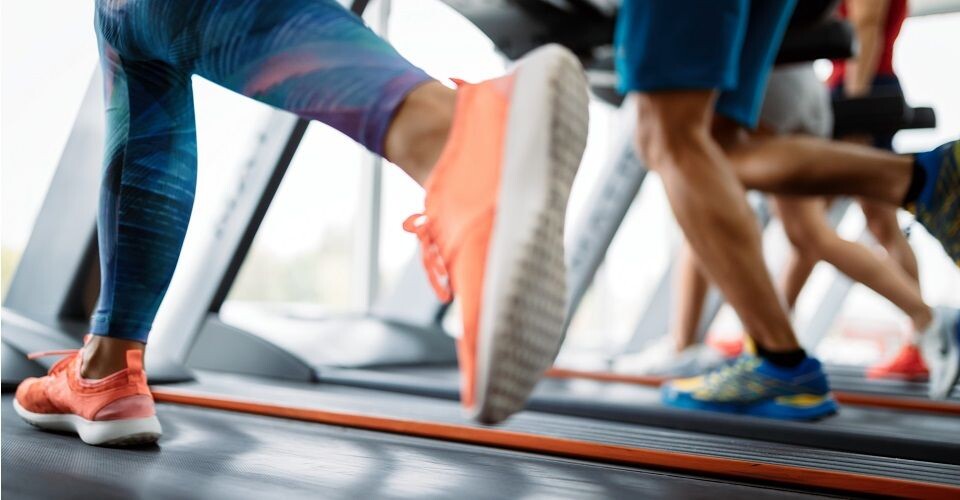
Here are a few tips for finding the right treadmill shoe:
The shoes should be lightweight. This makes it easier to maintain a high cadence, especially when doing treadmill intervals.
The most important factor when buying any type of running shoe is comfort.
Make sure the shoes are breathable. You may begin to experience issues such as cramping or burning soles if the upper is too bulky and tight. Good treadmill running shoes should bend and breathe around the ball of your foot area.
(12/15/2021) ⚡AMPby Marley Dickinson
Your brain benefits from just a 10-minute run, a new study says a short run can elicit a positive mood, increase brain function and enhance arousal levels
New research out of the University of Tsukuba in Japan has found that only running for two kilometers still has great health benefits. It seems a 10-minute run will not only make you feel better but can potentially improve your brain health.
During the study, researchers asked participants to go for a short run of 10 minutes on a treadmill at an easy pace, roughly 50 per cent of their maximum effort. After the run, researchers then had the participants take a Stroop Effect Test (SET), which is used to measure reaction times in your brain.

Results showed there was a spike in endocannabinoids inside your brain, which resulted in an increase in pleasure and arousal. Runners are also found to have an increase in blood flow in brain functions and controlling your mood. This information is valuable to beginners and experienced runners since the activity, itself, is an easily accessible form of exercise requiring minimal gear and time.

The researchers compared running with previous studies done on cycling, “Exercise is medicine, and all activities have different effects. It’s similar to how different drugs have different effects on the body. Different types of exercise such as running and cycling are observed to have different effects on the body, mental health and brain activation.”
It is important to note that you won’t see results in just one 10-minute run. It is also proven that it takes more than a 10-minute run to build fitness and progress in the sport. But, next time you are contemplating getting out for a run, you should keep in mind that all you need is 10 minutes, minimum.
(12/14/2021) ⚡AMPby Marley Dickinson
Kenya’s Philemon Kiplimo and Ethiopia’s Gotytom Gebreslase win Bahrain Half Marathon
Ethiopia’s Gotytom Gebreslase and Kenya’s Philemon Kiplimo claimed victory at the Bahrain Royal International Night Half Marathon – a World Athletics Label road race – when the event returned for its second edition on Sunday (12).
After running 2:20:09 to triumph when making her marathon debut in Berlin in September, Gebreslase achieved another impressive result as she improved her half marathon PB to 1:05:36 in Manama to win by 11 seconds ahead of home favorite Kalkidan Gezahegne – the Olympic 10,000m silver medalist who was making her half marathon debut after breaking the world 10km record with 29:38 in Geneva in October.
The men’s race was much closer, with Kiplimo outsprinting his compatriot Collins Koros to the tape – both athletes recording a time of 1:00:01.
The women’s race had got off to a blistering start, with Gebreslase and Gezahegne both part of a group which passed the 5km mark in 14:53, well inside world record pace. The race also featured Kenya’s former world record-holder Ruth Chepngetich, who had run 1:04:02 in Istanbul in April and won October’s Chicago Marathon in 2:22:31, but she ran to around 17km in Manama and did not finish.
Following the fast start, Gebreslase and Gezahegne maintained their pace through 10km, with the clock showing 29:49 – four seconds off the split recorded by Ethiopia’s Letesenbet Gidey en route to the 1:02:52 women’s half marathon record she set in Valencia in October.
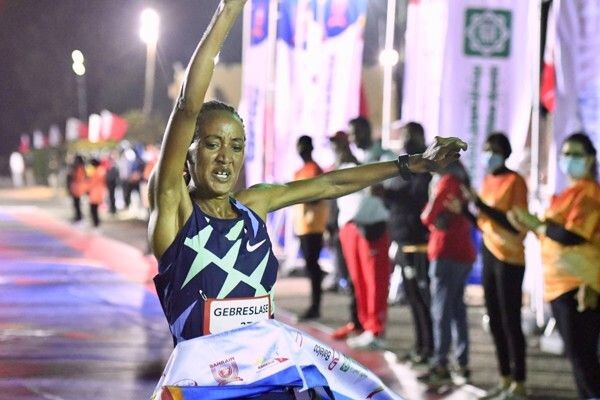
The wind had been behind them during the first half of the race and as they looped back the pace dropped, with Gebreslase passing 15km in 45:47 and Gezahegne following five seconds behind her. Chepngetich’s race came to an end a couple of kilometers later.
Gebreslase had increased her lead to 11 seconds by the finish, with the top two clear ahead of the rest of the field. Sheila Kiprotich secured third place in 1:07:01 and was followed by her Kenyan compatriots Irene Cheptai, who was four seconds back, and Daisy Cherotich, who ran 1:07:11, with a total of 11 athletes finishing inside 68 minutes.
Kiplimo led a Kenyan top five in the men’s race and had formed part of a lead group which followed the pacemakers through 5km in 13:58 and 10km in 27:35.
A seven-strong pack passed 15km in 42:24 and things remained close until the final stages, with Kiplimo edging ahead to deny Koros, and Mathew Kimeli finishing third just three seconds back.
Titus Mbishei finished fourth in 1:00:23, one second ahead of Geoffrey Koech, while Ethiopia’s Jemal Yimer was sixth in 1:00:29.
World Athletics, with assistance from Alberto Stretti
Leading results
Women1 Gotytom Gebreslase (ETH) 1:05:362 Kalkidan Gezahegne (BRN) 1:05:473 Sheila Kiprotich (KEN) 1:07:01 4 Irene Cheptai (KEN) 1:07:055 Daisy Cherotich (KEN) 1:07:11
Men1 Philemon Kiplimo (KEN) 1:00:012 Collins Koros (KEN) 1:00:013 Mathew Kimeli (KEN) 1:00:044 Titus Mbishei (KEN) 1:00:235 Geoffrey Koech (KEN) 1:00:24
(12/14/2021) ⚡AMPby World Athletics
Bahrain Night Half Marathon
The first-ever Bahrain Night Half Marathon was held in 2019 and the second in 2021. Bahrain Half Marathon is a golden opportunity for participants to pursue an active and healthy lifestyle. Make your health and wellness your life’s goal. The purpose of this marathon is not about winning or losing. It’s about being there and running together for one cause....
more...Mary Keitany: from shoeless prodigy to top of the world
Kenya’s Mary Keitany, the holder of the world marathon record in a women-only race, generously agreed to donate some of her racing kit to the World Athletics Heritage Collection following her retirement in September.
Since the beginning of December, Keitany’s singlet, shorts and shoes from her fourth and final New York City Marathon victory in 2018 have been on display in the 3D virtual Museum of World Athletics (MOWA).
We are delighted to celebrate her donation by recapping the career of one of the all-time greats of road running.
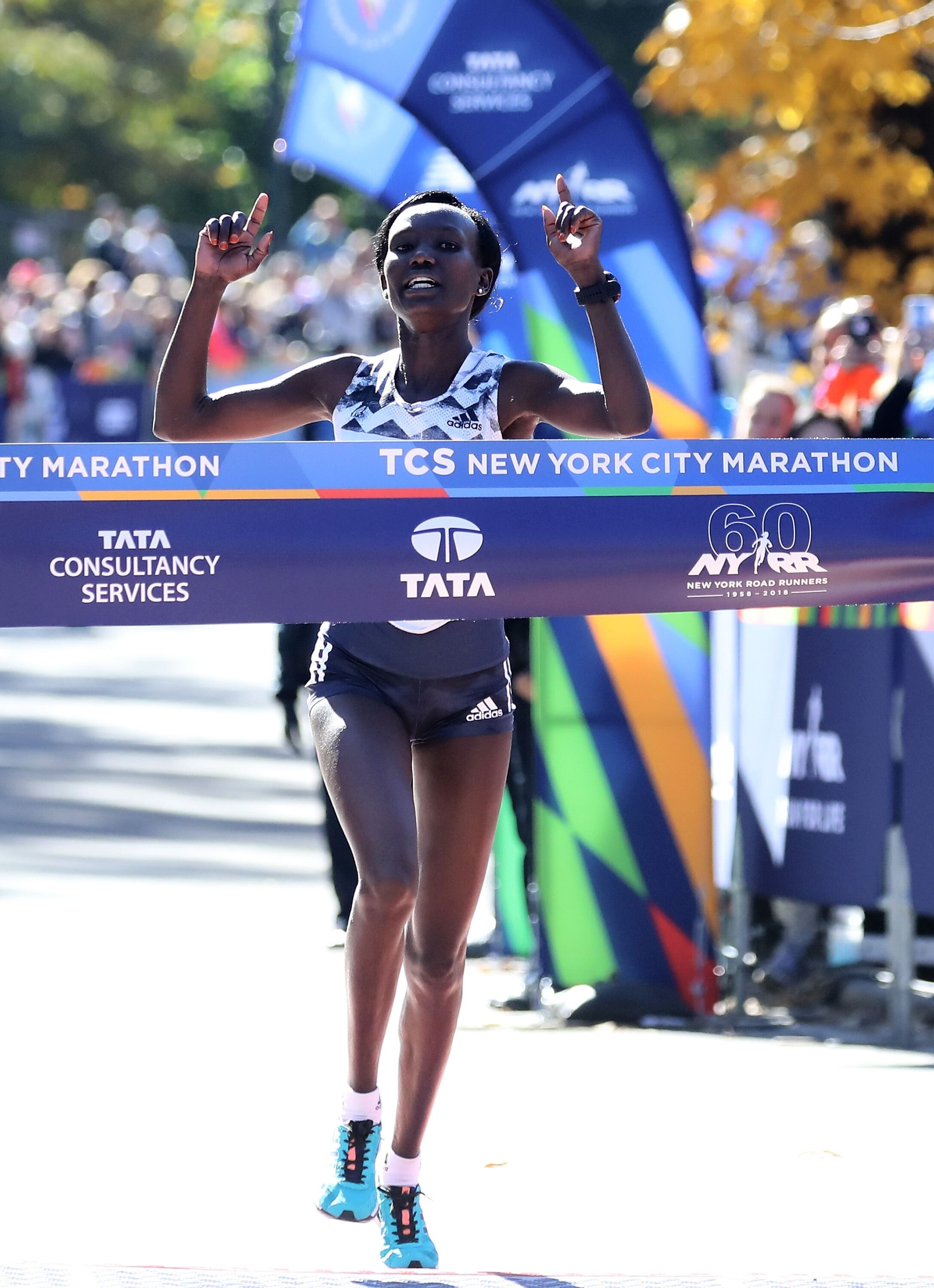
'If I don’t do this, then what?'
Hailing from Baringo County, a province immediately to the east of the focal point for Kenyan running in Eldoret, there are many well-known and successful athletes who come from the area, but Keitany’s impoverished childhood made it initially unlikely that she was going to join their number.
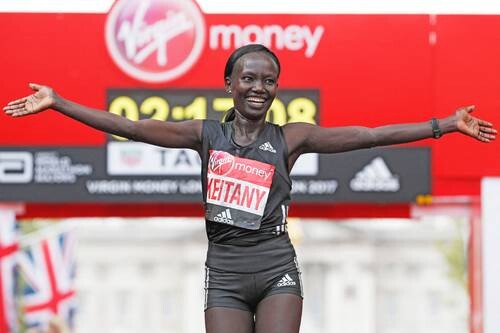
She elaborated on her tough childhood in a lengthy interview with The New York Times in 2019 – details of which are only precised here – and described living in a home without electricity or any other basic amenities, as well as having no shoes for much of her childhood.
Her household tasks as a very young child included walking several kilometers to a nearby river to haul pails of water home for cooking and cleaning.
Keitany’s parents, both struggling subsistence farmers, were unable to afford even the modest school fees for her to continue her education from her mid-teens so, at the age of 15, to help support her parents and five siblings, she left and went to work as a live-in maid almost 20 kilometers away, caring for three infants and sometimes not seeing her family for several months at a time.
“It was not an easy job,” reflected Keitany. “But I was getting money to give to my parents. I was thinking, ‘If I don’t do this, then what?’”
Hidden talent out in the open
She returned to school after two years when a relative was able to help financially and Keitany started to attend the National Hidden Talents Academy near Nairobi, a community-based secondary school that primarily assists orphaned and vulnerable children.
The school had a strong emphasis on physical education, which continues to this day, and it has produced several Kenyan internationals in a variety of sports. Keitany’s precocious talent as a runner, which had been evident in her early teens prior to the enforced two-year hiatus, came to the fore.
After eight months of hard training and sharing a cramped one-bedroom house with three other runners, Keitany made her first overseas trip and caused a minor sensation by winning the relatively low-key Sevilla-Los Palacios Half Marathon in southern Spain – not to be confused with the much better known EDP Sevilla Half Marathon – by over two minutes in 1:09:06, a course record that exists to this day ahead of the 2021 edition on December 19.
The words ‘unknown Kenyan’ are too often used to hide a lack of research or information but in this instance, it was a most appropriate phrase and, amid rumors at the time that the course was short because of Keitany’s super-quick time on the circuit, it bought her to the attention of both athletics aficionados and race promoters alike.
In the first nine months of 2007, Keitany proved that her debut international race had been no fluke as she rattled off another five half marathon victories in six outings at races in Portugal, Spain and France, also reducing her best to 1:08:36.
Keitany takes silver in Udine
This streak of success earned her a place on the Kenyan team at the 2007 World Athletics Half Marathon Championships in the Italian city of Udine – an accolade she subsequently admitted as being among her wildest dreams, despite her ambition to be a top-flight runner 12 months before – and she showed her considerable mettle to finish second behind the Netherlands’ Lornah Kiplagat and bank a cheque for a life-changing $15,000.
To now give a complete narrative of the next 12 years of Keitany’s superb competitive running career through to her last race, the 2019 New York City Marathon, would take a book and cannot be done justice in just a few hundred words.
However, it was apposite that her running career should finish in the Big Apple at arguably the world’s most famous race over the classic distance, as it is this event with which she is probably most closely associated.
After finishing third in New York on her marathon debut in 2010 – in the wake of her win at the 2009 World Athletics Half Marathon Championships in 1:06:36 which, at the time, was the second fastest mark ever on a record-legal course and an African record – Keitany went on to win the New York City Marathon on three consecutive occasions between 2014 and 2016 and then again in 2018.
To this day, she remains the only woman other than the incomparable Grete Waitz to have triumphed in New York more than three times.
Keitany also made her mark in the London Marathon. Her first triumph there came in 2011 and further victories in the British capital came in 2012 and 2017.
Record runs in London and RAK
She continues to hold the women-only marathon world record with a time of 2:17:01 set when she completed her hat-trick of London wins four years ago.
Another particularly notable accolade during her illustrious career was setting a world half marathon record of 1:05:50 at the 2011 RAK Half Marathon.
Perhaps the only blemish on Keitany’s competitive record is that she never climbed the podium at an Olympic Games.
At the London 2012 Olympic Games, she started arguably as the favorite having returned to the city with a world-leading 2:18:37 from the London Marathon, albeit on a different course, four months earlier. She was part of a leading quartet of runners at 40km but was the luckless member of the group to miss out in the battle for the medals over the final two kilometers and crossed the line in fourth place.
In 2016, she was named as a non-traveling reserve for the Kenyan contingent going to Rio, but Keitany had her sights set on challenging for a place on the Tokyo team before the pandemic, and a cruelly timed back injury, intervened.
In September this year – with her 40th birthday looming on 18 January 2022 – Keitany decided to call time on her outstanding career and announced the end of her professional running in a valedictory press release.
“After my successful 2019, when I had some good results including second place in New York, I was hopeful that I could still be very competitive internationally for several more years even though I am in my late 30s,” she commented.
“However, I’m sad to say, a back injury that I suffered in late 2019 made a decision about my retirement for me. I couldn’t get the treatment I wanted in Europe because of the pandemic-related travel restrictions last year and every time I thought I had got over the injury and started training hard, it became a problem again.”Sadly, Keitany will no longer be seen on the start line of a major marathon but nevertheless she leaves behind a host of memorable performances that have assured her of a place in the pantheon of road running greats.
(12/14/2021) ⚡AMPby World Athletics
The 2024 Paris Olympic opening ceremony will be held on boats
The Paris 2024 Organizing Committee announced today that the popular river Seine that runs through Paris will serve as the venue to host the 2024 Olympic Games opening ceremony. Athletes are set to travel on a six-kilometre route by boat, as the general public cheers on from the river banks of the Seine.
“The objective was to make the opening ceremony accessible to everyone,” said Tony Estanguet, the Paris 2024 President, in a press conference. Estanguet suggested the idea to hold the opening ceremony on the river back in March.
The location for the ceremony was approved today by the Paris 2024 Board and the International Olympic Committee (IOC).

Since the ceremony is outdoors, the host nation predicts that 10 times more spectators will have access to and watch the event. This is the first time in recent Olympic history that an opening or closing ceremony will be held in an accessible public space.
The Paris 2024 organizing committee plans on having over 600,000 spectators able to attend the opening ceremony free of charge.

If you are looking for front-row seats on the Seine, they will come at a cost. Organizers mentioned that popular viewing points on the river will be operating in paid ticketed zones.
The concept is a boat party and parade with delegations and athletes set to travel down the river on 170 boats The route will begin at the Pont d’Austerlitz, which is close to the French National Library. The Trocadéro Gardens will mark the end of the opening ceremony. The location was the site of the handover celebration during the conclusion of the Tokyo 2020 closing ceremony.
Paris organizing officials mentioned that they had 50 meetings with top security experts since they developed the concept, with no security obstacles identified so far.
The Paris 2024 opening ceremony is scheduled to take place on July 26, 2024, with the Olympics running until Aug. 11. The Paris Games will also mark the first time that the Olympics will host a marathon for the general public on the same course as the Olympic Marathon.
(12/14/2021) ⚡AMPby Marley Dickinson
Paris 2024 Olympic Games
For this historic event, the City of Light is thinking big! Visitors will be able to watch events at top sporting venues in Paris and the Paris region, as well as at emblematic monuments in the capital visited by several millions of tourists each year. The promise of exceptional moments to experience in an exceptional setting! A great way to...
more...The road to racing's return
Athletes have hit the ground running when it comes to the return of mass road race action, but what has it taken to stage some of the world’s most prestigious events in the current climate?
A total of 10 top-tier World Athletics Elite Platinum Label road races – including marathons in Berlin, London, Chicago, Boston, Amsterdam, New York and Valencia – have taken place in 2021, with many of the world’s leading athletes joined on the city streets by significant mass fields.
In addition, around 30 World Athletics Elite Label and 50 World Athletics Label races will have been held around the world, with many protocols and procedures in place to ensure the health and safety of participants.
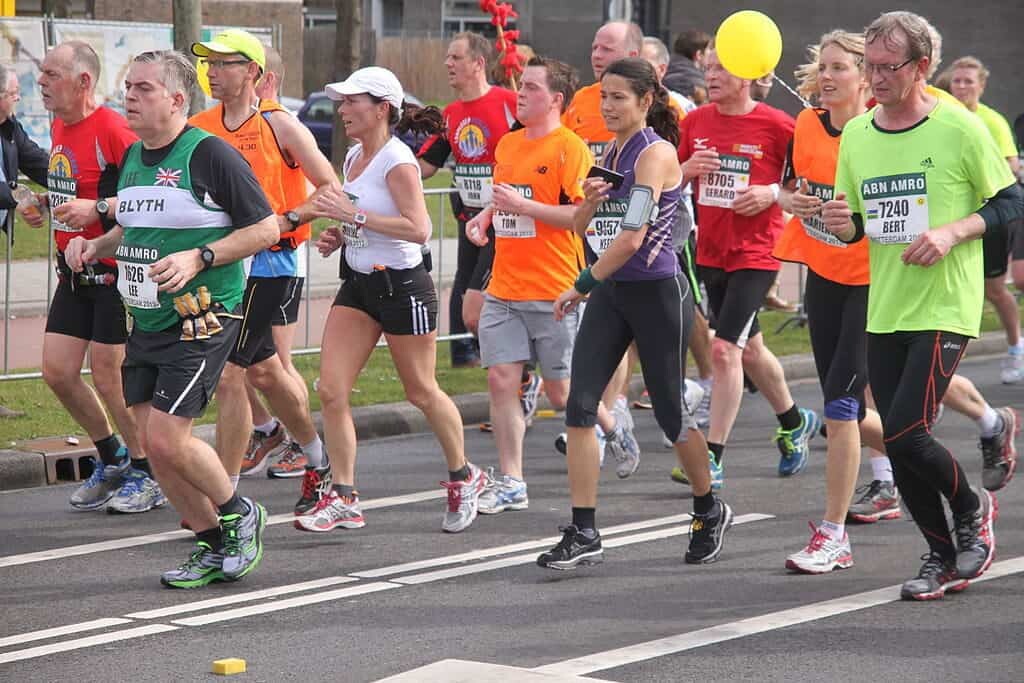
While some measures, such as Covid testing and reduced or more spread-out fields, were obvious, huge work was also done behind the scenes by organizers to allow these races to return.
“We were asking a lot from our participants this year, in order for us to be sure we could get the event on, come what may,” said London Marathon communications director Penny Dain. “We put protocols in place that we had never done before, to make the event Covid safe. We went out to our participants outlining these in our Six Steps to the Start Line campaign, and asking for their help, support and understanding that yes, it is different, but by helping us do this, it means we can be sure the event goes ahead.
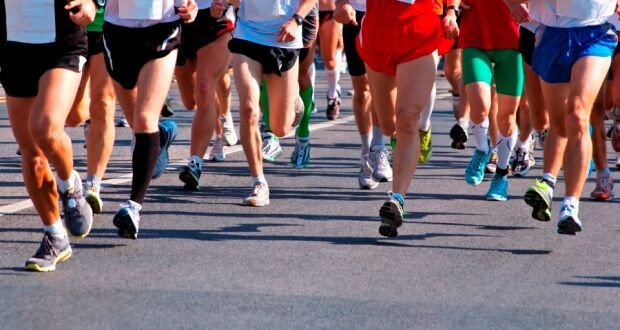
“It was genuinely a truly special day,” added Dain, with the traditional April event having taken place as an elite-only race in 2020 before a second consecutive October running this year, featuring 35,000 mass race finishers. “It had been 889 days since we had last delivered the London Marathon and to have that back – to see the joy, the emotion, the crowds – it was special.
“We are working together to encourage people back. It’s all about the importance of mass participation events and parkrun in terms of what regular exercise does for physical and, almost more importantly, mental health.”
Six Steps to the Start Line
Among the earlier steps taken by London Marathon organizers was to ask participants to update their predicted finishing times to enable the effective organization of the many waves. On race day, organizers started people over 90 minutes in waves of 1000, meaning the density of the runners on the course was spaced out because of the seeding.
Official kit bags were sent to runners to drop off at the Running Show in advance, removing the need for baggage trucks at the start areas – reducing dwell time and crowding at the start – as well as a lot of the infrastructure at the finish.
A negative lateral flow test was required in order to drop off kit bags and collect bib numbers in the days leading up to the race and random additional checks for further negative results were also done at the start on race day. Participants were asked to bring only one supporter to reduce crowds and the mass race did not feature any pacers.
The London Marathon is far from alone in having protocols such as these in place, and many more procedures were undertaken for both the elite and mass events.
“Generally, the optimism and determination was always there to make it happen, but always in combination with knowing that it had to happen safely,” added Dain. “We were always very attuned to what was going on in the world.
“It had to be the right thing for London, for the UK, for society. That decision to go for the October date is what made it possible. Clearly if we had stuck to our April date, it wouldn’t have happened.”
Ten-week thriller
As a result, seven major international races were held in a thrilling 10-week period between September and December – starting with the BMW Berlin Marathon on September 26, through to the Maraton Valencia Trinidad Alfonso EDP on December 5. Just before that, the Vienna City Marathon – a World Athletics Label road race – took place on September 12, as the first major city marathon in Europe since the beginning of the pandemic.
“A tailor-made prevention concept combined with the very high vaccination rate of 93% of participants made the event possible,” said organizers of the two-day event, which featured 18,118 runners from 125 nations overall. “More than a week after the event, the Health Service of the City of Vienna confirmed that no infections with Covid-19 were recorded in connection with the event.”
“Runners gave us overwhelmingly positive feedback. They were happy that the race took place and felt safe in terms of Covid prevention,” organizers added.
“Elite racing and mass racing belong together and are deeply connected with each other. It’s one of the unique features of road running, that fun runners and Olympic champions can take part together at the same time and the same place in the same event. If we lose this, the world of running will be a different one, certainly not a better one.”
Organizers had previously arranged nine small races in Vienna under strict Covid rules, with a maximum of 200 participants, in order to give the running community some motivation and to learn as an organizer how to handle the measures. The prevention concept for the Vienna City Marathon included the requirement of a current negative Covid test to collect start numbers, a reduced limit of 28,000 registered runners and enlarged start and finish areas.
“It (the return of the event) is a contribution to society in terms of public health, both mental and physical, a step on the return to normality, a welcome boost for the economy and tourism,” added organizers.
Around 10 Label road races are scheduled for the remainder of this year, with the 2022 calendar to be announced this week.
So runners can sign up, lace up and enjoy road racing’s return, with the knowledge that Label road race organizers are doing all they can for the safe hosting of events.
(12/13/2021) ⚡AMPby World Athletics
Kenya’s Mark Korir smashed the record at the 14th edition of the Zurich Marathon that was held on Sunday in Malaga, Spain
Kenyan Mark Korir destroyed the race course by more than two minutes as he erased the previous record of 2:10.08 that had been set by compatriot Martin Cheruiyot in 2019.
The 36 year-old cut the tape in a new course record of 2:07.39 and was followed by Nguse Tesfaldet Amlosom from Eritrea who also ran under the old course record as he crossed the line in 2:08.23.
Solomon Kirwa from Kenya closed the podium first three finishes in 2.08. 43.
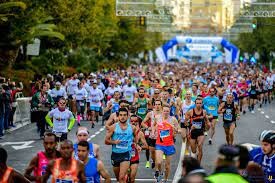
by James Koech
Zurich Malaga Marathon
If like many other runners from the north of Europe you are searching for a great winter escape and a race set in a beautiful location then Maratón Málaga may be what you are looking for. This annual road running event is held in December in the city of Málaga, Spain, the capital of Costa del Sol. Malaga marathon...
more...Joseph Hale and Yanet Castro Aguilar won the men’s and women’s marathons, respectively
Most of Sunday’s runners at the BMW Dallas Marathon had been waiting two years to feel the euphoria of crossing the finish line in front of city hall.
Joseph Hale had three years of waiting under his belt after finishing fourth in 2018 and not running the race in 2019.
So when the Dallas resident crossed the finish line to win the 50th Dallas Marathon with a time of 2:28:42, he pumped his fist and let out a celebratory yell.
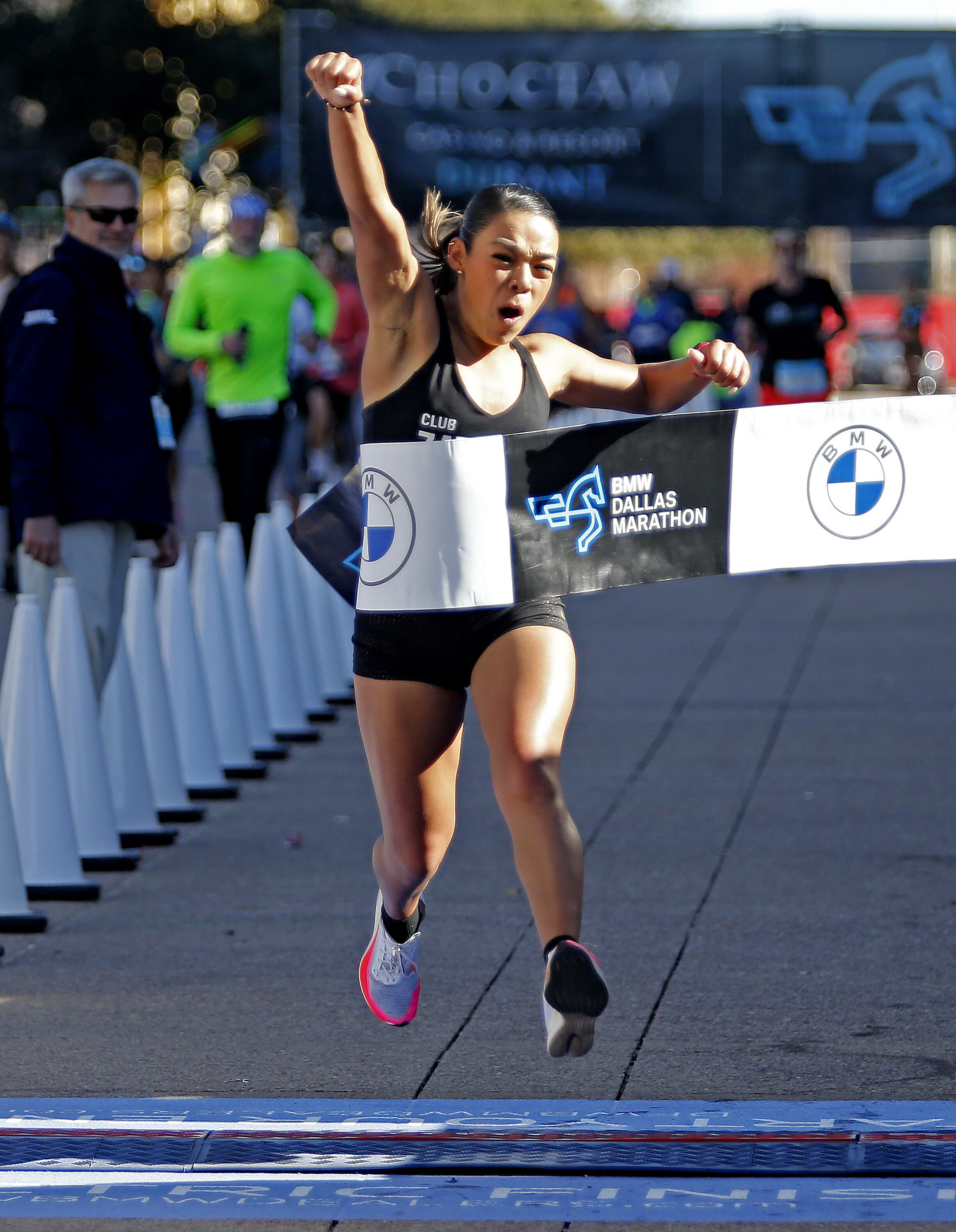
“It’s literally more than a life goal,” Hale said. “I don’t get emotional very often, but I’m going to get emotional about this.”
Joseph Hale crossing the finish line with a time of 2:28:42 to become the winner of the 50th Dallas Marathon.“I’ve literally dreamed of running that corridor for the last three years,” he said.
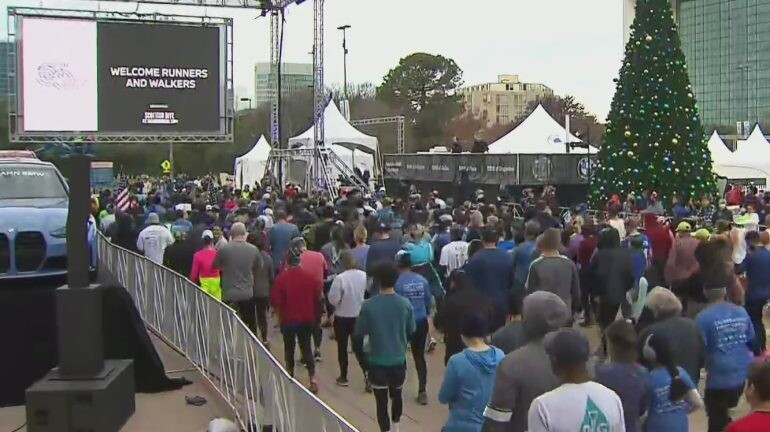
He just edged runner-up Joseph Darda of Fort Worth, who was about 20 to 30 seconds behind for the last 12 miles of the race. Darda crossed the finish line with a time of 2 hours, 29 minutes, 14 seconds.
Hale said having someone right behind pushed him to go harder but also forced him to be strategic.
This was the second straight weekend Hale finished a marathon.
He ran the California International Marathon the previous Sunday in Sacramento, Calif., finishing with a time of 2:26:44. He said he felt the mileage in his legs by the 10th or 11th mile.
“I wasn’t going for time; that’s what my race last week was about,” Hale said. “I actually don’t really know my time. I don’t really care. I won.”
More than 17,500 runners competed in Sunday’s races, and over 26,000 people competed over the entire weekend, which set a record.
The women’s winner was Solyenetzitl Selene Yanet Castro Aguilar of Zacatecas, Mexico, who finished with a time of 2:52:20.
She spent the first part of the race pacing with another competitor but, unbeknownst to her, the other runner was running the half marathon and soon split off in a different direction.
Castro Aguilar said she has been dealing with injuries over the past few years. She has spent the past three months training very hard for Sunday, and she took full advantage of the opportunity.
“I’ve been waiting three years to run this,” she said through a translator. “I was very happy and smiling all the way.”
It was the first marathon for Bradley. She ran at Baylor and was an NCAA cross country championship individual qualifier in 2017.
“This is kind of a full-circle moment because I went through some injuries that at the time I thought were career ending,” Bradley said. “To be able to run a marathon, it’s like all my dreams coming true.”
It was a banner year for first-time competitors. Both half marathon winners, Mitch Ammons and Kelsey Bruce, and women’s ultra marathon winner Megan Smyth were running at the event for the first time.
Bruce and Hale are best friends, meeting each other when they were both runners at Dallas Baptist from 2011-15.
They even ran the first few miles of Sunday’s race together before embarking on their own separate, winning journeys.
Bruce won the half marathon with a time of 1:14:35. She moved to Wichita Falls earlier this year after being hired as the head coach of Midwestern State’s cross country and track teams. Being able to come back to her hometown of 10 years and win the half marathon in front of her friends, family and coach was special.
“It’s always fun to hear your name on the course from people you love,” Bruce said.
So with her friend still on the road, Bruce stuck around after receiving her medal and award, joining the cheering brigade for Hale.
And as Hale entered the final length of his winning run, one voice stood out amid the crowd cheering him on.
“With 600 to go, she was there telling me that you got it,” Hale said. “She knows how I finish. She knows I can finish terribly. So when she said that I had it, I knew I had it.”
(12/13/2021) ⚡AMPby Peter Warren
BMW Dallas Marathon
The BMW Dallas Marathon is the result of the efforts of a pioneering group of brave Dallas runners, who had the foresight to establish an annual 26.2-mile race more than 40 years ago. In 1971, Tal Morrison – the official founding father of the marathon – placed a $25 ad in Runner’s World beckoning runners from around the country to...
more...Jakob Ingebrigtsen wins 2021 Eurpoean XC championships
The 2021 European Cross Country Championships took place Sunday in Dublin, Ireland, and Norway’s Jakob Ingebrigtsen won the senior men’s race in 30:15, ahead of Turkey’s Aras Kaya and Jimmy Gressier of France. Karoline Grøvdal, also of Norway, won the women’s race in 26:34.
The men’s race
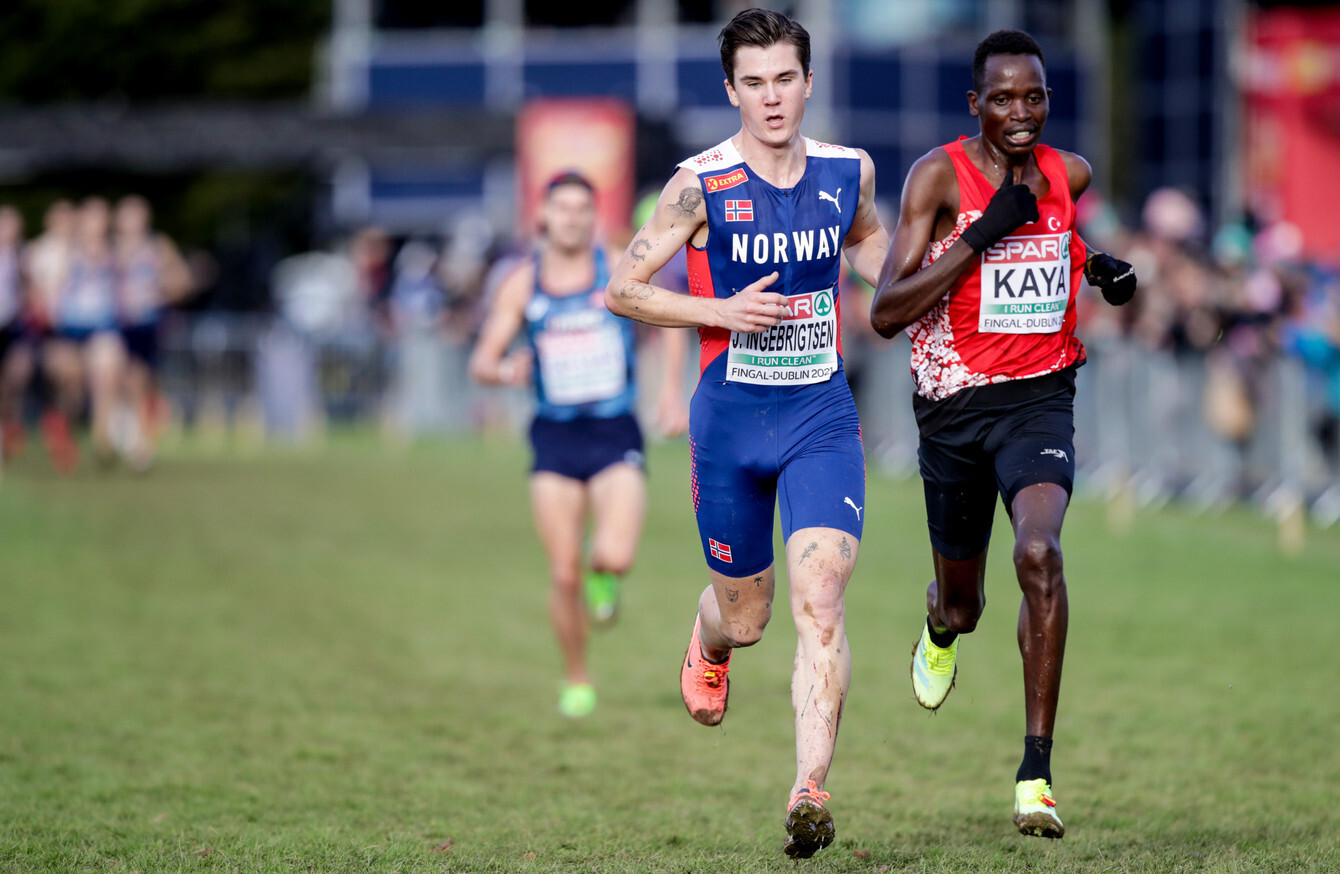
The senior men’s race featured an all-star lineup, but the real race XC fans were waiting for was between Ingebrigtsen and Gressier. Ingebrigtsen won four successive U20 titles from 2016 to 2019, and despite the fact that he is only 21 and still eligible to race at the U23 level, the Olympic gold medalist instead chose to make the jump to running in the senior race.
Gressier also has an impressive track record in cross country, having won three successive individual and team titles between 2017 and 2019 at the U23 level. He also graduated to the senior level this year, and while most of his competitors have not done a lot of racing this fall, Gressier has been cleaning up on the French domestic XC circuit. In the end, it was Ingebrigtsen who was victorious, followed by Kaya in second and Gressier in third.
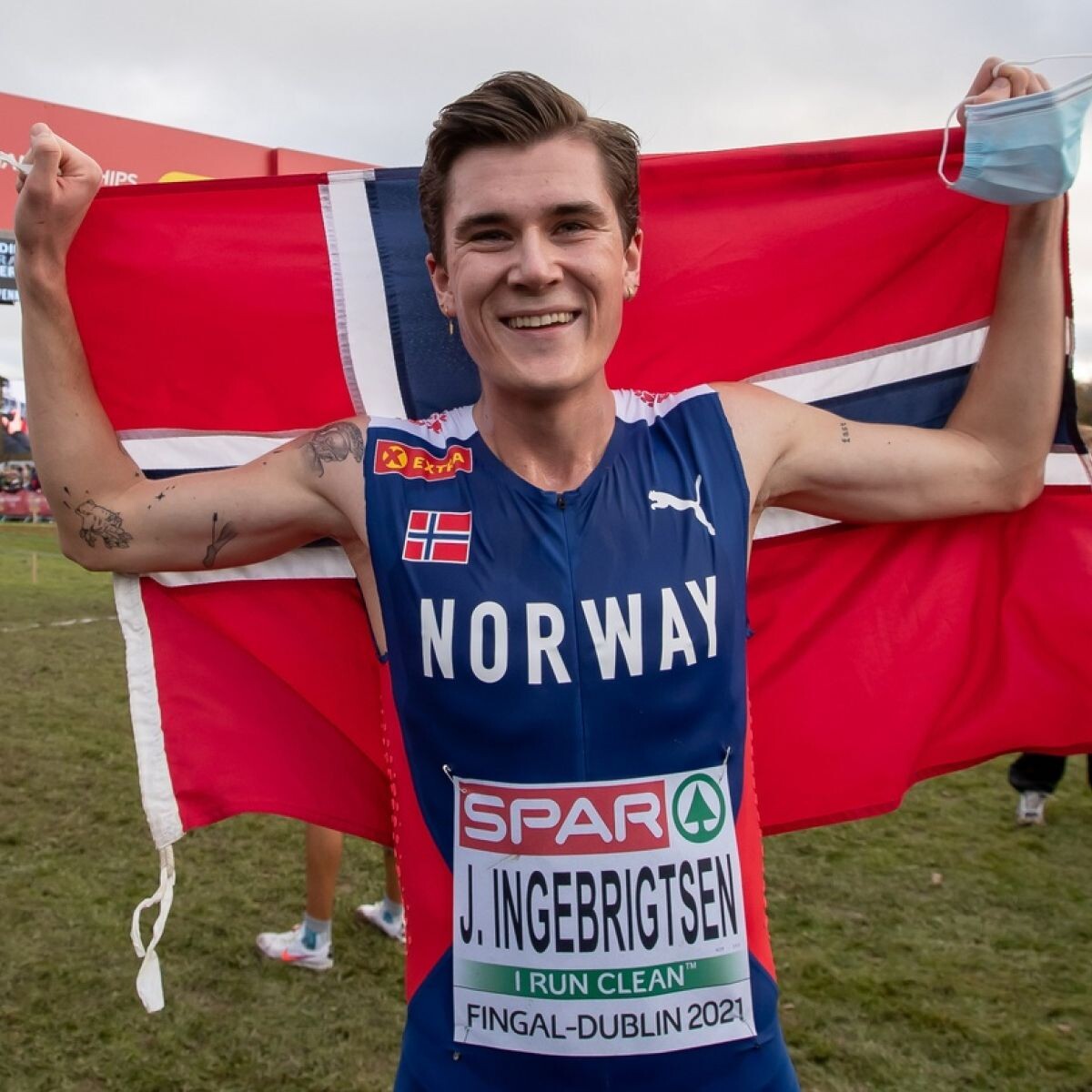
The women’s race
It was a winning weekend for Norway, with Grøvdal taking the win on the women’s side in 26:34 for the 8K race. Meraf Bahta of Sweden finished behind her in second in 26:44, followed by Alina Reh of Germany in 26:53.
Heading into the race, the favorite was Turkey’s Yasemin Can, who has never been beaten at a European Cross Country Championships. Had she won Sunday’s race, she would have claimed her fifth consecutive European XC Title, but she ultimately finished 14th in 28:38. Germany’s Konstanze Klosterhalfen is also a multiple-time winner at the European Cross Country Championships and took back-to-back U20 titles in 2015 and 2016. In the end, she finished 5th in 27:12 behind Great Britain’s Jessica Judd.
(12/13/2021) ⚡AMPby Brittany Hambleton
Oregon Ducks athletic programs no longer can monitor athletes’ weight, body fat percentage
The University of Oregon strengthened protocols in late October to prohibit athletic programs from requiring athletes to be tested for body fat percentage.
According to the revised written protocols, athletes can choose to be tested. But results of the test “should not be reported beyond the student-athlete, dietitian and relevant medical personnel. Reporting of individual results to coaches is not permitted.”

The move came in apparent response to an Oct. 25 story from The Oregonian/OregonLive in which six former women track athletes accused the track program of emphasizing and tracking weight and body fat percentage to the point it led to eating disorders.
The athletes alleged UO coach Robert Johnson’s program required athletes to undergo regular DEXA scans to precisely measure their body fat percentages, then pushed them to lower those percentages.
She told the publication she believes the dietary restrictions led to an injury-plagued sophomore season.
In a story appearing Tuesday in the British newspaper The Telegraph, former Oregon distance runner Philippa Bowden said she was told to drop weight even after confiding she previously had battled an eating disorder.
She said she eventually withdrew from school in 2019 after beginning to purge in an effort to keep her weight low.
UO spokesperson Jimmy Stanton said the athletic department recommended in fall 2020 that coaches stop emphasizing weights and body fat percentage in training. That recommendation is now a requirement.
The recently revised protocol further states: “Coaches must be careful never to suggest or require changes in weight or body composition.”
Johnson has guided the Ducks to 14 national championships in cross country, indoor and outdoor track, cementing Oregon’s position as one of the elite programs in college track and field.
That was followed up in an Oct. 29 story in Runner’s World in which former UO distance runner Katie Rainsberger made similar allegations.
Rainsberger told Runner’s World she was encouraged to drop her body fat percentage and weight even though a nutritionist with the program knew she no longer was getting her menstrual period.
He outlined his training philosophy to The Oregonian/OregonLive in early October. It put a heavy emphasis on using advanced technological tools such as blood tests, hydration tests and DEXA scans to track athletes’ body composition.
Johnson did not respond to interview requests for this story.
A DEXA scan is a medical imaging test that uses X-rays to precisely measure bone density, muscle mass and body fat percentage.
Athletes said they believe Johnson and other coaches always knew the test results revealing their body fat percentages.
Even before DEXA scan technology became available to Oregon in recent years, Johnson’s program measured athletes’ body fat with skinfold caliper tests.
A former UO employee who worked with the athletic department dietitians, helped measure body composition with skinfold calipers from 2014-16. Results of the tests were tracked on a spreadsheet.
“In my experience, the coaches always had access to athletes’ body composition,” the former employee says.
The employee — who still works in the field and did not want be identified for fear it would restrict future employment opportunities — became concerned about Johnson’s reliance on body fat percentage as a training tool.
“I had athletes express to me a feeling like they needed to be compliant with coaches’ wishes in order to maintain their scholarships and be able to compete in the important races,” the former employee said.
The former employee said at one point, Johnson and sprint coach Curtis Taylor wanted athletes to severely restrict their consumption of carbohydrates to facilitate weight loss.
“Obviously, that is not a diet backed by science,” the former employee said. “I spoke with athletes about this and explained it’s not backed by science. It’s not appropriate. Carbohydrates are important for athletes.
“I remember an athlete saying, ‘I hear you. I believe you. I know you’re right. But at the end of the day, Coach Johnson decides who competes. So, I have to do this.’”
At one point, the former employee said, Johnson called out the employee and a mid-distance runner in front of the team during a training session inside the Moshofsky Center, the school’s indoor practice facility.
“He pointed at her and started making accusations at me, saying I wasn’t doing my job to help her lose weight,” the former employee said. “He never was responsive to my attempts to clarify the nature of body composition and how it relates to athletic performance.”
Former UO high jumper Ashlyn Hare said she and other athletes discussed the track team’s approach to weight and body composition with Johnson in the wake of similar accusations made in 2019 by professional runner Mary Cain against Nike Oregon Project coach Alberto Salazar.
Hare said Johnson listened to the athletes over the course of several weeks. Eventually, though, she received a text message from him containing a link to an article in which a former professional runner defended the value of tracking weight and body fat percentage.
“After that it was conversation closed,” Hare said in a text message to The Oregonian/OregonLive. “He had received confirmation of his bias. He didn’t need to hear any more.”
Hare, who competed for the Ducks from 2016-19, said athletes during her time always believed DEXA scans were mandatory for athletes.
She shared a text exchange from a UO dietitian during her time at Oregon reminding Hare she hadn’t undergone her DEXA scan.
“I was told by our athletic trainer that I didn’t need to do the DEXA because I was not training and about to have surgery,” Hare said in a text message. “But I was told I had to anyway.”
NEW UO PROTOCOLS
Assessment of bone density and body composition (DEXA) relates to highly sensitive personal information and belongs to the student-athlete.
All student-athletes should receive annual education about how this information can support their performance and they should have the optionto participate.
In order to protect the student-athlete and the coach, data should not be shared or reported beyond the student-athlete, dietician, and relevant medical personnel. Reporting of individual results to coaches is not permitted.
Body image and disordered eating pose serious physical and psychological risks to student-athletes, and our primary goal is to support a healthy mind and body.
High risk sports should receive annual education about the prevalence, risks, and warning signs of disordered eating.
High risk sports should complete annual assessment for disordered eating risk factors.
At risk individuals should enter an interdisciplinary support model that includes dietetics, athletic medicine, and mental health services.
The focus of nutrition should be on the development of healthy habits that support performance — hydration, fueling, recovery.
Any changes in weight and body composition should be initiated and motivated by the student athlete under the guidance of a dietician.
Coaches must be careful never to suggest or require changes in weight or body composition.
(12/12/2021) ⚡AMPby Oregon Live
Nike Tries to Ban Imports of Adidas Knit Shoes, Accusing It of Copying Designs
Nike Inc. is asking a U.S. trade agency to block imports of a wide range of Adidas AG Primeknit shoes, saying they copy the Oregon company’s patented inventions for a knitted fabric that reduces waste without any loss in performance.
The complaint, filed Wednesday at the International Trade Commission in Washington, seeks to ban imports of shoes, including Adidas by Stella McCartney Ultraboost, Pharrell Williams Superstar Primeknit Shoes and Terrex Free Hiker hiking shoes. Nike also filed a patent-infringement suit in federal court in Oregon making similar allegations.
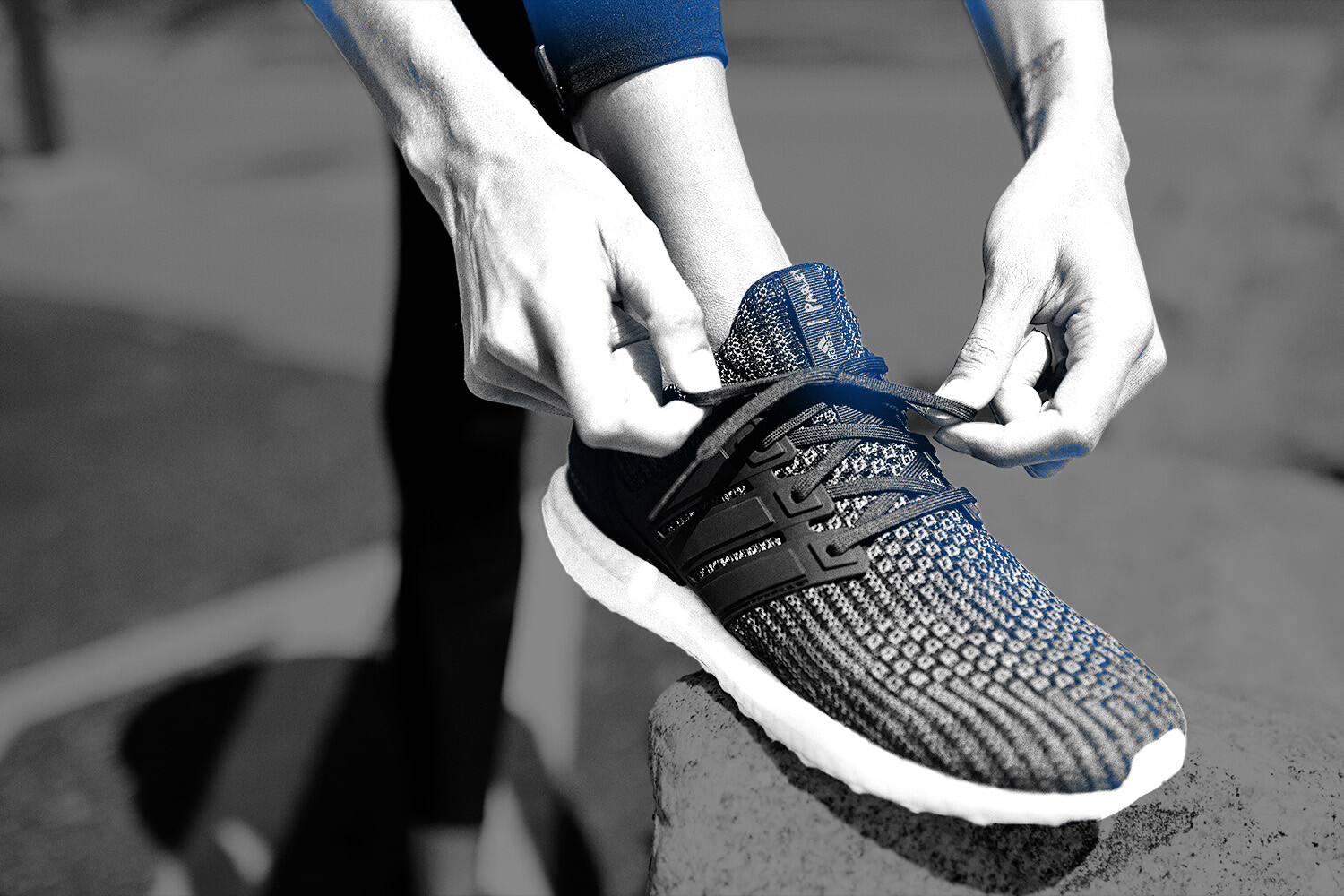
The patents cover Nike’s FlyKnit technology, which uses specialized yarn from recycled and reclaimed materials to create a sock-like fit in the upper part of the shoe. Nike said it was the result of more than $100 million and a decade of research -- almost all done in the U.S. -- and “represented the first major technology innovation in footwear uppers in decades.”
FlyKnit was first introduced before the 2012 London Olympics and has been adopted by “basketball great LeBron James, international soccer superstar Cristiano Ronaldo, and world record marathoner Eliud Kipchoge,” Nike said in the complaint.
“Unlike Nike, Adidas has forgone independent innovation,” Nike said in a court filing. “Instead, Adidas spent the past decade unsuccessfully challenging several of Nike’s patents directed to FlyKnit technology -- all while using Nike’s patented technology without permission.”
Nike said it was “forced to bring this action to defend its investments in innovation to protect its technology by halting Adidas’ unauthorized use.”
Adidas said it’s analyzing the complaint and “will defend ourselves against the allegations.”
“Our Primeknit technology resulted from years of dedicated research and shows our commitment to sustainability,” Mandy Nieber, an Adidas spokeswoman, said.
Several of Nike’s patents, including two of the six in the ITC complaint, have been the target of regulatory challenges by companies including Adidas. Nike said they were filed only because it refused to pledge not to sue the German company.
The civil suit, filed in Portland, Oregon, accuses Adidas of infringing those six patents and three others related to FlyKnit technology. It seeks unspecified damages and asks that any award be tripled for the intentional copying. It’s also seeking an order to halt sales.
Nike has been aggressive in protecting its FlyKnit and other shoe inventions. A lawsuit against Puma SE settled in January 2020 and ones against Skechers USA Inc. settled in November.
The U.S. trade agency is a popular forum for companies looking to derail rivals in the world’s biggest market. The commission works more quickly than most courts, with final decisions typically in 15 to 18 months. Not only can it block products at the U.S. border, it can halt sales of products already brought into the country, an order that’s harder to get in district court.
The cases are In the Matter of Knitted Footwear, 337-3580, U.S. International Trade Commission (Washington) and Nike v Adidas, 21-1780, U.S. District Court for the District of Oregon (Portland).
(12/12/2021) ⚡AMPFive books to make you rethink your running
At moments, running can be a monotonous sport. The same routes traversed time and again over a long winter block of training. Sometimes all it takes to relight that fire is a good book.
Here are five that will inspire you to get the trainers on once more.

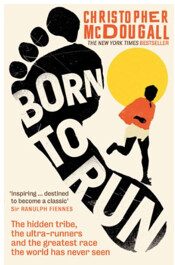
Out of Thin Air by Michael Crawley
Michael Crawley is a talented marathon runner who has competed internationally for Scotland, but it was his trip to Ethiopia that made him fall back in love with the sport. Living with some of the nation’s best athletes, Crawley provides a fascinating insight into one of running’s most fabled heartlands.
From travelling to altitudes where it is difficult to breathe all in search of almost mythical mountain air, to zig-zag runs through dense forests, Crawley introduces us to the almost spiritual association Ethiopia has with the sport.
An awe-inspiring, uplifting read, Out Of Thin Air will bring purpose to those daily runs and a spring in the step for anyone hoping to follow in their footsteps.
Coasting by Elise Downing
Elise Downing’s book starts with the familiar conundrum. A university graduate finding her feet in the working world, Downing faces up to the reality of what her future holds. Her solution, however, is not the typical.
Deciding to run the coast of Britain, Coasting follows her journey round the nation’s shores. It charts the highs and lows of the entire 5000-mile journey, the people she meets along the way and the truths she discovers about herself.
Coasting serves a fitting reminder of how running can provide a great platform to unwind your thoughts, to reflect and ultimately to move forward in a better place than when you headed out the door.
Born to Run by Christopher McDougall
An injury to his foot has McDougall in pursuit of a fix. But in searching for an answer, the author draws us to what many see as the birthplace of North American endurance: the Tarahumara tribe and their incredible ultra-running exploits.
The book follows McDougall in his attempt to complete a 50-mile race in Tarahumara territory and sees him try to answer how humans are capable of such extraordinary feats.
A mixture of high-level sports science and nostalgic romanticism will see you plodding along wondering whether you were born to do this.
Feet in the Clouds by Richard Askwith
Richard Askwith is, by his own admission, no fell-running superstar but his book on the sport provides a compelling illustration of just why so many find the sport so special. One in which the sport’s best and the rest face the same trials and tribulations.
Along his journey trying to complete the Bob Graham Round, a fell-running endurance challenge in the UK’s Lake District, Askwith tells the story of fell-running’s understated stars.
If a book can summarise what it means to be out on the fells, plotting your path, this is probably it.
Feet in the Clouds will have you searching for the tallest hill and making it your mission to climb it.
The Passion Paradox by Brad Stulberg & Steve Magness
In pursing your running goals, it can often feel like you lose balance in your life. When you don’t quite achieve what you are looking for, then it can have a big impact on how you feel. Not just about your running but also about your self-worth.
Stulberg and Magness tackle the notion of passion, how it is important for success but how it needs to be harnessed so as to avoid becoming something obsessive. They talk about the warning signs, how an element of imbalance is necessary but ultimately how you can channel it to your advantage.
Although this book isn’t just about running, it is for all those who feel they’re stuck in a rut and looking for something to freshen up their perspective to their passions.
(12/12/2021) ⚡AMPby World Athletics
World Athletics Indoor Tour to expand in 2022
The World Athletics Indoor Tour will offer enhanced competition opportunities next year with its biggest calendar yet, comprising 38 meetings spread across 14 countries in Europe, North America and Asia.
The expanded tour will broaden the geographical spread of meetings around the world and incorporate additional area level competitions.

Heading into its seventh season, the World Athletics Indoor Tour will feature seven Gold level meetings in 2022, kicking off in Karlsruhe on 28 January and culminating in Madrid on 2 March.
With 50 days to go until the first Gold level meeting, athletes already announced include world pole vault record-holder Mondo Duplantis for the INIT Indoor Meeting Karlsruhe and the Müller Indoor Grand Prix in Birmingham, with Olympic 800m silver medallist Keely Hodgkinson due to join him in Birmingham. The Millrose Games is set to star Olympic 800m champion Athing Mu, two-time world indoor 800m silver medallist Ajee Wilson, Olympic shot put champion Ryan Crouser, world shot put champion Joe Kovacs and US 1500m champions Elle Purrier St Pierre and Cole Hocker.
The scoring disciplines on the World Athletics Indoor Tour rotate each year. For 2022 the Gold level scoring disciplines will be:
Women: 400m, 1500m, 60m hurdles, high jump, long jumpMen: 60m, 800m, 3000m/5000m, pole vault, triple jump, shot put
Each athlete’s best three results will count towards their overall point score. The athlete with the most points in each scoring discipline at the end of the tour will be declared the winner and will be awarded a USD$10,000 bonus along with a wild card entry for the World Athletics Indoor Championships Belgrade 22.
Each Gold meeting will offer at least USD$7000 in prize money for each individual discipline on the programme, including USD$3000 to the winner.
Silver meetings in the expanded tour will award at least USD$30,000 (at least $4000 per discipline and respecting gender equality) and Bronze meetings will offer at least USD$12,000 (at least $2500 per discipline and respecting gender equality).
Due to the pandemic, planned dates and venues could change as the season approaches. Broadcast details will be confirmed early in the new year.
Calendar – World Athletics Indoor Tour Gold
28 Jan – INIT Indoor Meeting, Karlsruhe, Germany29 Jan – Millrose Games, Manhattan NY, USA6 Feb – New Balance Indoor Grand Prix, Staten Island NY, USA17 Feb – Meeting Hauts-de-France Pas-de-Calais, Lievin, France19 Feb – Müller Indoor Grand Prix, Birmingham, UK22 Feb – Copernicus Cup, Torun, Poland2 Mar – World Indoor Tour Madrid 2022, Madrid, Spain
(12/12/2021) ⚡AMPby World Athletics
Five Tips to Avoid the Running Trots
No doubt the best of us have been in this situation and the only thing to do when, ahem, your lunch comes knocking is to start running towards the nearest toilet. Unfortunately, some of us don’t make it and for those of us who do, stopping mid run can be extremely painful. Not only because that new PB you were chasing will be long out of reach but because that feeling of starting to run after sitting or squatting to relieve yourself can be like knives in your calves. So what are these terrible runner’s trots? Why do they happen and how can you prevent them? TriChicks investigates with help from professional triathlete, Accredited Dietitian and nutritionist, and mum of two, Pip Taylor.
What are Runner’s Trots?
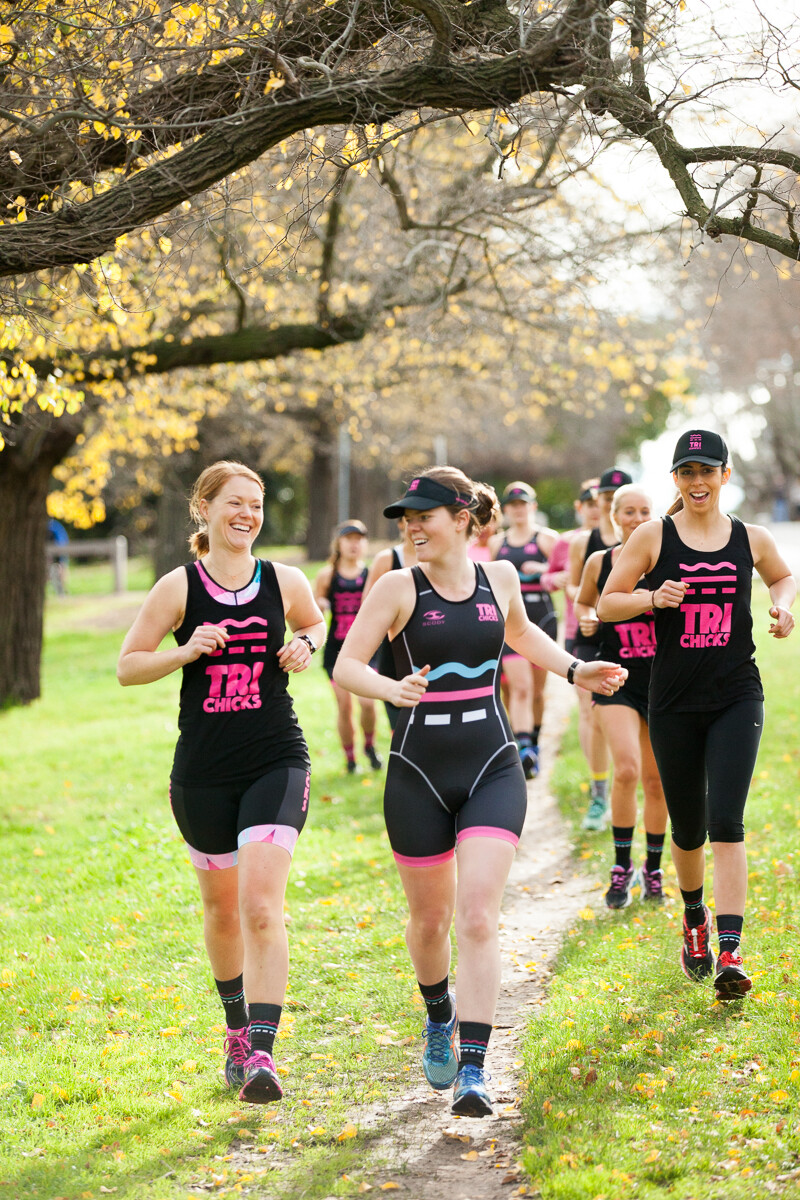
Simply put the term ‘Runner’s Trots’ covers any type of gastrointestinal issues or upset (GI). It can range from bloating and gasiness to vomiting, diarrhoea or urgency. However, when the word ‘trots’ is used it refers to issues of bowel movements and needing to make unplanned bathroom stops during or immediately after a workout.
Any type of athlete can be affected however runners experience this issue more commonly that other athletes. Estimates suggest that around 60-90% of runners have experienced GI issues.
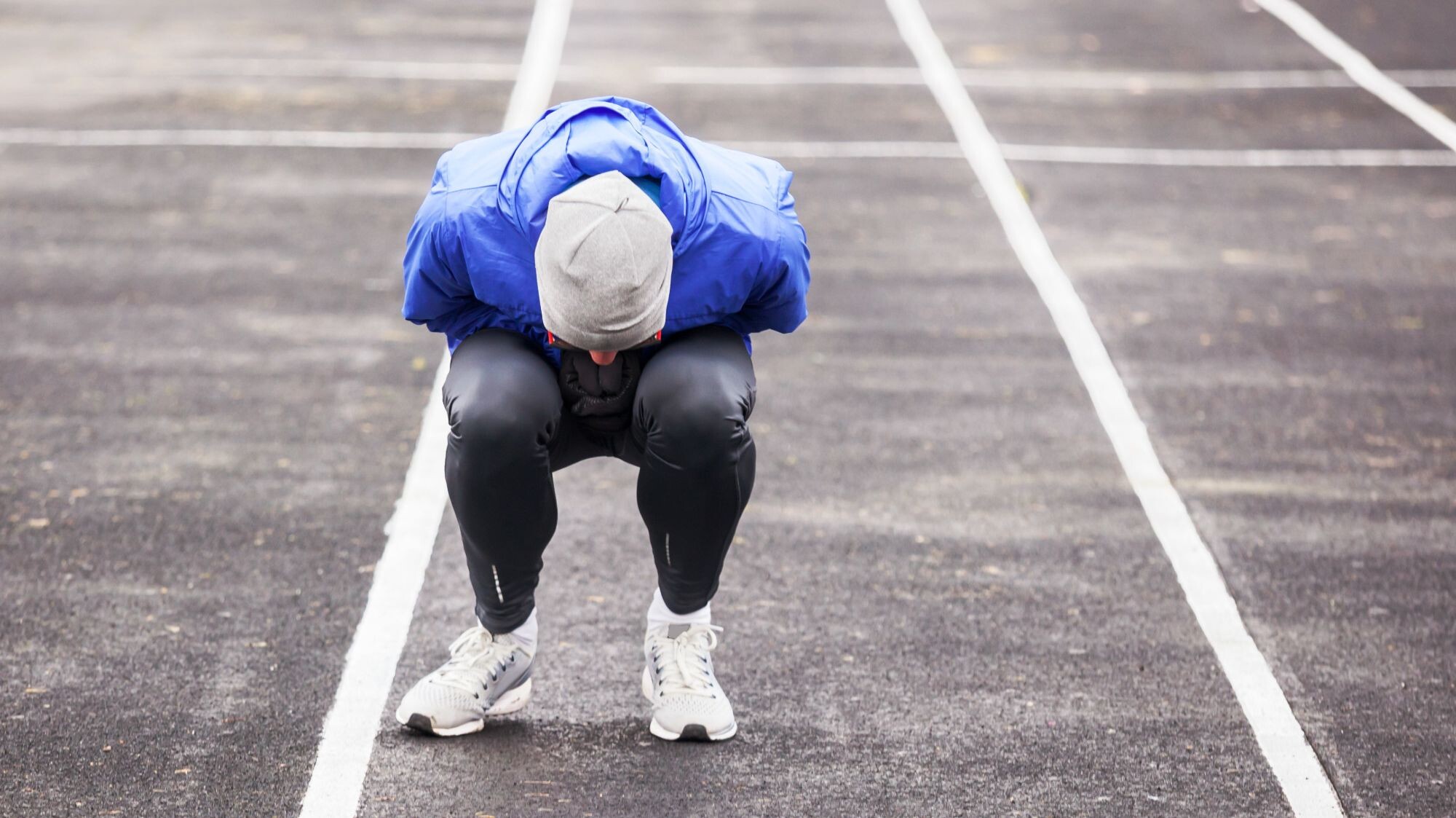
Why do they happen?
There are a number of reasons why you could be experiencing GI issues including stress, movement dietary intake and timing of intake, as well as unidentified food intolerances or sensitivities.
Hydration and heat also play a key role says Pip, “When we exercise, especially at a high intensity, blood is diverted away from the gut and towards working muscles and to the skin for more effective cooling. At the same time we have relaxation of the gut muscular tone by way of the sympathetic nervous system. This compromises the functioning of the gut but also rushes the contents through – hence that feeling of bathroom urgency.”
GI issues can occur in any sport for any athlete however runners are more prone to experience this type of discomfort. Running puts a lot of stress on the body not only from the intense vibration and jarring impact on the gut, but from the result of a high heart rate and increased body temperature.
Why does this happen to me?
Frequency of bowel movements varies for each individual and for some GI issues are something they regularly have to deal with while for others it may only be occasional.
“Race day also brings a whole new level of GI incidence and this is due to anxiety and nerves – the gut is affected hugely by stress as anyone knows who has ever experienced ‘butterflies’ or struggled to eat their pre-race breakfast due to nerves. But just because it is common doesn’t mean that you can’t try and figure out why it is occurring and take steps to reduce the likelihood,” says Pip.
How can I avoid them?
While there is no ‘cure’ as such Pip shares five key things you can do to lessen the chance of a mid run pit stop.
1.- Timing – Eating a meal too close or too large before a workout can be difficult for our gut to deal with, especially once blood flow is restricted. Analyse what you are eating pre-run, eat 1-2 hours prior, keep it simple and familiar.
2.- Overdoing concentrated sugars – This is a huge issue for many athletes, especially those worried about fuelling and who are sucking down on gels and washing down with sports drink. This combo will likely be too great a concentration in the gut and actually draw water back in – effectively dehydrating you and also leading to that feeling of ‘gut rot’ and bloating and/or urgency.
3.- Avoid certain foods – Foods rich in fat or fibre can be problematic for some, especially if this is different to what you would normally eat. Other dietary factors include lactose intolerance (and for many this is not an issue generally until you throw in the added stress of running/exercise); fructose malabsorption or intolerance; and sweeteners such as sorbitol or other carbohydrates that can be malabsorbed. Caffeine can also be an issue for some individuals and particularly if they have taken more than usual.
4.- Stay hydrated – Ensure you are hydrated, but not over hydrated as running with a full bladder can increase the urge, while dehydration slows the body’s ability to digest foods.
5.- Set a routine – As always practice makes perfect so adding in a food column in your workout spreadsheet can help you track what works vs what doesn’t work for you. Once you have found the foods which agree with your gut stick to them and don’t try anything new on race day.
(12/11/2021) ⚡AMPby Tri Chicks
British mountain guide James Gibson becomes first winter runner to complete Wainwright’s 214 peaks
On Dec. 1, James Gibson from Ambleside, U.K., set out to become the first person to run Wainwright’s 214 peaks in the winter. After 200 hours of running in blistery conditions, Gibson arrived back in the town of Keswick, U.K. on Dec. 9, to finish his journey and become the first man to complete this feat in the middle of winter. Gibson finished his record-setting journey in eight days, six hours and 44 minutes.
Here is the history behind the run: The Wainwrights consist of 214 mountain peaks inside Britain’s Lake District National Park – all peaks are taller than 1,000 feet (304 meters), except one.
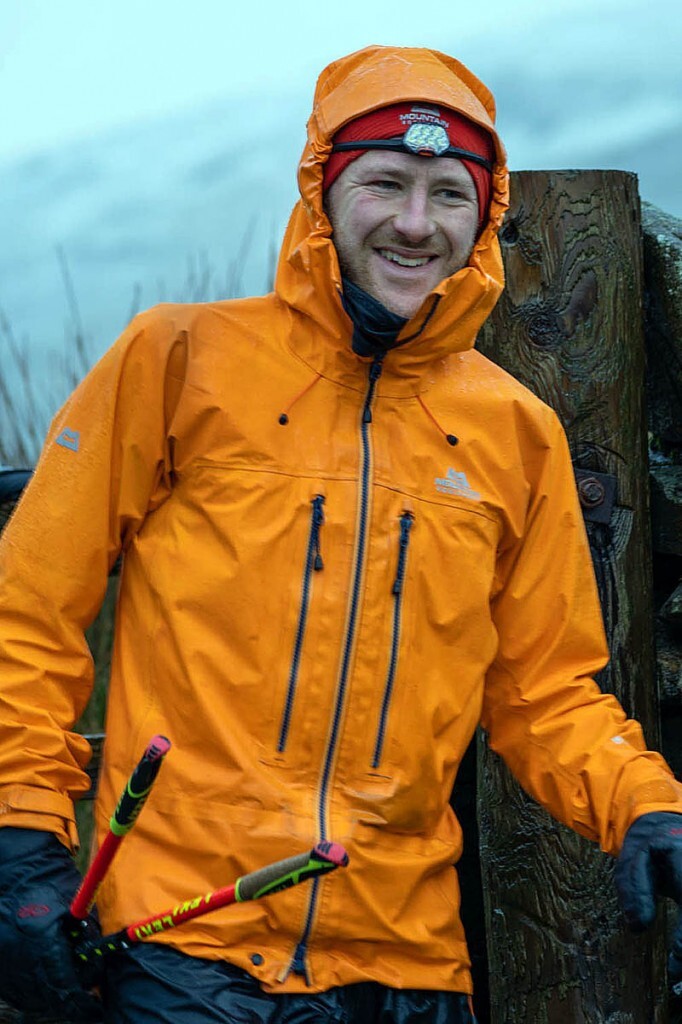
Traversing all the Wainwright’s in one consecutive run involves 523 kilometers of distance and ascending 36,000 meters. Since Alfred Wainwright’s Pictorial Guide to Lakeland Fells was published in the 1950s, summiting these peaks has become a goal for many British ultrarunners.
The rules of the Wainwrights record are simple: runners must start and finish in the town of Keswick, a town located in the national park, and they can take any route they like, as long as they summit each of the 214 peaks.
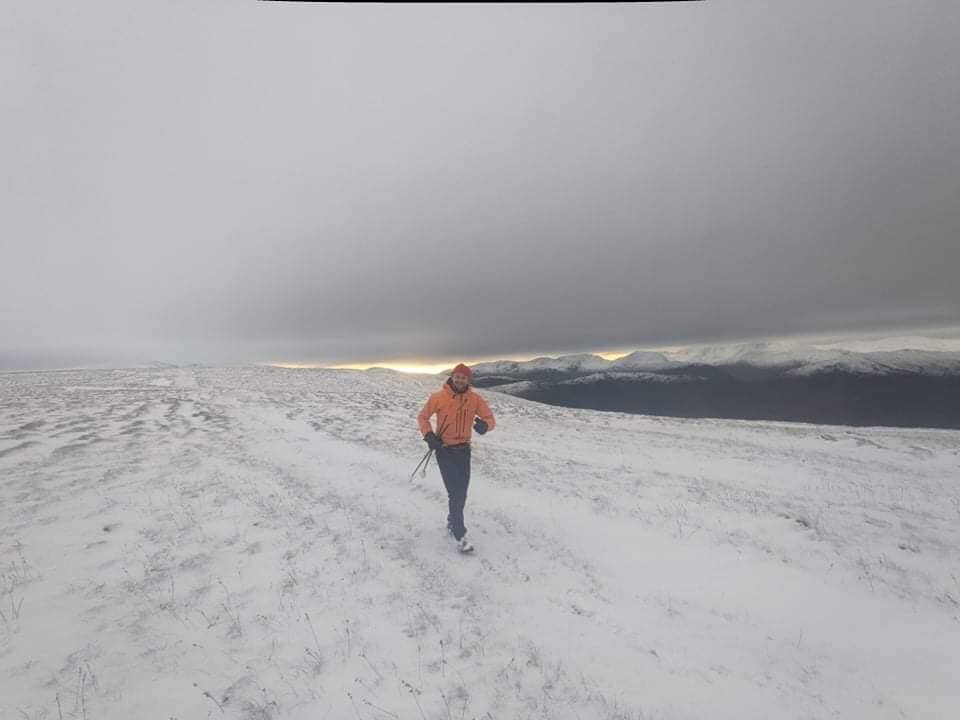
What made Gibson’s journey unique was the wind, rain, snow and ice he had to endure. A wicked snowstorm hit the coastal mountain range on the sixth day of his journey, resulting in him descending back to the valley. As the storm blasted through, Gibson and his crew resumed, trekking through a foot of snow. As Gibson reached the last peak, he celebrated with a beer before returning to Keswick to finish.
When he finished in Keswick, the previous Wainwright record-holders Steve Birkenshaw and Paul Tierney, who both ran this challenge in the summer, were there to greet him in the village. Gibson was supported by over 60 friends and local businesses that offered hospitality to him on the route.
(12/11/2021) ⚡AMPby Marley Dickinson
Do You Burn More Calories In the Cold?
Do we burn more or less energy running in the cold versus running in the heat, and should there be any relative change to our calorie intake?
If your body temperature drops during a run, you burn more calories as your body works to stay warm. However, after you warm up, you probably aren't burning any more calories than usual. Your energy needs don't change substantially unless you're extra-cold, which likely means you have underdressed.
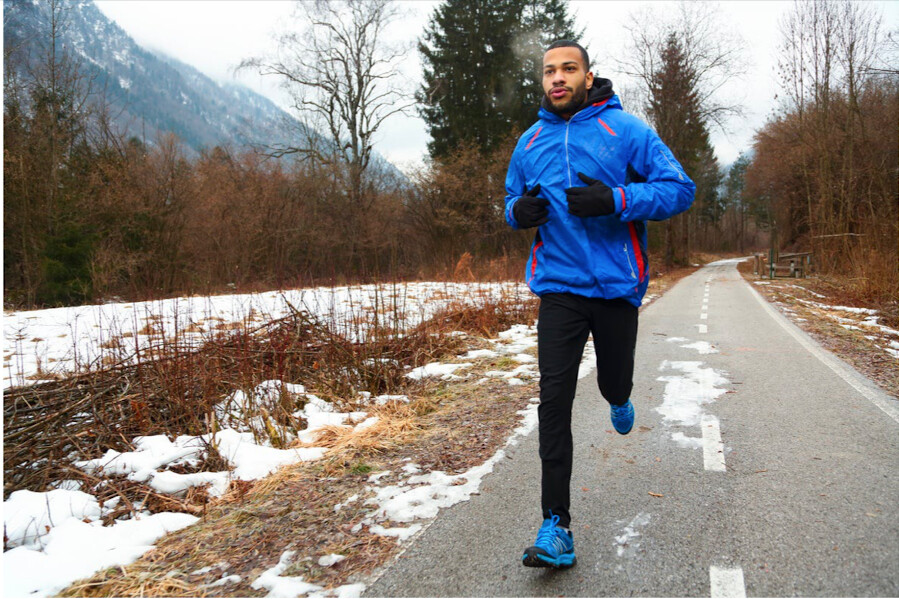

A 1991 article from the journal Sports Medicine titled "The Physiology of Exercising in the Cold" indicates that if you don't dress warmly enough you'll burn more carbohydrates relative to fat to stay warm.
All things being equal, you will likely burn a few more calories in cold weather. However, mid-run energy needs don't change appreciably. Think about a hypothetical runner doing a long run at aerobic threshold (where fat and carbohydrate use is around even); the runner starts with 1,000 calories of stored carbohydrates and burns 400 calories of carbohydrates per hour (along with a similar amount of fat). Even if they now burn 500 calories of carbohydrates in winter, they still have a couple hours of stored energy. Plus, most people can only absorb 200 to 400 calories per hour during activity, so taking in more won't make a huge difference.
As always, the golden rules of nutrition apply: find what works for your body, let hunger be your guide and maintain a general understanding of what is healthy for you based on your goals. Perhaps most importantly, remember that you still sweat in cold weather, especially if you dress well. Just as in hot temperatures, hydration is usually more important than fuel intake. Add some sports drink to the mix, and you'll probably be made in the shade (or in the cold).
(12/11/2021) ⚡AMPby Trail Runner Magazine
Keep Running Strong Through the Holidays With These 8 Tips
If you are feeling blah now that it’s colder and darker, use these tips to stay motivated.
No other time of year does fitting in a workout feel as daunting as trying to run during the holiday season. For many people, your routine is disrupted, it’s hard to stay on schedule, and it’s easy to think it’s just better to just bag it until after the first of the year and start fresh?


Running during the holidays can be challenging, yes, but it is possible. If you were to throw in the towel from Thanksgiving to the New Year, you could lose as much as one-third of your current fitness level, which would mean starting the conditioning process almost all over again when you begin fully training. And keep in mind that the holidays often mean more stress, too, so we actually need our running outlet more than ever this time of year.
We suggest developing some flexible training tactics that can help keep you on track any time of the year when things get hectic. Work, travel, family, and other obligations can affect our running any time, so it’s important for you to incorporate alternative training strategies for staying on the road even when things get crazy.
Here are nine of our best tips for running during the holidays and beyond.
Plan your runs for the week in advance
Look at your schedule, see what works, and write your runs in your planner. Having them written down makes it much more likely to happen. Heading into a new year might also be a good time to invest in a new journal for all your goals.
Focus on maintaining your current fitness level
Rather than trying to improve your fitness during a busy or stressful time of the year, just make it a goal to keep your baseline of fitness. Running three days a week for 20 to 30 minutes will maintain your current fitness level and help relieve stress until you are able to resume a heavier training load.
Another great option is to try keeping a streak going, like the Runner’s World Holiday #RWRunStreak from Thanksgiving to New Year’s Day, where all you have to do is put in at least a mile a day.
Adapt your training to fit your schedule
If you are struggling to run during the holidays, shorten the length or duration of your runs, alter the intensity, or change the frequency of your runs when necessary. When there is no time for a long run, speed up the pace for a short run. Or change up frequency when necessary, like run three to four times a week rather than five or six times a week, or, vice versa.
Go with the flow
Runners tend to love routine, but this can sometimes be a stumbling block to training during hectic times of the year. Try running at different times of the day and in different places to help running better fit into your day.
Find a race
Between Thanksgiving, Christmas, and the New Year, there are many races of all distances available. (You can find a lot with the .) When traveling for work or the holidays, a race is a great way to get a run in, see the area, and participate in holiday festivities and check out the local running scene. You can also use to time to choose an event to target for spring. Having a goal race on the calendar can help with motivation to run consistently through the holidays and other busy times of the year.
Make your run social
Meet up with your friends for a run before heading to happy hour. And during the holidays, you could plan a run through neighborhoods with festive lights and decorations so you know there is something to see along the way.
Set a different goal
Target something completely different, like a trail race, an obstacle course race, or a new distance to inspire you and help keep you out there when life gets challenging.
Team up
If you’re looking to add structure, join a training program, a running club, or try an online program to help provide you with structure and a plan to follow.
(12/11/2021) ⚡AMPby Runner’s World
You Should Be Mindful of These 5 Things When Coming Back From a Winter Run
Establishing a short post-run routine can be the small detail that helps you recover faster and stay injury-free.
You are at the two-week mark of the Winter #RWRunStreak, and by now, you may already have settled into a rhythm that gets you going day after day. If you’re running in cold weather, you already know how to warm up, stay warm, and motivated. But what you do for winding back down after a run can be the secret sauce to staying on track with your streak—or whatever you’re training for right now.

If you haven’t yet adopted a self-care ritual, developing a cooldown routine is equally as important as what you do before or during your run. So, dedicating time to properly cool down by stretching, rehydrating, and massaging your sore muscles is a great way to make sure you’re ready for your next run—no matter how long or short it is.
Here is a short list of things to be mindful of when coming back from your next run.
Don’t run door-to-door
As much as you might want to plop down onto a couch, taking a few minutes to walk after a run is a must. For example, if you do a 5-mile run, Janet Hamilton C.S.C.S, and owner of Run Strong in Atlanta tells Runner’s World, “You might walk for two and a half to five minutes after your run—just strolling around to get your body back down to its prerun metabolism—to get your heart rate back down and get your respiration rate down.”
Allowing your body to sync back to this normal resting rate, smoothly and naturally, will be better for your overall recovery and cardio health.
“There are a lot of benefits of the body coming back to homeostasis—back to its starting baseline—that you don’t want to rush through,” Theresa Toczylowski, physical therapist and Run Clinic supervisor at MossRehab near Philadelphia, tells Runner’s World.
Change your clothes
If you’re coming inside from running in the cold, it’s likely that you’re sweating under all those layers, even if you don’t feel it initially. Depending on how long you’ve been out, you might want to rush inside to change your clothes and warm up as quickly as possible.
“When I run in the cold my favorite thing to do is to come in and take a shower, get a hot beverage—hot chocolate, hot cider, hot coffee—something warm in my body,” Hamilton says.
Hydrate and refuel
“One thing to remember is we still sweat in the winter, especially if we have overdressed or completed a tough workout. Rehydrating and replacing our electrolytes remain important throughout the winter months,” says Lisa Braden, a registered dietitian who works with endurance runners.
For longer runs, Braden suggests refueling and hydrating within the first hour to help you recover faster. “It doesn’t take much, but a little goes a long way. Ideally, 200 to 300 calories at a 3:1 carb to protein ratio,” for a snack she says. Also, whether you run one mile or five, getting in the proper nutrients this time of year will be helpful in fight of the cold and flu. “Sickness spikes in the winter, so staying healthy with nutrient-rich foods can keep you from catching germs and disrupting your training,” Braden said.
Hit the shower
How hot or cold you take your shower after a run can impact your recovery. Experts have long debated over the benefits and disadvantages of both hot and cold-water therapy. A 2018 meta-analysis published in the Frontiers in Physiology journal highlighted cold water immersion as an effective way to reduce inflammation. While there aren’t many studies that highlight hot water as a recovery technique for runners, Hamilton says the runners she works with tell her they prefer soaking in cool water rather than hot because they feel like they bounced back quicker.
“I would say stay somewhere in the middle,” Toczylowski says, “not too hot and not too cold, either one is going to stress your system.” However, if you still want to take a quick cold bath—five or 10 minutes—to help your muscles recover, you can. Hamilton suggested warming up a towel, grabbing a hot drink, and jumping right in. To make the experience more tolerable, “climb in, and wrap that hot towel around your shoulders.”
Don’t forget to stretch and massage
Your postrun stretch routine is going to depend on how many miles you logged. For shorter distances—at least a mile for run streak—Hamilton says stretching immediately after is the way to go. But if you’re running for longer distances, she says it’s better to wait. “While it’s always advisable to stretch while you are warm because that’s a little easier on your muscles, stretching when you’re fatigued puts you at a little bit of a disadvantage,” Hamilton says. “Your muscle can’t sustain the strain as easily as it could if it had a chance to recover.” So for longer runs like 15 miles or more Hamilton suggests waiting one to two hours before stretching.
If you’re feeling sore, thank your muscles for all their hard work with a self-massage. A massage gun or “the foam roller may help with some blood flow, it may feel pretty good, but don’t go in there and beat it up,” Hamilton says.
(12/11/2021) ⚡AMPby Runner’s World
Al Franken, West Coast sports promoter, dies at 96
Al Franken, who promoted track and field, golf and tennis on the West Coast during a long career in sports, died Wednesday. He was 96.
He died at his home in the Westwood section of Los Angeles from acute myeloid leukemia that was discovered recently, according to his son Don.
Franken co-founded the Los Angeles Invitational track and field meet held at the old Los Angeles Sports Arena in 1960. It was held indoors in February and televised nationally, serving as an elite-level stop between the Millrose Games in New York and the U.S. indoor national championships. It was known as the Sunkist Invitational until 1995 because of its sponsor Sunkist Growers. It continued until 2003, when it was canceled for lack of sponsorship.
Franken hustled to recruit stars and sponsors. He stirred up interest by offering $500,000 to any athlete who broke a world record.
The meet also featured top high school runners. More than 100 Olympic gold medalists competed during its existence.
Franken also coordinated indoor meets in San Francisco and San Diego. He helped develop the Kinney High School Cross Country Championships into a major event
He was the Los Angeles Lakers’ first public relations director when the team moved west from Minneapolis.
Franken handled PR for the Los Angeles Open golf tournament for 22 years, as well as assignments for the men’s and women’s pro tennis tours.
He founded Franken Enterprises in 1952 and World Class Sports in 1982 to promote and market track and field.
Franken graduated from UCLA, where he was sports editor of the Daily Bruin newspaper. He later worked as a sports writer at the Los Angeles Mirror.
Besides his son, he is survived by daughter Jill Franken. He is not related to the former U.S. senator from Minnesota who shares his name.
(12/10/2021) ⚡AMPEliud Kipchoge would like to become first athlete to three-peat in the Olympic marathon
World Athletics sat down with the marathon world record holder and double Olympic marathon champion Eliud Kipchoge, to reflect on his great career. Kipchoge cited his previous Abbott World Major Marathon wins, his world record and running the first sub-two-hour marathon (unofficially) as things he joyfully looks back on.
When asked about his future goals, he said he wants to become the first athlete ever to win three straight Olympic gold medals in the marathon.
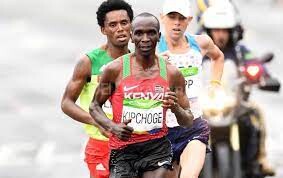
“My goal going into the 2020 games was to win back-to-back Olympic golds, and I’d like to win the third one,” Kipchoge said to World Athletics. He also mentioned other goals on his running bucket list, such as running all six Abbott World Marathon Majors and lowering his half marathon personal best.
If Kipchoge defends his title at the 2024 Paris Olympics, he would become the first-ever athlete to three-peat. Currently, he is in an exclusive club of three, the other two athletes being Abebe Bikila of Ethiopia (who won gold at both the 1960 and 1964 Games) and Waldemar Cierpinski of East Germany (who won gold at the 1976 and 1980 games, but it’s been highly speculated that he was part of East Germany’s state-sponsored doping program during the 1970s).
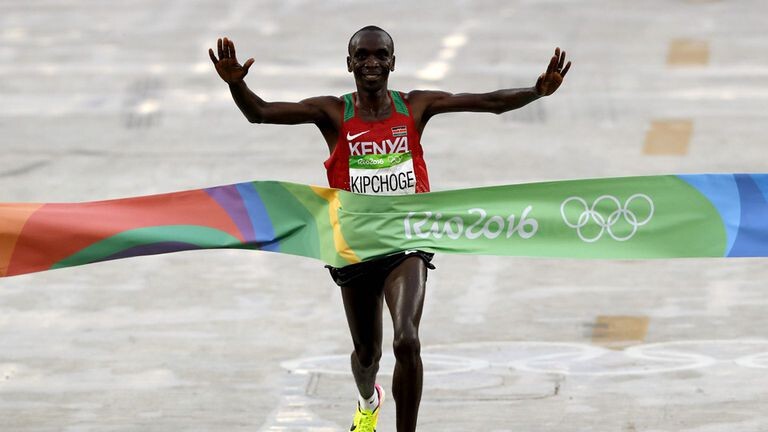
When he was asked about giving the world record another shot, Kipchoge said, “There are many people who could break my marathon world record. I think Geoffrey Kamworor will one day break the world record. Joshua Cheptegei will also make his mark in the marathon, and Kenenisa Bekele is still there.”
As his 2021 season comes to an end, Kipchoge isn’t sure of his 2022 race plans. “I always strive to improve my fitness, and I approach it like education. For example, if you have an exam in two years, you have to plan carefully for it to have success.”
(12/10/2021) ⚡AMPby Marley Dickinson
Paris 2024 Olympic Games
For this historic event, the City of Light is thinking big! Visitors will be able to watch events at top sporting venues in Paris and the Paris region, as well as at emblematic monuments in the capital visited by several millions of tourists each year. The promise of exceptional moments to experience in an exceptional setting! A great way to...
more...Strong field will be competing in 2022 Hardrock 100, with a lottery narrows field to 145
The Hardrock 100 ultramarathon held its lottery on Saturday to select runners to fill out its field of 145.
The race had 1,916 runners apply from 46 states and 50 foreign countries this year, which is slightly down from the roughly 2,200 applicants in 2019. The ages of the applicants ranged from 19 to 73, and the largest group was 40 to 49 years old, or 43% of the total.
New this year is a gender-equity provision, guaranteeing the percentage of women in the field at least equals the percentage of women who applied. So, since 345 women applied, representing 18% , 27 women were selected to participate.
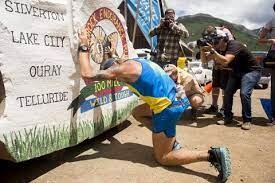
“I thought the gender equity worked out well,” said race director Dale Garland. “The lottery is designed for gender equity and also to make it accessible to new runners and people who have been here before. Both are important.”
Because of COVID-19, international runners who were chosen for the previous year’s event but were unable to travel in 2021 gained an automatic entry for the 2022 race, which includes 16 men and two women.
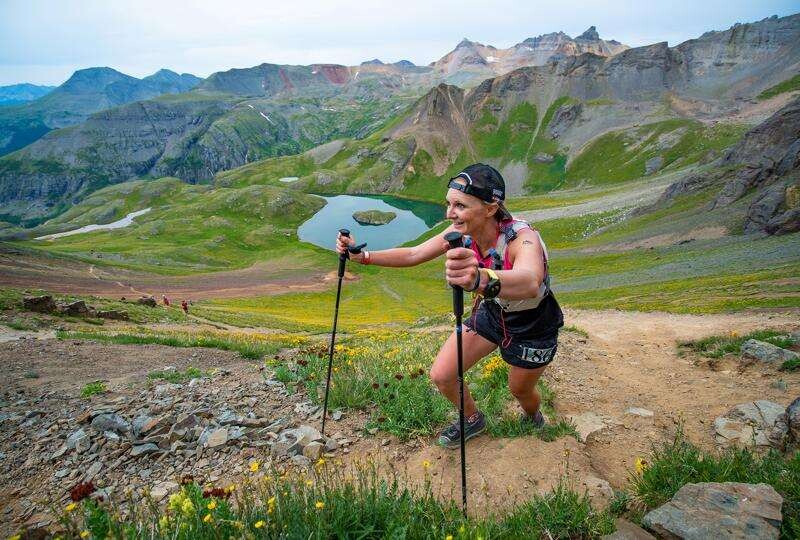
Automatic entry goes to last year’s winners – Sabrina Stanley, a two-time champ, and Francois D’Haene, who set a course record last year. D’Haene also won the Ultra Trail du Mont Blanc last year in Chamonix, France.
Garland also got to choose six entries, which are kept secret. He said, however, that his picks this year are elite runners, some runners who have provided service for the event and two with good storylines.
After that, 119 runners were selected in the lottery. To be eligible for the lottery, the athletes had to complete one of 30 qualifiers around the world that are all at least 100 miles long.
“I’m really happy with it,” Garland said this year’s field of athletes. “There’s some interesting competitive story lines, some competitive longevity story lines, and we’re seeing some people who have run in 10 or 15 Hardrocks.
Killian Jornet, a four-time Hardrock champion, will race again this year. Aurélien Dunand-Pallaz, who finished second at the Ultra-Trail du Mont-Blanc last year, also is expected to compete for the title.
In the women’s race, Courtney Dauwalter, an Ultra Trail du Mont Blanc winner in 2019 and 2021, will challenge Stanley. “It will be an interesting dynamic to have those two run,” Garland said.
Darcy Piceu, an eight-time Hardrock finisher with three wins, also will be in contention, as will Meghan Hicks, a top-three finisher from last year who lives in Silverton, like Stanley.
Neal Matosky of Durango and Durango High School graduate Dakota Jones also will compete.
“I wouldn’t be surprised to see (Jones) in the top 10,” Garland said.
The race takes place July 15-17. It will start at 6 a.m. on July 15, and the runners will have 48 hours to complete the race. It will start at Silverton and go to Telluride first this year, then Ouray, close to Lake City and finish in Silverton. The first race was held in 1992 and this will be the 27th running of the event. Snow and fires caused a few to be canceled.
Volunteers are needed for the event. For information, visit hardrock100.com.
(12/10/2021) ⚡AMPby Cody Olivas
Hardrock 100
100-mile run with 33,050 feet of climb and 33,050 feet of descent for a total elevation change of 66,100 feet with an average elevation of 11,186 feet - low point 7,680 feet (Ouray) and high point 14,048 feet (Handies Peak). The run starts and ends in Silverton, Colorado and travels through the towns of Telluride, Ouray, and the ghost town...
more...Join us in central London next year!
While yesterday’s news about the move to Plan B wasn’t what any of us wanted to hear, we’re staying positive and looking ahead to next spring and the Vitality London 10,000.
As you’ve told us you’re interested in the event, we bring you good news: it will be back on its central London course on Bank Holiday Monday 2 May 2022 – and entries are open now!
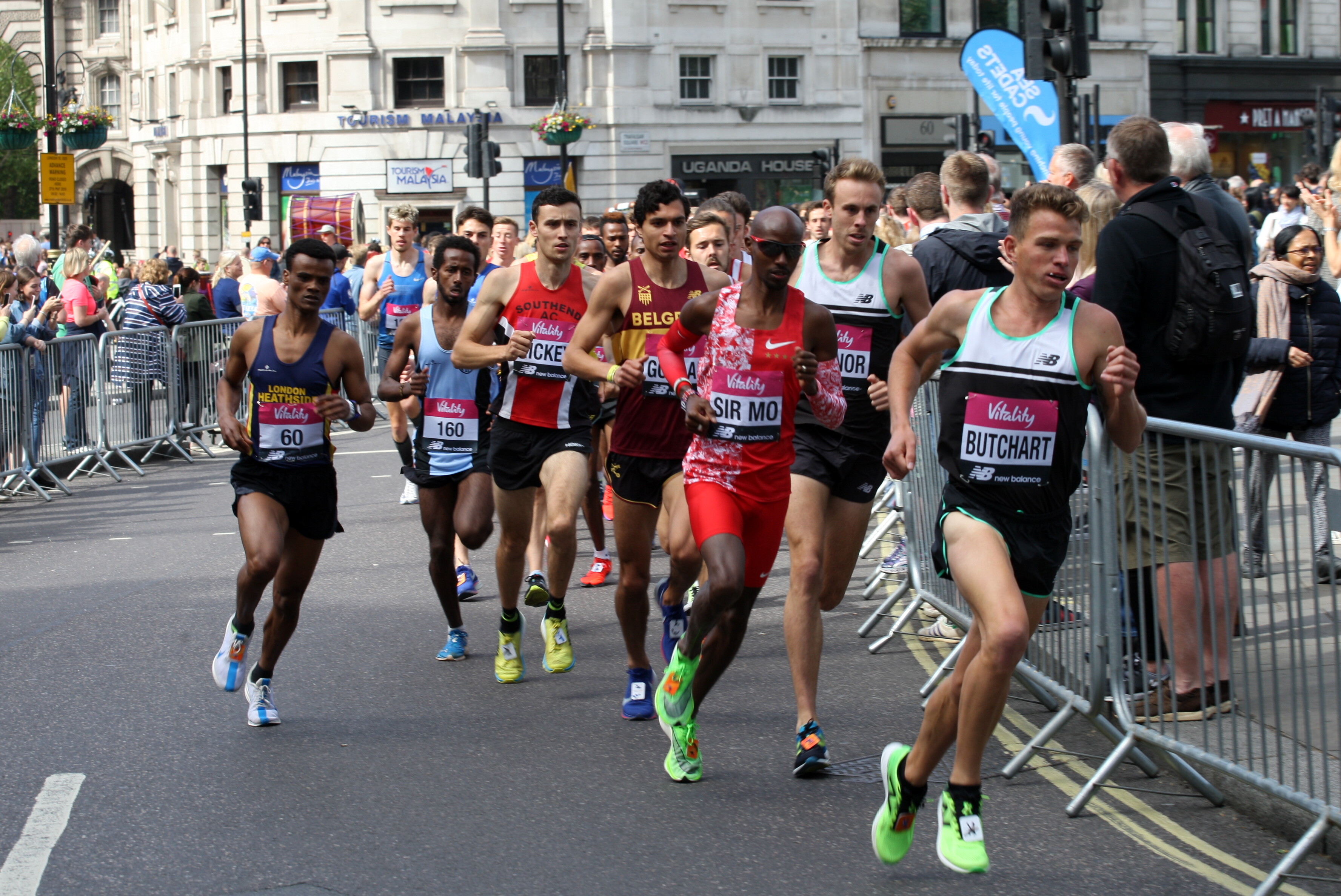
It’s your chance to set yourself a goal that’ll help you keep moving during the dark winter months while also enjoying the mental and physical health benefits of exercise.
It’s been more than 1,000 days since we were last able to hold the event in the capital and we can’t wait to return.
There’s nothing quite like the feeling of running past some of the most famous sights in the city – including St Paul’s and the Houses of Parliament – surrounded by people with the same aim as you: to get to the Finish Line (and have fun of course)!
So enter now and begin the new year on a high, with a fun and achievable goal to aim for and something to look forward to in the spring.
See you on the Start Line!
(12/10/2021) ⚡AMPVitality London 10,000
The Vitality London 10,000 takes you past many landmark sites, including the London Eye, Buckingham Palace and the Bank of England – so you even get to do a bit of sightseeing along the way! You will run alongside elite runners and have coverage from the BBC, making this 10km one of the highest in profile of its kind....
more...How to hill train without a hill, you can still prepare for a hilly race, even if you live somewhere flat
We talk a lot about the benefits of hill running, but if you live in a flat area, what are you supposed to do? Not every neighbourhood has its own version of heartbreak hill, but that doesn’t mean runners who live there can’t still simulate the benefits of hill training.
If you’ve got a hilly race coming up on the calendar and nowhere to train for it, use these alternatives to be ready for it.

You may not have any big hills nearby, but if you have a good set of stairs at your disposal, they make an excellent alternative. This one’s easy if you live in an apartment building, but if you have a stadium nearby with bleachers, that works too. Depending on the size of the staircase, you can simply run to the top, jog (carefully) back down and repeat, but if the staircase is particularly long, you could break it up however you like (for example: 2 minutes hard, 1 minute easy).
One of the big benefits of hill training is it improves your strength and power so you can run faster and stronger on the flats. You can make similar gains in the gym as well. Mimic hill training indoors with explosive movements like box jumps, jump lunges and jump squats, and improve your ability to handle the pounding associated with downhill running by doing lots of eccentric contractions, where you’re slowing down the movement while you lengthen the muscle (as you lower yourself into a squat, as you’re jumping back down off of the box, etc.).

Add some surges to your run
Olympic gold medal winner Frank Shorter once said “hills are speedwork in disguise,” so if you don’t have a hill nearby, try adding some one-minute or 30-second surges every three or four minutes during a tempo run. This forces you to change up your gait in a similar way as if you were tackling a hill in the middle of your run.
Hop on the ‘mill
Love it or hate it, the treadmill is an excellent tool to train hills when you don’t have a hill nearby. All you have to do is crank up the incline, and you’ve got a great hill workout without going anywhere.
(12/10/2021) ⚡AMPby Brittany Hambleton
The Bank of America Chicago Marathon Announces Field of 40K Runners for 2022
The Bank of America Chicago Marathon on Thursday announced its field for the 2022 race, bringing back 40,000 runners to Chicago streets after hosting a smaller field in 2021.
Runners who entered the non-guaranteed entry drawing for the 2022 race were notified of their status Thursday.
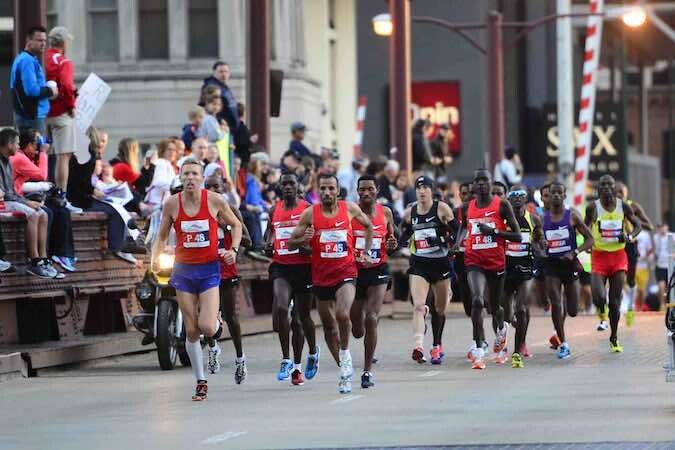
Guaranteed runners already in the lineup include Chicago Marathon and Shamrock Shuffle legacy finishers, time qualifiers, international tour group participants, charity runners and those who deferred or cancelled entries from a previous event.
"Today, we celebrate the commitment made by our newest field of competitors, alongside the continued dedication and support of our volunteers, spectators and community members,” Marathon Race Director Carey Pinkowski said in a statement. “The Bank of America Chicago Marathon has always been the people’s race. They helped to create the tradition and they will be a part of the comeback as we embark on the next chapter in the event’s history.”
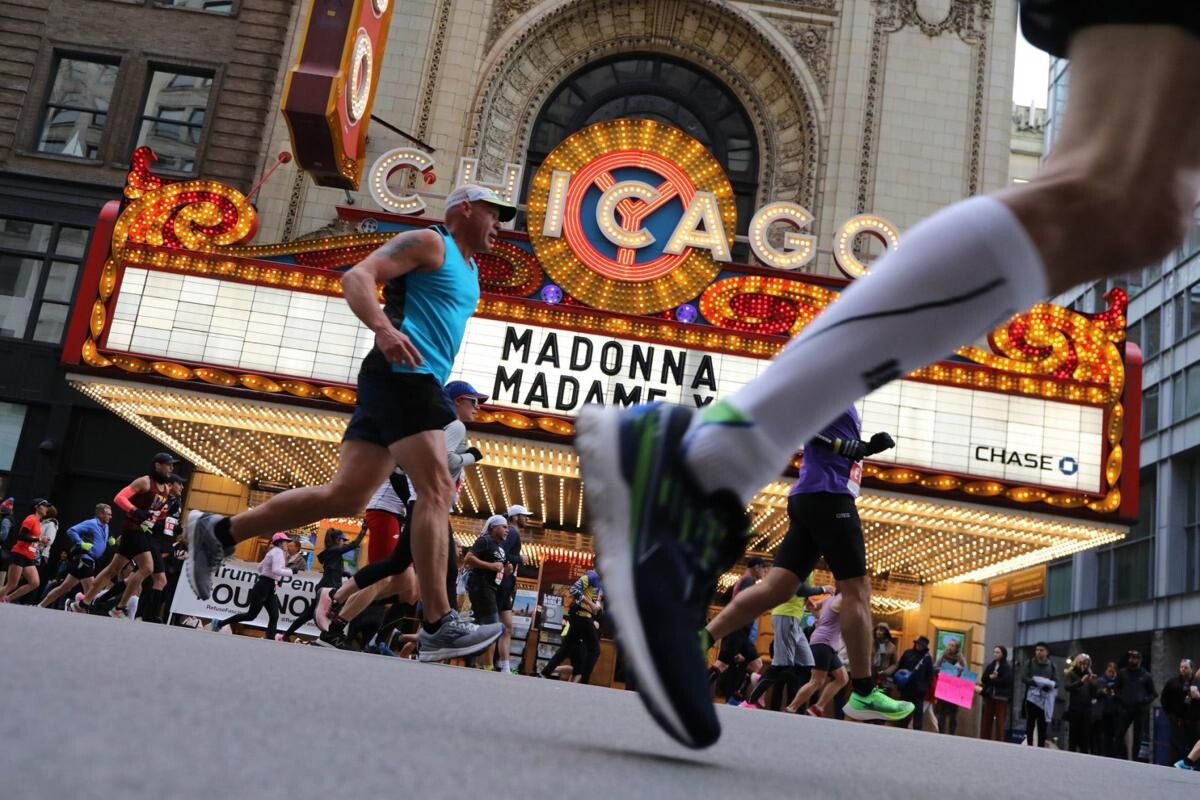
But it won't be the last chance for runners to enter.
Organizers noted that those still hoping to participate in next year's event will be able to join an official charity team, with more than 170 nonprofit organizations currently raising funds in 10 different categories. Runners who register with one of those charities will need to raise a minimum of $1,750.
So far, the race plans to nearly double the number of runners from last year's event, which saw 26,109 participants cross the finish line. Organizers said health and safety plans will be released in the months before the race.
(12/10/2021) ⚡AMPBank of America Chicago
Running the Bank of America Chicago Marathon is the pinnacle of achievement for elite athletes and everyday runners alike. On race day, runners from all 50 states and more than 100 countries will set out to accomplish a personal dream by reaching the finish line in Grant Park. The Bank of America Chicago Marathon is known for its flat and...
more...Lawrence Cherono receives State Award
Recently crowned Valencia Marathon champion Lawrence Cherono has urged young athletes to work hard and be patient, and success will come their way.
Speaking in Kabarnet, Baringo County while receiving his Head of State Commendation through the County Commissioner Henry Wafula, the 2020 Tokyo Games Olympiad, said he trained for many years before breaking into the limelight.
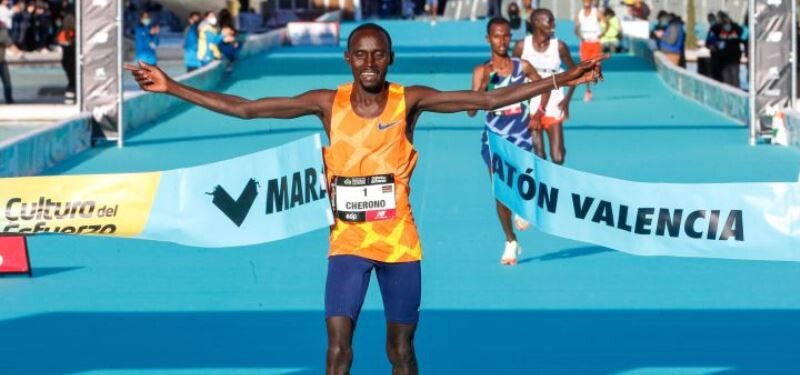
“I want to thank President Uhuru Kenyatta for the award I have received. I also want to encourage upcoming athletes to continue training hard because in athletics, one might take long before excelling," said Cherono.
“In my case, it took me five years to get on the podium and 10 years to be in the national team,” the 33-year-old runner said.
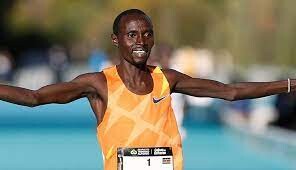
Cherono donned the Kenyan colours for the first time at the Tokyo 2020 Olympic Games where he finished fourth in the men’s marathon race in Sapporo.
He was one of the athletes honoured by President Kenyatta on Mashujaa Day.
Cherono, who trains under the Rosa Associati Management, is currently ranked as the eighth fastest marathoner of all time in the world.
He has won a couple of major marathons including Chicago and Boston and was recently crowned the Valencia Marathon champion.
The Kaptagat-based athlete on Sunday timed 2 hours, 05 minutes and 12 seconds ahead of Ethiopia’s Chalu Deso who was second in 2:05:16 while Kenya’s Philemon Kacheran finished third place in 2:05:19.
The women category saw Nancy Jelagat cross the line in 2:19:31 ahead of Ethiopians Woldu Etagegne (2:20:16) and Degefa Beyenu (2:23:04) who came in second and third respectively.
Cherono, who won the 2019 Boston and Chicago marathons, said that he will be taking the Christmas break as he waits for his manager to decide on which races he will feature in next year.
Wafula asked upcoming athletes to emulate Cherono by working hard and focusing on their careers for better results.
“Cherono is a good example to youth who are training in this region and they should follow his example because nothing comes easy,” said Wafula.
(12/09/2021) ⚡AMPby Bernard Rotich
VALENCIA TRINIDAD ALFONSO
The Trinidad Alfonso EDP Valencia Marathon is held annually in the historic city of Valencia which, with its entirely flat circuit and perfect November temperature, averaging between 12-17 degrees, represents the ideal setting for hosting such a long-distance sporting challenge. This, coupled with the most incomparable of settings, makes the Valencia Marathon, Valencia, one of the most important events in...
more...Honolulu Marathon is ready to host 14,000 runners this weekend
Rain or shine, the Honolulu Marathon is on at 5 a.m. sharp Sunday with no capacity limits.
Dr. Jim Barahal, chief executive officer of the Honolulu Marathon Association, has dealt with more than a year of much uncertainty due to the COVID-19 pandemic — but took a leap of faith that the race could be staged this month.
Despite the detection of the omicron variant in Hawaii, plus financial loss due to a drastic drop in runners from Japan, Barahal is determined to move ahead, pointing to the overall event as a symbol of triumph over adversity.
Barahal said he feels confident that outdoor activities are safe, based on guidelines from the U.S. Centers for Disease Control and Prevention, and that the marathon, which has about 14,000 registered participants across three events over the weekend — down from about 35,000 in 2019 — also will be safe.
“We’re excited,” he said. “We think a lot of people in the community are going to celebrate with us. When the gun goes off and fireworks go up in the sky, we’re going to send a signal that Hawaii is back.”
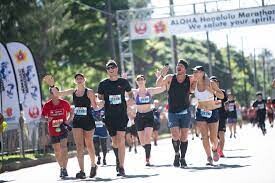
Dozens of marathons around the world have been staged this year, he noted, including major races in Boston, London and New York City. Last year’s Honolulu Marathon, along with scores of other races, was staged virtually, with participants submitting images from completed runs.
Some 10,000 participants are signed up for the 26.2-mile race, which starts on Ala Moana Boulevard and ends at Kapiolani Park. Most are local runners, while only a few hundred will be coming in from Japan. The rest are signed up for the Kalakaua Merrie Mile on Saturday and the Start to Park 10K on Sunday.
Historically, according to Barahal, half of early registrants do not show up, so organizers are expecting about 7,000 participants. “This is going to be primarily a local event,” he said, adding that he believes it will be the largest since the pandemic started.
There is going to be a financial hit, he admitted, with at least an 80% decline in revenue. The marathon gets no funding from the city, state or visitor industry.
There was no significant boost in registrations after Hawaii opened up to international travelers last month, according to Barahal, who did not expect one with the short window of time. There will be about 400 runners from Japan this year compared to 17,000 in past years. Mizuno and Japan Airlines have stayed on as sponsors.
“We’re ready to go. We have budgeted the event, we have cut where we need to, but nothing that compromises safety,” he said, adding, “To not do it two years in a row would threaten the existence of it.”
The marathon’s largest fixed costs, which include securing the course with special duty officers, barricades and the use of timing chips, will still be covered, he said, but some bells and whistles such as the video screen and photo bridge at the finish line have been dropped.
There will still be malasadas for finishers, but no live entertainment along the route or at Kapiolani Park.
The marathon is now open to fully vaccinated participants and those who show proof of a negative COVID-19 test taken within 48 hours of the event. Barahal estimates about 90% of registered runners are fully vaccinated.
Participants older than age 12 need to bring photo ID and proof of COVID-19 vaccination or negative test when picking up race packets at the Honolulu Marathon Expo at the Hawai‘i Convention Center on Friday and Saturday.
Masks will not be required while running, and under the most recent easing of restrictions, staggered starts are no longer limited to 200 participants at a time. Runners will be separated based on projected times, but the goal is to get as many on the course as quickly as possible, Barahal said.
(12/09/2021) ⚡AMPby Nina Wu
Honolulu Marathon
The Honolulu Marathon’s scenic course includes spectacular ocean views alongside world-famous Waikiki Beach, and Diamond Head and Koko Head volcanic craters.The terrain is level except for short uphill grades around Diamond Head. ...
more...The easiest gifts for runners this Christmas
If there is a runner in your family who hasn’t sent you their Christmas list yet, don’t worry, we have you covered. You shouldn’t stress about buying Christmas gifts for runners, as they are the easiest demographic to shop for. Here are a few ideas.
Stance performance socks
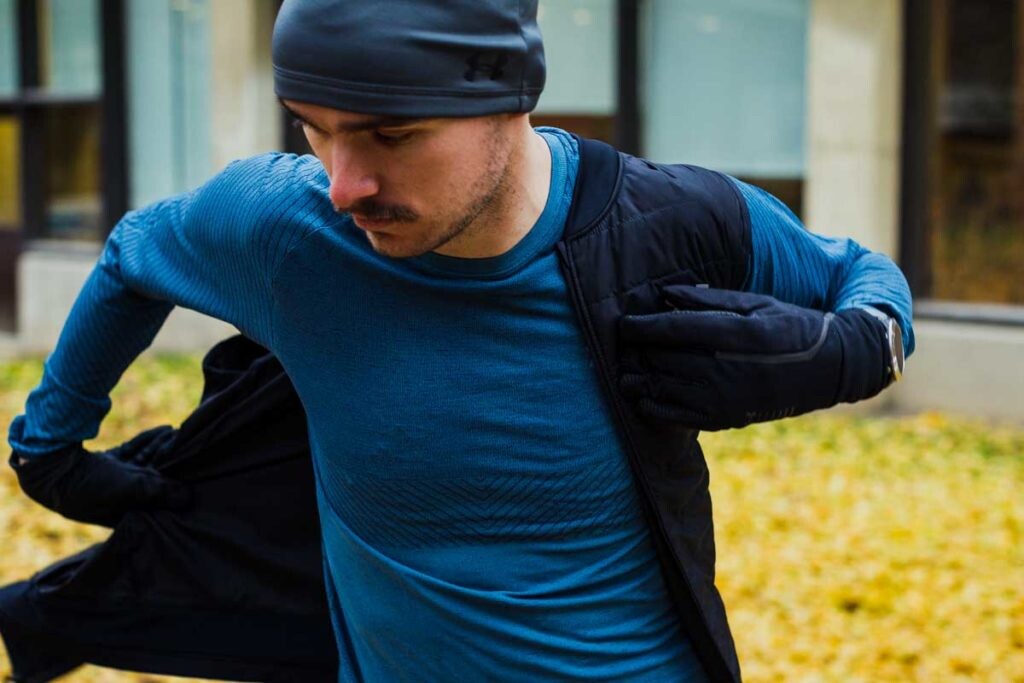
Runners can never have too many pairs of socks. Stance socks are made of a performance polyester called ‘FEEL360,’ a sewn fibre that reacts to your body’s temperature for high-performance comfort. They also feature moisture-wicking technologies guaranteed to keep you feeling fresh and dry in the summer heat and warm in the winter. A bonus is that these socks can be purchased in unique colours and designs, such as, Wu-Tang Clan, Forrest Gump and Bob Marley styles. Stance socks range from $25 to $45 per pair and can be purchased online at MEC.
A nice pair of running gloves
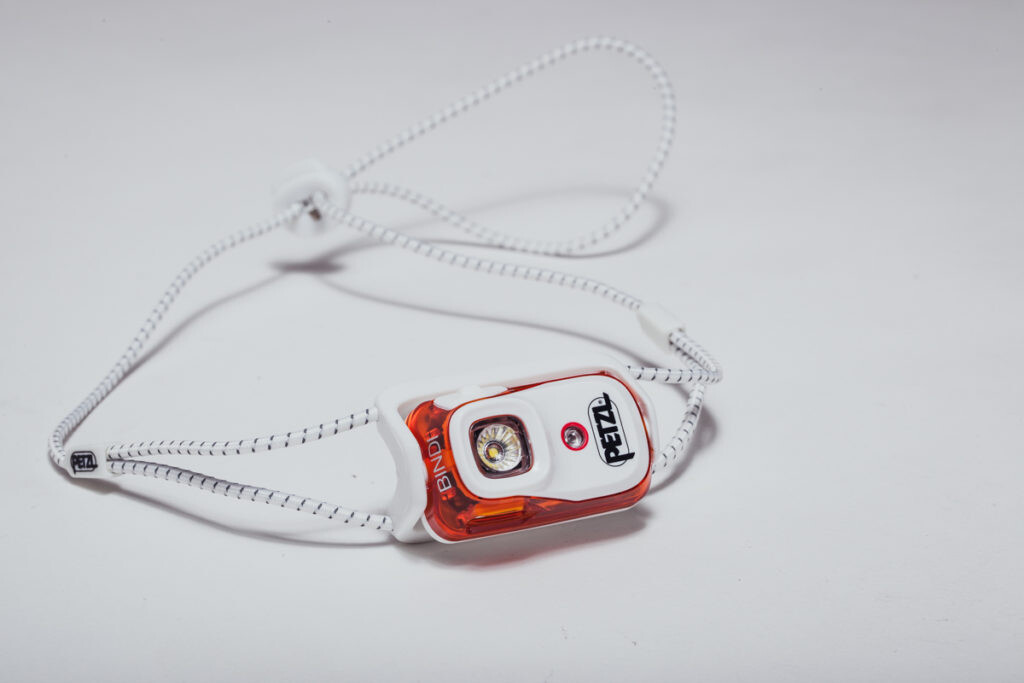
A runner truly appreciates a nice pair of running gloves to get them through the winter. The run liner gloves from Under Armour are a great base layer for your hands. They’re form-fitting, light and stretchy, with the right warmth when temperatures are below zero. These gloves have water and wind-resistant panelling on the front and a plush interior for the right amount of warmth. They’re also touchscreen-friendly, allowing you to use your phone without having to take your gloves off.
Smartwool merino men’s sport boxer brief
Men, it’s time to upgrade your running underwear this Christmas. These performance-style briefs are designed to help you operate in comfort regardless of the conditions. They feature a double front panelling designed to provide extra support down low, and sewn with a flatlock seam to eliminate chafing. These briefs are made to help keep you cool and dry while you’re out for a long winter run. Smartwool boxer briefs can be purchased online at MEC.
Petzl Bindi headlamp (200 lumens)
Light up the night sky with the Bindi headlamp from Petzl. This headlamp is ultra-compact and ideal for training in everyday urban environments. The headlamp has a range of 40 metres and is convenient to charge via a micro USB port. The Bindi headlamp is minimalist, yet functional, combining style and performance. The headlamp retails at MEC for $59.95.
Hydration is important all year for runners. They need an electrolyte mix to replace the nutrients lost in sweat during exercise. Skratch sports mix has a light, easy-drinking taste. The Skratch powder is non-GMO, non-dairy and gluten-free, so it will be easy on the stomach during or after a run. You can purchase Skratch online or at your local independent running retailer or MEC, prices ranging from $19.99 to $69.99
(12/09/2021) ⚡AMPby Marley Dickinson
Toronto’s Bernard Abarquez completes 42 marathons in 42 weeks
Abarquez began the challenge on his 42nd birthday in February 2021 and averaged 3:17 marathons for 42 straight weeks.
Forty-two weeks ago, Toronto’s Bernard Abarquez began the remarkable challenge of running 42 marathons in 42 weeks to celebrate his 42nd birthday. On Sunday, Dec. 5, Abarquez completed his challenge in the heart of Toronto, running 17 2.5-kilometer loops around Exhibition Place, joined by many members of the Toronto running community.
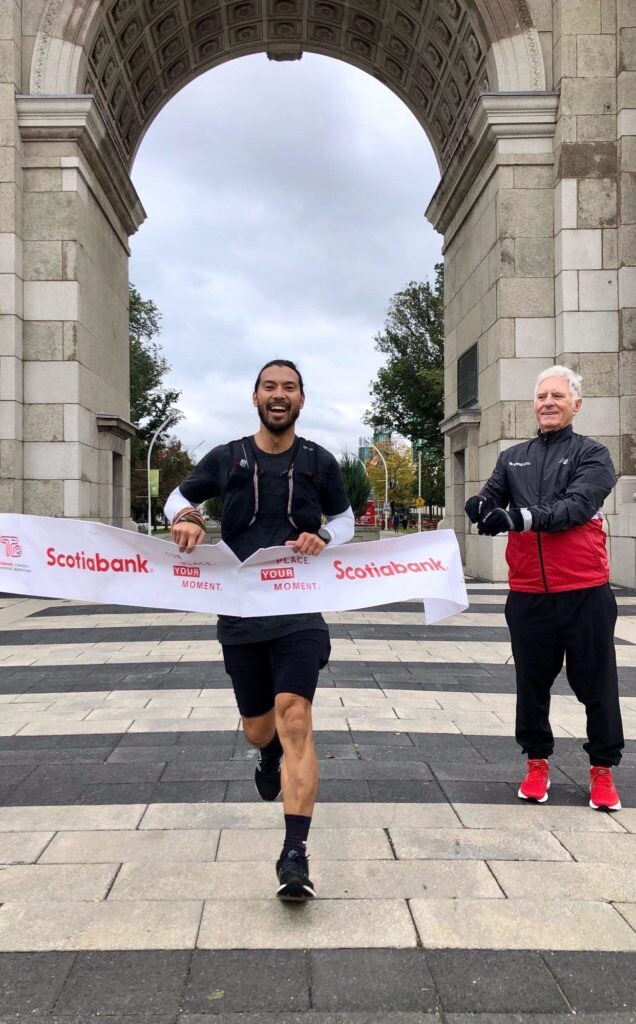
Instead of approaching running from a competitive perspective, Abarquez’s journey led him to a new source of fulfillment: inspiring others to look past limitations through running. Abarquez got the idea for Project42, having run ‘birthday mileage’ on his previous birthdays.
His goal for his 42nd birthday was to run a sub-three-hour marathon, but his planned races were postponed due to the pandemic. After chatting with some of his friends in his Everyday Fit Social Club, Abarquez started Project42.
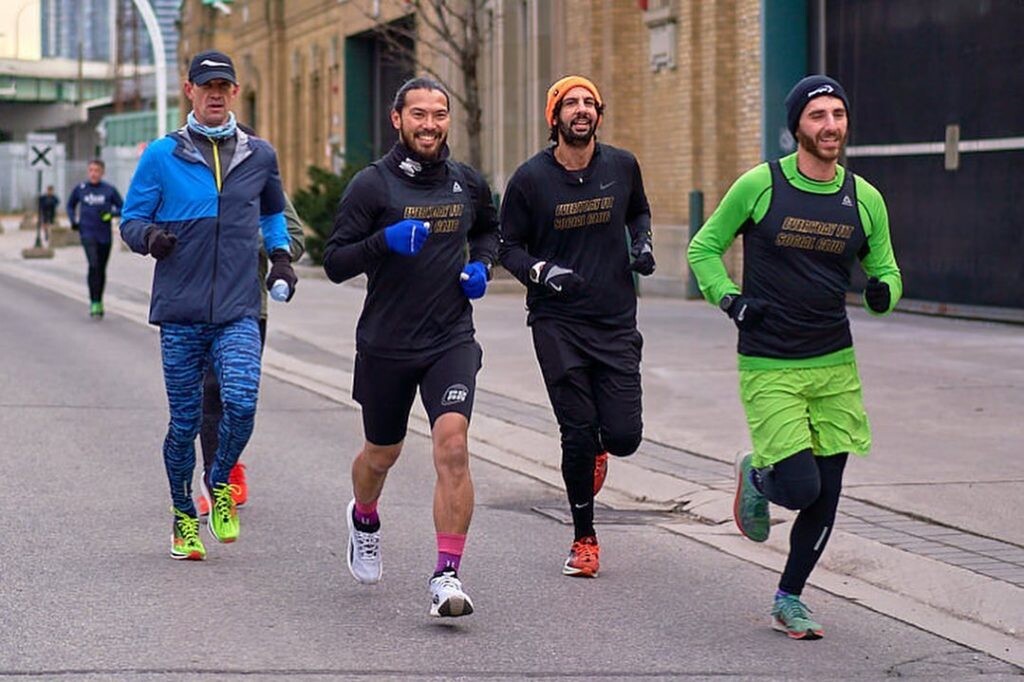
At the start of his project, Abarquez was only running once weekly for his marathon, but as weeks passed, he gained fitness and started to add a few shakeout runs and workouts into his weekly mileage. Abarquez changed up the scenery on a few of his runs, completing marathons in towns across Ontario in Sauble Beach, Hamilton and Brighton.
As races began to open up with the easing of the pandemic restrictions, Abarquez completed three in-person marathons, achieving his Boston qualifying time and sub-three-hour goal at the Muskoka Marathon in October.
“At the start of the challenge, running 42 marathons was daunting,” Abarquez says. “I began to approach every run with excitement and told myself to take things one marathon at a time.” As he began sharing his journey on social media, many runners in the Toronto community started to get behind his project. “Every run I would show up at, people were genuinely excited for me, which kept me positive throughout my challenge.”
Abarquez began running seriously in 2015, but since then, the unofficial Toronto running ambassador has completed multiple marathons and run as a pacer for several more. An accomplishment he’ll never forget is when he finished his first 100-miler. “The ultra community taught me to be optimistic – everyone in an ultra race wants you to succeed,” says Abarquez.
“I had fears of course, and at the start, I wasn’t sure if I could do this,” says Abarquez. “There was never a day I didn’t want to be out there, running.” Several sponsors were on board alongside Abarquez for Project42, including Rally Beer, Nuun Hydration, Reebok, Undefined (socks) and Endurance Tap fuel. His friend Saul Weiss supported Abarquez on the bike for 36 of his 42 marathons and ran the entire distance himself on two occasions.
Throughout the project, Abarquez supported Hospice Toronto, a non-profit organization providing palliative care for terminally ill patients. He also contributed towards the Scarborough Health Network, which helped his cousin beat cancer 11 years ago.
In terms of what’s next for Abarquez, he plans on changing his running shoes to snowshoes this winter as he plans to run a self-supported snowshoe marathon.
(12/09/2021) ⚡AMPby Marley Dickinson
Joint Discomfort: What Can Be Done?
At a younger age, the human body is stronger and more vibrant. As one grows older, however, it is not unusual to start experiencing bodily discomforts and diminished overall strength. Flexibility also suffers the aging blow, which is why you will often see older folks looking a bit stiff and slow. For the same reasons, many people also experience joint pain as they approach their sunset years.
Now, joint pain affects around a third of adults, with the knees, shoulders, and hips being the most commonly affected areas. Alongside the pain, joint pain is often accompanied by discomfort, soreness, and a decreased range of movement. These aches and pains aren’t always ailments that can be treated. That is to say, the most we can do is learn to handle and cope with the pain. With that in mind, let’s look at how you may effectively deal with joint pain.

Physical Therapy and Support Devices
There are a variety of ways you can get relief from joint pain without taking medicine. For starters, excessive strain on your knees from excess weight could be the source of your knee pain. As a result, lowering weight can be an excellent way to help ease your pain, and this is also where knee braces come in. To make your knees even stronger while soothing the pain, knee braces can help. If you read full article coverage by Adam on the Best Knee Braces, you will learn the different types of knee braces for different situations. This will help you decide if you need one and which one you should get.

All the same, physical activity can help alleviate weight loss while easing knee pain. Exercising and eating a nutritious diet at the same time can help you reach your ideal weight. Cycling, swimming, and jogging are all low-impact exercises that can help you manage your joint pain. High-impact exercises, on the other hand, should be avoided because the strain will exacerbate the pain. You can get expert advice on the finest types of exercise to participate in.
Medication
If you’ve been suffering from joint pain for a while, you should be aware that there are many types of joint pain. The discomfort can be minor at times and intense at other times. Anti-inflammatory medicines, either over-the-counter or prescribed, can help you deal with moderate-to-severe joint discomfort and swelling.
Aspirin, celecoxib, ibuprofen, and naproxen are examples of these medications. Because of the numerous cases of joint pain, these medications are widely available in any pharmacy. However, you should be aware that some of these medications have side effects. This is why it is preferable to obtain these medications with a prescription from a licensed physician.Acetaminophen can be used to relieve minor discomfort that is not accompanied by significant edema. However, you must exercise extreme caution when using these medications because large doses might cause drug-induced liver damage, especially if you drink alcohol. You’ll need stronger medicines if you have significant joint problems. This necessitates the use of more potent opioids. However, because these drugs are known to cause drowsiness, this is why you must obtain them with a doctor’s prescription.
Home Treatment
Joint discomfort, as previously stated, can be a major annoyance, causing you agony and lowering the quality of your life. Depending on the causes and type of joint pain you are suffering from, it pays to know how to handle discomfort. Aside from medication and physical therapy, there are a few low-cost activities you can do to alleviate joint discomfort. Take a look at the following home treatment routines:
Oftentimes, you will find that joint pain is worse in the evenings or after strenuous activity. Participating in these activities will only exacerbate the pain. As a result, if you have frequent joint problems, you should try to rest as much as possible. It’s also a good idea to avoid any activity that causes the pain. This will substantially assist you in dealing with the pain.
If you have a sore injury, ice can help relieve the pain by numbing the nerves in the area. Your joints can be treated in the same way. You can relieve pain by icing these joints for around 15 minutes multiple times.
Supporting or wrapping the afflicted joint can help with the pain. This can be done when the discomfort is significantly worse than usual. The bandage will keep the joint from moving, reducing pain.
Elevating your joint above the level of your heart can offer some relief from pain. Elevating an injury above the level of your heart reduces swelling by allowing fluid to flow away from the affected area.
Joint discomfort can have a significant impact on one’s quality of life. This is especially true if you have no notion of how to handle it. While medication is one option, you should also be aware of the various alternative strategies for dealing with aching joints.
(12/08/2021) ⚡AMPby Colorado Runner
Do you need to drink electrolytes in the winter?
Hydration is top of mind for most runners during the hot summer months, but when the winter rolls around, our concern for staying hydrated tends to drop along with the temperature.
While you may be sweating less when it’s cold out, maintaining your fluid and electrolyte balance during the winter is still important if you want to feel and perform at your best.

Dehydration can sneak up on you in the cold weather
In the colder weather, we don’t experience the same psychological and physiological triggers to remind us to drink water, but that doesn’t mean we don’t need to drink. In fact, there are several ways winter conditions can actually make you more dehydrated.

Cold, dry air: Cold air contains less moisture than warm air, so your lungs actually have to moisturize the air every time you take a breath. On top of that, when you’re not out for a run, you’re likely spending most of your time in heated buildings, which can also be very dry during the winter months. These dry conditions rob the body of a tiny bit of water every time you inhale, which can add up over the course of a run.
Sweat evaporation: Sweat evaporates very quickly in the cold, so you arrive at the end of a run with relatively dry clothes compared to the summer. This can give you a false impression of how much you were actually sweating during your run, so you may not think you need to drink a whole lot to replace what you’ve lost.
Cold diuresis: Your blood flow is constricted in the winter, which can cause your blood pressure to increase. To counteract this increase, your body tries to rid itself of some of the water in your blood by increasing urine output, which can contribute to dehydration.
Do you need electrolytes in the winter?
With all of that in mind, the rules around hydration in the winter are not that different from the rules in the summer. You may, however, need to be more intentional about your fluid intake during the winter because it’s easy to forget you need to hydrate when you’re not a sweaty mess at the end of every run.
Just like in the summer, when your run is less than an hour, water is just fine for replacing fluid lost through sweat and respiration. If you’re running for more than an hour, you should rehydrate with an electrolyte beverage to replace sodium, potassium and other electrolytes lost through sweat. There are plenty of great hydration products on the market, and if you’re struggling with muscle cramps during your runs or you’re simply feeling sluggish and tired every time you lace up your shoes, dehydration or an electrolyte imbalance could be the culprit.
(12/08/2021) ⚡AMPby Brittany Hambleton
Andrew Oberle runs marathon nine years after being mauled by chimpanzees
He was told that he would never be able to run again after the chimpanzee attack.
On the tenth anniversary of his first marathon in 2011, Andrew Oberle of St. Louis, Mo., returned to the Rock ‘n’ Roll San Antonio Marathon eager to complete his second. This year’s marathon was meaningful for Oberle, as his athletic ability was set back nine years ago while volunteering with animals in South Africa. Oberle was viciously mauled by chimpanzees and was left in critical condition, fighting for his life.
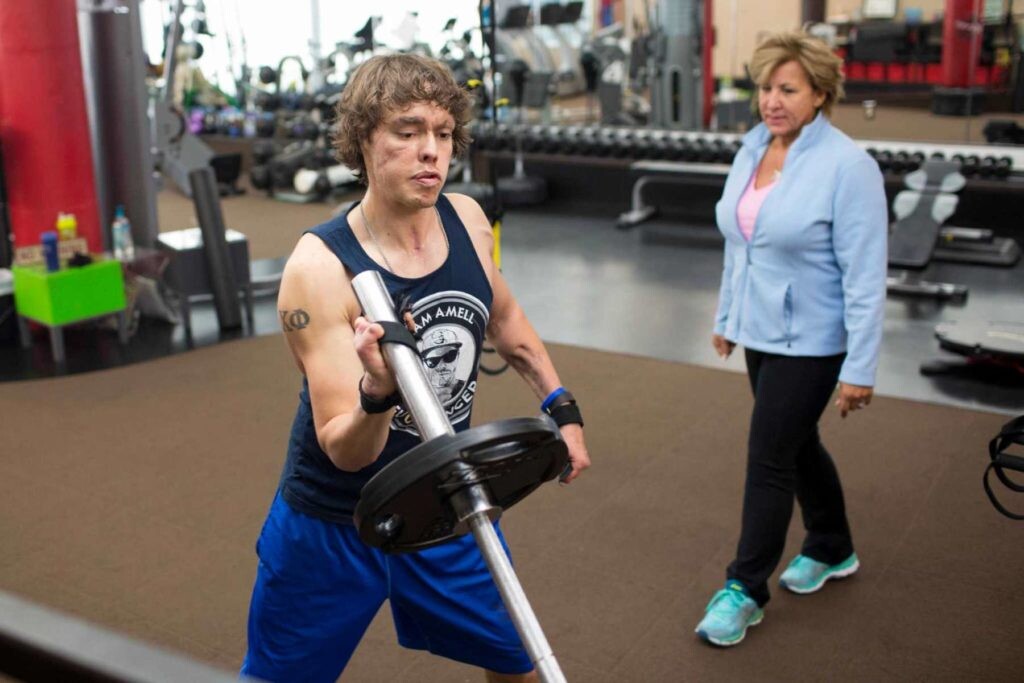
Although Oberle has always shown an interest in running, he was told he would never be able to run again. At the 2021 San Antonio Marathon, he redefined the odds finishing in 5:57:55, with the help of modern-day prosthetics.
The attack shredded parts of his nose, ears, hands and feet, requiring him to be put in an induced coma for two weeks and endure 26 surgeries. Oberle now sports a collection of carbon-fibre prosthetics on his hands and legs to assist him during exercise.
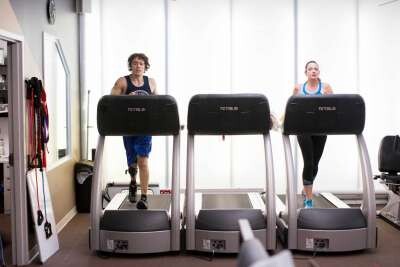
During his rehabilitation process, Oberle was inspired by Paralympians at the London Olympics. In a 2017 interview with Men’s Health, Oberle said that he was lying there after his accident feeling sorry for himself, but seeing Paralympians doing incredible things with far worse injuries motivated him to get back to his active lifestyle.
Oberle began running again three years after his surgery in 2015 at a local 5K, where he placed third in his 25-29 age category in 31:50. He also ran the half marathon at the 2020 Rock ‘n’ Roll race weekend, finishing in a time of 2:42:07.
(12/08/2021) ⚡AMP
by Marley Dickinson
Rock N Roll San Antonio
Take a running tour through San Antonio with live entertainment along the course. Then celebrate your finish with a festival, beer garden and headliner concert! The end of fall 2019 brings the 12th annual running of San Antonio’s Rock ‘n’ Roll Marathon & Half Marathon, which — like its counterparts in San Diego and Virginia Beach— features live bands to...
more...




